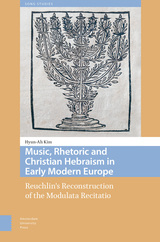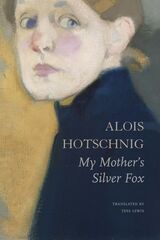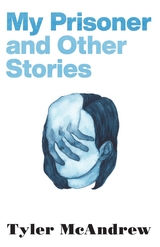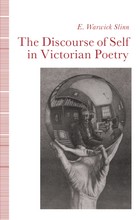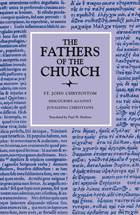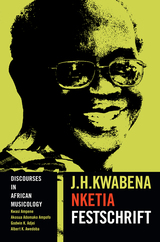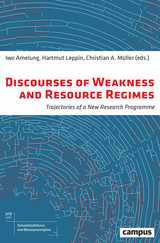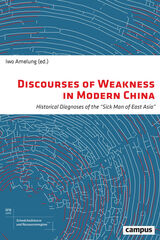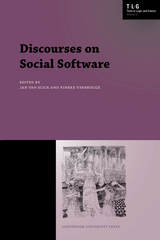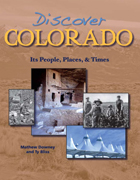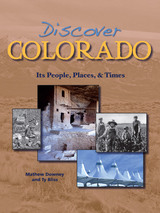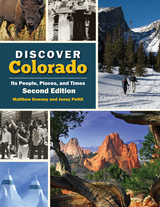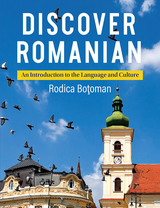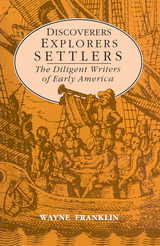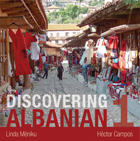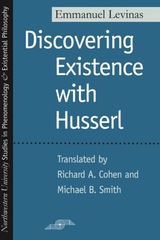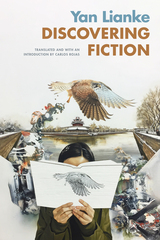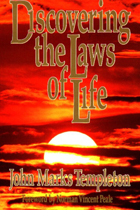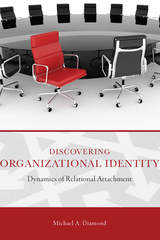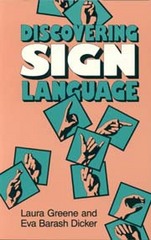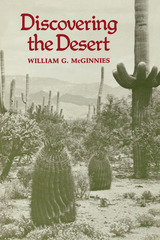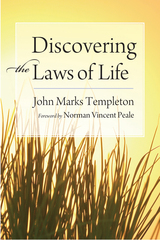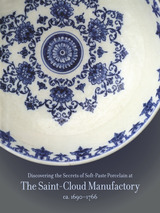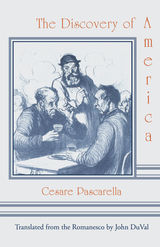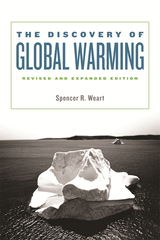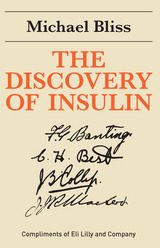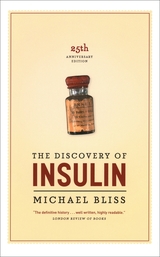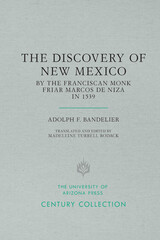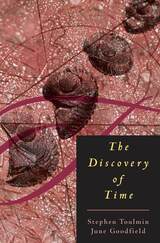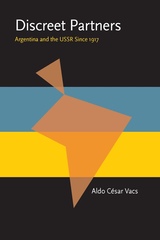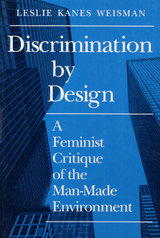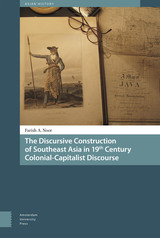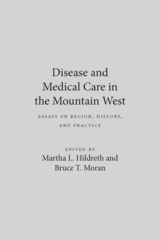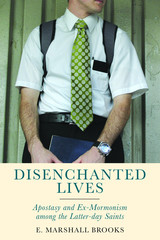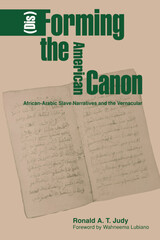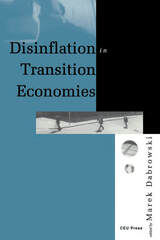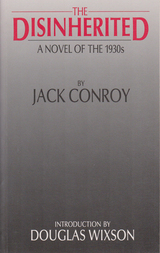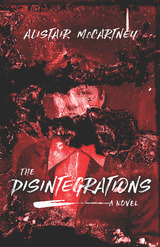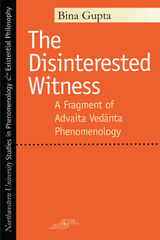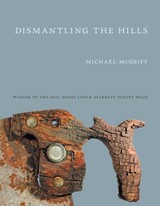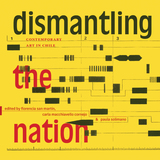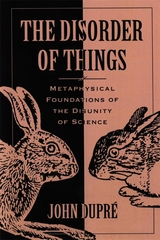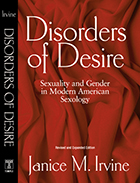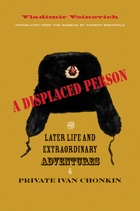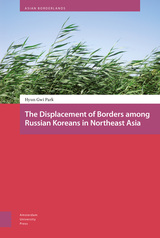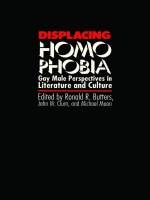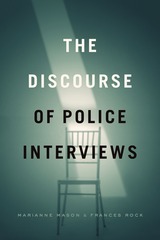 The Discourse of Police Interviews
Edited by Marianne Mason and Frances Rock
University of Chicago Press, 2020 Forensic linguistics, or the study of language and the law, is a growing field of scholarly and public interest with an established research presence. The Discourse of Police Interviews aims to further the discussion by analyzing how police interviews are constructed and used to investigate and prosecute crimes.
The first book to focus exclusively on the discourses of police interviewing, The Discourse of Police Interviews examines leading debates, approaches, and topics in contemporary police interview research. Among other topics, the book explores the sociolegal, psychological, and discursive framework of popular police interview techniques employed in the United States and the United Kingdom, such as PEACE and Reid, and the discursive practices of institutional representatives like police officers and interpreters that can influence the construction and quality of linguistic evidence. Together, the contributions situate the police interview as part of a complex, and multistage, criminal justice process. The book will be of interest to both scholars and practitioners in a variety of fields, such as linguistic anthropology, interpreting studies, criminology, law, and sociology.
Discourse on the Origins of Inequality (Second Discourse), Polemics, and Political Economy
Jean-Jacques Rousseau
Dartmouth College Press, 1993 Includes the Second Discourse (complete with the author’s extensive notes), contemporary critiques by Voltaire, Diderot, Bonnet, and LeRoy, Rousseau’s replies (some never before translated), and Political Economy, which first outlined principles that were to become famous in the Social Contract. This is the first time that the works of 1755 and 1756 have been combined with careful commentary to show the coherence of Rousseau’s “political system.” The Second Discourse examines man in the true “state of nature,” prior to the formation of the first human societies, tracing the “hypothetical history” of political society and social inequality as they developed out of natural equality and independence.
Discourse on the Sciences and Arts (First Discourse) and Polemics
Jean-Jacques Rousseau
Dartmouth College Press, 1992 Contains the entire First Discourse, contemporary attacks on it, Rousseau’s replies to his critics, and his summary of the debate in his preface to Narcissus. A number of these texts have never before been available in English. The First Discourse and Polemics demonstrate the continued relevance of Rousseau’s thought. Whereas his critics argue for correction of the excesses and corruptions of knowledge and the sciences as sufficient, Rousseau attacks the social and political effects of the dominant forms of scientific knowledge.
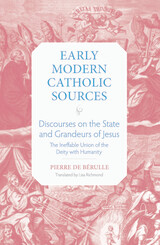 Discourse on the State and Grandeurs of Jesus: The Ineffable Union of the Diety with Humanity
Pierre de Bérulle
Catholic University of America Press, 2023 Pierre de Bérulle (1575–1629) is one of the foremost personalities of early modern Catholicism. As the founder of the “French school” of spirituality, he has exercised a profound influence on the Church from the seventeenth century to the present day. Until now, however, very little of Bérulle’s writings have been available in English. This volume provides the first complete English translation of his best-known work, first printed in Paris in 1623 and titled Discourses on the State and Grandeurs of Jesus, by the Ineffable Union of the Deity with Humanity, and the Submission and Servitude that Is Due Him and His Most Holy Mother in Response to This Wondrous State. Composed in his maturity, this work expresses Bérulle’s theology of the Man-God, whose self-emptying has enabled us to become “capable” of God.
In contrast to other spiritual writers who taught that mystical union with God follows the extinction of all sensory and conceptual awareness and all activity of willing, Bérulle’s focus is on the faithful soul’s participation in what he calls Jesus’ “states,” or inner dispositions. The state that Bérulle describes and honors supremely in this text is Jesus’ state of self-emptying in the mystery of the Incarnation. In the hypostatic union, our humanity in Christ is lifted up to heaven, and Christ is the first fruit of humanity-made-divine, the “firstborn among many brothers.” Through him we become children of God by adoption, participants in God’s divine being.
This is an outstanding translation, conveying not only the meaning but also the beauty and rhetorical features of the original. The Discourses will repay reading as a poignant source of personal devotion, a primary text of the Catholic Reformation, and a classic of spiritual theology.
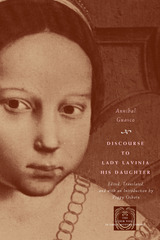 Discourse to Lady Lavinia His Daughter
Annibal Guasco
University of Chicago Press, 2003 When eleven-year-old Lavinia Guasca began her new life as a lady-in-waiting at the court of Turin, she brought with her a parting gift from her father Annibal (1540-1619): a detailed guidebook he wrote to help steer her through the many pitfalls of court life. Lavinia had her father's Discourse published in 1586; this English translation is the first version published in any form since that time.
The Discourse displays an incredibly far-sighted view of women's education. Annibal thought gifted young girls should develop their talents and apply them to careers outside the home. In the Discourse, he details the unique and extremely rigorous educational program to which he had subjected Lavinia almost from the cradle with this end in mind. To complete Lavinia's education, Annibal filled the Discourse with advice on spirituality and morality, health and beauty, and how to behave at court—everything a well-bred lady-in-waiting would need to know. This edition also includes an appendix that traces the later events of Lavinia's life through excerpts from her father's letters.
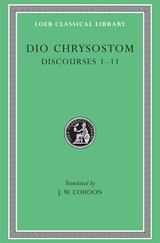 Discourses 1–11
Dio Chrysostom
Harvard University Press The man with the golden mouth.
Dio Cocceianus Chrysostomus (AD ca. 40–ca. 120), of Prusa in Bithynia, Asia Minor, inherited with his brothers large properties and debts from his generous father Pasicrates. He became a skilled rhetorician hostile to philosophers. But in the course of his travels he went to Rome in Vespasian’s reign (69–79) and was converted to Stoicism. Strongly critical of the emperor Domitian (81–96) he was about 82 banned by him from Italy and Bithynia and wandered in poverty, especially in lands north of the Aegean, as far as the Danube and the primitive Getae. In 97 he spoke publicly to Greeks assembled at Olympia, was welcomed at Rome by emperor Nerva (96–98), and returned to Prusa. Arriving again at Rome on an embassy of thanks about 98–99 he became a firm friend of emperor Trajan. In 102 he traveled to Alexandria and elsewhere. Involved in a lawsuit about plans to beautify Prusa at his own expense, he stated his case before the governor of Bithynia, Pliny the Younger, 111–112. The rest of his life is unknown.
Nearly all of Dio’s extant Discourses (or Orations) reflect political concerns (the most important of them dealing with affairs in Bithynia and affording valuable details about conditions in Asia Minor) or moral questions (mostly written in later life; they contain much of his best writing). Some philosophical and historical works, including one on the Getae, are lost. What survives of his achievement as a whole makes him prominent in the revival of Greek literature in the last part of the first century and the first part of the second.
The Loeb Classical Library edition of Dio Chrysostom is in five volumes.
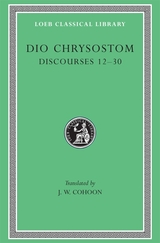 Discourses 12–30
Dio Chrysostom
Harvard University Press The man with the golden mouth.
Dio Cocceianus Chrysostomus (AD ca. 40–ca. 120), of Prusa in Bithynia, Asia Minor, inherited with his brothers large properties and debts from his generous father Pasicrates. He became a skilled rhetorician hostile to philosophers. But in the course of his travels he went to Rome in Vespasian’s reign (69–79) and was converted to Stoicism. Strongly critical of the emperor Domitian (81–96) he was about 82 banned by him from Italy and Bithynia and wandered in poverty, especially in lands north of the Aegean, as far as the Danube and the primitive Getae. In 97 he spoke publicly to Greeks assembled at Olympia, was welcomed at Rome by emperor Nerva (96–98), and returned to Prusa. Arriving again at Rome on an embassy of thanks about 98–99 he became a firm friend of emperor Trajan. In 102 he traveled to Alexandria and elsewhere. Involved in a lawsuit about plans to beautify Prusa at his own expense, he stated his case before the governor of Bithynia, Pliny the Younger, 111–112. The rest of his life is unknown.
Nearly all of Dio’s extant Discourses (or Orations) reflect political concerns (the most important of them dealing with affairs in Bithynia and affording valuable details about conditions in Asia Minor) or moral questions (mostly written in later life; they contain much of his best writing). Some philosophical and historical works, including one on the Getae, are lost. What survives of his achievement as a whole makes him prominent in the revival of Greek literature in the last part of the first century and the first part of the second.
The Loeb Classical Library edition of Dio Chrysostom is in five volumes.
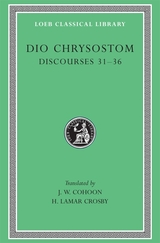 Discourses 31–36
Dio Chrysostom
Harvard University Press The man with the golden mouth.
Dio Cocceianus Chrysostomus (AD ca. 40–ca. 120), of Prusa in Bithynia, Asia Minor, inherited with his brothers large properties and debts from his generous father Pasicrates. He became a skilled rhetorician hostile to philosophers. But in the course of his travels he went to Rome in Vespasian’s reign (69–79) and was converted to Stoicism. Strongly critical of the emperor Domitian (81–96) he was about 82 banned by him from Italy and Bithynia and wandered in poverty, especially in lands north of the Aegean, as far as the Danube and the primitive Getae. In 97 he spoke publicly to Greeks assembled at Olympia, was welcomed at Rome by emperor Nerva (96–98), and returned to Prusa. Arriving again at Rome on an embassy of thanks about 98–99 he became a firm friend of emperor Trajan. In 102 he traveled to Alexandria and elsewhere. Involved in a lawsuit about plans to beautify Prusa at his own expense, he stated his case before the governor of Bithynia, Pliny the Younger, 111–112. The rest of his life is unknown.
Nearly all of Dio’s extant Discourses (or Orations) reflect political concerns (the most important of them dealing with affairs in Bithynia and affording valuable details about conditions in Asia Minor) or moral questions (mostly written in later life; they contain much of his best writing). Some philosophical and historical works, including one on the Getae, are lost. What survives of his achievement as a whole makes him prominent in the revival of Greek literature in the last part of the first century and the first part of the second.
The Loeb Classical Library edition of Dio Chrysostom is in five volumes.
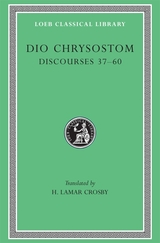 Discourses 37–60
Dio Chrysostom
Harvard University Press The man with the golden mouth.
Dio Cocceianus Chrysostomus (AD ca. 40–ca. 120), of Prusa in Bithynia, Asia Minor, inherited with his brothers large properties and debts from his generous father Pasicrates. He became a skilled rhetorician hostile to philosophers. But in the course of his travels he went to Rome in Vespasian’s reign (69–79) and was converted to Stoicism. Strongly critical of the emperor Domitian (81–96) he was about 82 banned by him from Italy and Bithynia and wandered in poverty, especially in lands north of the Aegean, as far as the Danube and the primitive Getae. In 97 he spoke publicly to Greeks assembled at Olympia, was welcomed at Rome by emperor Nerva (96–98), and returned to Prusa. Arriving again at Rome on an embassy of thanks about 98–99 he became a firm friend of emperor Trajan. In 102 he traveled to Alexandria and elsewhere. Involved in a lawsuit about plans to beautify Prusa at his own expense, he stated his case before the governor of Bithynia, Pliny the Younger, 111–112. The rest of his life is unknown.
Nearly all of Dio’s extant Discourses (or Orations) reflect political concerns (the most important of them dealing with affairs in Bithynia and affording valuable details about conditions in Asia Minor) or moral questions (mostly written in later life; they contain much of his best writing). Some philosophical and historical works, including one on the Getae, are lost. What survives of his achievement as a whole makes him prominent in the revival of Greek literature in the last part of the first century and the first part of the second.
The Loeb Classical Library edition of Dio Chrysostom is in five volumes.
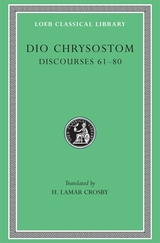 Discourses 61–80
Dio Chrysostom
Harvard University Press The man with the golden mouth.
Dio Cocceianus Chrysostomus (AD ca. 40–ca. 120), of Prusa in Bithynia, Asia Minor, inherited with his brothers large properties and debts from his generous father Pasicrates. He became a skilled rhetorician hostile to philosophers. But in the course of his travels he went to Rome in Vespasian’s reign (69–79) and was converted to Stoicism. Strongly critical of the emperor Domitian (81–96) he was about 82 banned by him from Italy and Bithynia and wandered in poverty, especially in lands north of the Aegean, as far as the Danube and the primitive Getae. In 97 he spoke publicly to Greeks assembled at Olympia, was welcomed at Rome by emperor Nerva (96–98), and returned to Prusa. Arriving again at Rome on an embassy of thanks about 98–99 he became a firm friend of emperor Trajan. In 102 he traveled to Alexandria and elsewhere. Involved in a lawsuit about plans to beautify Prusa at his own expense, he stated his case before the governor of Bithynia, Pliny the Younger, 111–112. The rest of his life is unknown.
Nearly all of Dio’s extant Discourses (or Orations) reflect political concerns (the most important of them dealing with affairs in Bithynia and affording valuable details about conditions in Asia Minor) or moral questions (mostly written in later life; they contain much of his best writing). Some philosophical and historical works, including one on the Getae, are lost. What survives of his achievement as a whole makes him prominent in the revival of Greek literature in the last part of the first century and the first part of the second.
The Loeb Classical Library edition of Dio Chrysostom is in five volumes.
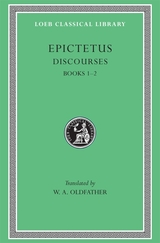 Discourses, Books 1–2
Epictetus
Harvard University Press From slave to sage.
Epictetus was a crippled Greek slave of Phrygia during Nero’s reign (AD 54–68) who heard lectures by the Stoic Musonius before he was freed. Expelled with other philosophers by the emperor Domitian in 89 or 92, he settled permanently in Nicopolis in Epirus. There, in a school that he called “healing place for sick souls” he taught a practical philosophy, details of which were recorded by Arrian, a student of his, and survive in four books of Discourses and a smaller Encheiridion, a handbook that gives briefly the chief doctrines of the Discourses. He apparently lived into the reign of Hadrian (AD 117–138).
Epictetus was a teacher of Stoic ethics, broad and firm in method, sublime in thought, and now humorous, now sad or severe in spirit. How should one live righteously? Our god-given will is our paramount possession, and we must not covet others’. We must not resist fortune. Man is part of a system; humans are reasoning beings (in feeble bodies) and must conform to god’s mind and the will of nature. Epictetus presents us also with a pungent picture of the perfect (Stoic) man.
The Loeb Classical Library edition of Epictetus is in two volumes.
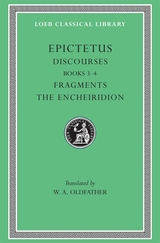 Discourses, Books 3–4. Fragments. The Encheiridion
Epictetus
Harvard University Press From slave to sage.
Epictetus was a crippled Greek slave of Phrygia during Nero’s reign (AD 54–68) who heard lectures by the Stoic Musonius before he was freed. Expelled with other philosophers by the emperor Domitian in 89 or 92, he settled permanently in Nicopolis in Epirus. There, in a school that he called “healing place for sick souls” he taught a practical philosophy, details of which were recorded by Arrian, a student of his, and survive in four books of Discourses and a smaller Encheiridion, a handbook that gives briefly the chief doctrines of the Discourses. He apparently lived into the reign of Hadrian (AD 117–138).
Epictetus was a teacher of Stoic ethics, broad and firm in method, sublime in thought, and now humorous, now sad or severe in spirit. How should one live righteously? Our god-given will is our paramount possession, and we must not covet others’. We must not resist fortune. Man is part of a system; humans are reasoning beings (in feeble bodies) and must conform to god’s mind and the will of nature. Epictetus presents us also with a pungent picture of the perfect (Stoic) man.
The Loeb Classical Library edition of Epictetus is in two volumes.
Discourses in African Musicology: J.H. Kwabena Nketia Festschrift
Kwasi Ampene, Akosua Adomako Ampofo, Godwin K. Adjei, Albert K. Awedoba
Michigan Publishing, 2015 Discourses in African Musicology: J.H. Kwabena Nketia Festschrift highlights the proceedings of a 2011 conference at the University of Ghana in honor of Professor J.H. Kwabena Nketia on his 90th birthday. Professor Nketia was instrumental in shaping the field of ethnomusicology and providing the foundation for an African Musicology. The conference gave scholars and performers an occasion to explore the multi-faceted subject of African music studies, and provided its many attendees the opportunity to extend the scholarly discourse on African music.
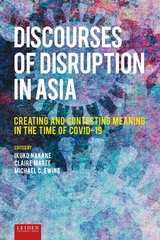 Discourses of Disruption in Asia: Creating and Contesting Meaning in the Time of COVID-19
Nakane Ikuko
Leiden University Press, 2023 Discourses of Disruption in Asia: Creating and Contesting Meaning in the Time of COVID-19 makes a unique contribution to research on meaning making in times of crisis. Using diverse analytical approaches to the study of languages in societies from the Asia-Pacific region, this volume explores the struggles over national identity and manifestations of socio-political issues in the context of disruptions caused by the COVID-19 pandemic. Each chapter interrogates how social actors in diverse communities across the Asia-Pacific region draw on discursive resources to address communication issues, particularly in relation to minoritized groups, claims for accountability, solidarity formation, national identities, government policy announcements, translation, and the efficacy of health-related discourses. This volume will be of interest to students and researchers in fields such as Language and Gender, Linguistic Anthropology, Sociolinguistics, Translation Studies, Social Semiotics, Media Studies, Political Science, Public Health, and Asian Studies.
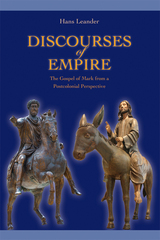 Discourses of Empire: The Gospel of Mark from a Postcolonial Perspective
Hans Leander
SBL Press, 2013 This inventive work explores Mark’s Gospel within the contexts of the empires of Rome and Europe. In a unique dual analysis, the book highlights how empire is not only part of the past but also of a present colonial heritage. The book first outlines postcolonial criticism and discusses the challenges it poses for biblical scholarship, then scrutinizes the complex ways with which nineteenth-century commentaries on Mark’s Gospel interplayed with the formation of European colonial identities. It examines the stance of Mark’s Gospel vis-à-vis the Roman Empire and analyzes the manner in which the fibers of empire within Mark are interwoven, reproduced, negotiated, modified and subverted. Finally, it offers synthesizing suggestions for bringing Mark beyond a colonial heritage. The book’s candid use of postcolonial criticism illustrates how a contemporary perspective can illuminate and shed new light on an ancient text in its imperial setting.
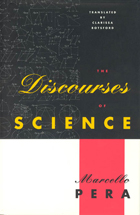 The Discourses of Science
Marcello Pera
University of Chicago Press, 1994 In this much anticipated revision and translation of Scienza e Retorica, Marcello Pera argues that rhetoric is central to the making of scientific knowledge.
Pera begins with an attack of what he calls the "Cartesian syndrome"—the fixation on method common to both defenders of traditional philosophy of science and its detractors. He argues that in assuming the primacy of methodological rules, both sides get it wrong. Scientific knowledge is neither the simple mirror of nature nor a cultural construct imposed by contingent interests, thus we must replace the idea of scientific method with that of scientific rhetoric.
Pera proposes a new dialectics of science to overcome the tension between normative and descriptive philosophies of science by focusing on the rhetoric in the proposition, defense, and argumentation of theories. Examining the uses of rhetoric in debates drawn from Galileo's Dialogues, Darwin's Origins, and the Big Bang-Steady State controversy in cosmology, Pera shows how the conduct of science involves not just nature and the inquiring mind, but nature, the inquiring mind, and a questioning community which, through the process of attack, defense, and dispute, determines what is science. Rhetoric, then, is an essential element in the constitution of science as the practice of persuasive argumentation through which results gain acceptance.
 Discourses of Seduction: History, Evil, Desire, and Modern Japanese Literature
Hosea Hirata
Harvard University Press, 2005 If the postmodernist ethical onslaught has led to the demise of literature by exposing its political agenda, if all literature is compromised by its entanglement with power, why does literature's subterranean voice still seduce us into reading? Why do the madness and the scandal of transgressive literature, its power to force us to begin anew, its evil, escape the gaze of contemporary literary criticism? Why do we dare not reject ethics and the ethical approach to literature? If the primary task of literary criticism is to correct others' ethical missteps, should we not begin by confronting the seductiveness of ethics, our desire for ethics, the pleasure we take in being ethical? And what is the relationship between ethics and history in the study of literature? What would be the ethical consequences of an erasure of history from literary criticism?
In a series of essays on the writings of Kawabata Yasunari, Murakami Haruki, Karatani Kjin, Furui Yoshikichi, Mishima Yukio, Oe Kenzaburo, Natsume Soseki, and Kobayashi Hideo, Hosea Hirata visits the primal force of the scandalous in an effort to repeat (in the Kierkegaardian sense) the originary scene that initiates the obscure yet insistent poetry that is literature and to confront the questions raised.
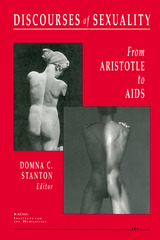 Discourses of Sexuality: From Aristotle to AIDS
Donna C. Stanton, Editor
University of Michigan Press, 1993 Michael Foucault called sex “the explanation for everything, our master key.” In Discourses of Sexuality, fourteen distinguished scholars, artists, and critics examine sexuality from a fascinating array of perspectives. The book’s opening section reopens the question of “the history of sexuality;” it is followed by “Regimes of Knowledge and Desire,” which explores gender and sexuality in the Elizabethan period, sexual desire and the market economy during the Industrial Revolution, and Freud’s notions of sexuality of “perversion.” The next section, “The Constructed Body,” examines conceptions, representations, and implications of the body through written and visual representation. The last part of the book, “AIDS and the Crisis of Modernity,” looks at the place of AIDS in the study of sexuality, provides an analysis of Nicholas Nixon’s portraits of people with AIDS, and demonstrates the importance of rediscovering values that help us to live with human variety and social diversity.
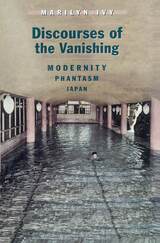 Discourses of the Vanishing: Modernity, Phantasm, Japan
Marilyn Ivy
University of Chicago Press, 1995 Japan today is haunted by the ghosts its spectacular modernity has generated. Deep anxieties about the potential loss of national identity and continuity disturb many in Japan, despite widespread insistence that it has remained culturally intact. In this provocative conjoining of ethnography, history, and cultural criticism, Marilyn Ivy discloses these anxieties—and the attempts to contain them—as she tracks what she calls the vanishing: marginalized events, sites, and cultural practices suspended at moments of impending disappearance.
Ivy shows how a fascination with cultural margins accompanied the emergence of Japan as a modern nation-state. This fascination culminated in the early twentieth-century establishment of Japanese folklore studies and its attempts to record the spectral, sometimes violent, narratives of those margins. She then traces the obsession with the vanishing through a range of contemporary reconfigurations: efforts by remote communities to promote themselves as nostalgic sites of authenticity, storytelling practices as signs of premodern presence, mass travel campaigns, recallings of the dead by blind mediums, and itinerant, kabuki-inspired populist theater.
Discourses of Weakness and Resource Regimes: Trajectories of a New Research Program
Edited by Iwo Amelung, Hartmut Leppin and Christian A. Müller
Campus Verlag, 2018 The acquisition and deployment of resources—natural and otherwise—will always be at the forefront of geopolitical discourse. At a time when the finite nature of these resources becomes clearer every day, that’s especially true. This book uses a humanities-influenced lens to examine how ideas of weakness affect the stockpiling and usage of resources, delving into the question of self-assessments by people and states alike can influence their handling of resources.
Discourses of Weakness in Modern China: Historical Diagnoses of the "Sick Man of East Asia"
Edited by Iwo Amelung
Campus Verlag, 2018 From the time of China’s defeat in the Sino-Japanese war of 1894–95 until the 1930s, the assumption that China was a “weak state” dominated political discourse in China and beyond. In those discussions, China was seen as lacking competitiveness in a world that was increasingly being understood in harsh Darwinian terms. Aiming to better understand contemporary China’s self-image and identity, this volume traces both the emergence of the narrative of China’s alleged “national ruin” and the discursive construction of China as the “Sick Man of East Asia.”
Discourses on Dante
C.H. Grandgent
Harvard University Press Professor Grandgent has here gathered various addresses and poems that cluster about the Dante celebration of 1921. Its eight essays range over a wide variety of topics, from an inspiring statement of Dante’s meaning for the twentieth century to a study of his prosody. The general reader will accordingly find it an attractive introduction to the “majesty” of Dante's thought, while the professional student of the subject will gain from it fresh interpretations and new light upon important scholarly details. Throughout the book are scattered fragments of translation from Dante's works and from his contemporaries’ poetry; the volume, moreover, begins with a sestina and ends with a sonnet, both of which reveal Professor Grandgent’s skill as an original poet.
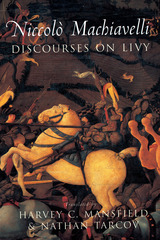 Discourses on Livy
Niccolò Machiavelli
University of Chicago Press, 1998 Discourses on Livy is the founding document of modern republicanism, and Harvey C. Mansfield and Nathan Tarcov have provided the definitive English translation of this classic work. Faithful to the original Italian text, properly attentive to Machiavelli's idiom and subtlety of thought, it is eminently readable. With a substantial introduction, extensive explanatory notes, a glossary of key words, and an annotated index, the Discourses reveals Machiavelli's radical vision of a new science of politics, a vision of "new modes and orders" that continue to shape the modern ethos.
"[Machiavelli] found in Livy the means to inspire scholars for five centuries. Within the Discourses, often hidden and sometimes unintended by their author, lie the seeds of modern political thought. . . . [Mansfield and Tarcov's] translation is careful and idiomatic."—Peter Stothard, The Times
"Translated with painstaking accuracy—but also great readability."—Weekly Standard
"A model of contemporary scholarship and a brave effort at Machiavelli translation that allows the great Florentine to speak in his own voice."—Choice
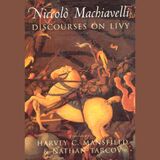 Discourses on Livy
Niccolò Machiavelli
University of Chicago Press, 1996 Discourses on Livy is the founding document of modern republicanism, and Harvey C. Mansfield and Nathan Tarcov have provided the definitive English translation of this classic work. Faithful to the original Italian text, properly attentive to Machiavelli's idiom and subtlety of thought, it is eminently readable. With a substantial introduction, extensive explanatory notes, a glossary of key words, and an annotated index, the Discourses reveals Machiavelli's radical vision of a new science of politics, a vision of "new modes and orders" that continue to shape the modern ethos.
"[Machiavelli] found in Livy the means to inspire scholars for five centuries. Within the Discourses, often hidden and sometimes unintended by their author, lie the seeds of modern political thought. . . . [Mansfield and Tarcov's] translation is careful and idiomatic."—Peter Stothard, The Times
"Translated with painstaking accuracy—but also great readability."—Weekly Standard
"A model of contemporary scholarship and a brave effort at Machiavelli translation that allows the great Florentine to speak in his own voice."—Choice
Discourses on Social Software
Edited by Jan van Eijck and Rineke Verbrugge
Amsterdam University Press, 2009
Can computer science solve our social problems? With Discourses on Social Software Jan Van Eijck and Rineke Verbrugge suggest it can, offering the reader a fascinating introduction to the innovative field of social software. Compiling a series of discussions involving a logician, a computer scientist, a philosopher, and a number of researchers from various other academic fields, this collection details the many ways in which the seemingly abstract disciplines of logic and computer science can be used to analyze and solve contemporary social problems.
Discover Colorado, Second Edition
Matthey Downey
University Press of Colorado, 2015 An interactive text that engages students through activities, questions, color photographs, maps, and drawings, Discover Colorado presents the state’s fascinating people, places, and times from the Paleo-Indians to the present. Addressing the disciplinary perspectives of geography, history, economics, and government and citizenship and emphasizing civic participation, decision making, and historical and geographic thinking, this comprehensive book will involve and engage students in learning about Colorado’s exciting history.
Discover Romanian: An Introduction to the Language and Culture
Rodica Bo?oman
Ohio State University Press, 1995 Discover Romanian's thorough treatment of both language and culture makes it an effective learning tool in classroom and individualized settings.
This comprehensive introduction to Romanian for English-speaking students emphasizes communication with a complete treatment of grammar, an extensive vocabulary, and a focus on the four major language skills—listening, speaking, reading, and writing. Cultural information, an integral part of the textbook, is presented both formally, in sections on culture and civilization, and informally, as the setting for dialogues and exercises. Tables of verb conjugations and a glossary round out the book's primary materials.
Straightforward and accessible, Discover Romanian is an essential textbook for all those teaching and learning the language and provides important information for those seeking to understand Romanian culture.
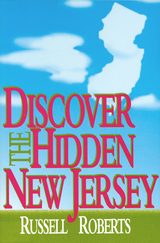 Discover the Hidden New Jersey
Roberts, Russell
Rutgers University Press, 1995 Did you know— —that a New Jerseyan was the first president of the United States?
—that New Jersey was the site of the first organized college football game?
—that New Jersey was the location of one of the most devastating espionage attacks of World War I?
—that the heroics of a New Jersey woman saved thousands of people from dying of yellow fever? These and other fascinating stores can be found in Discover the Hidden New Jersey, a treasury of New Jersey stories that celebrate the unique heritage and importance of the Garden State. Russell Roberts has scoured New Jersey, from High Point to Cape May, to bring readers a delightful potpourri of facts, essays, lists, photos, stories, and legends about New Jersey. Readers will learn how New Jersey used to be the center of the motion picture universe, the origin of the Jersey Devil and other popular tall tales, where Norman Mailer and Abbot & Costello were born, where Aaron Burr and Leo, the M-G-M lion, lie buried, and much more. Learn about the geology of New Jersey, find out about the state’s ever-changing weather, and hear about some of the best places to go for the day. All this and more is in Discover the Hidden New Jersey, the ultimate New Jersey book.
Discoverers, Explorers, Settlers: The Diligent Writers of Early America
Wayne Franklin
University of Chicago Press, 1979 "Send those on land that will show themselves diligent writers." So urged the "sailing instructions" prepared for explorer Henry Hudson. With distinctive command of the primary texts created by such "diligent writers" as Columbus, William Bradford, and Thomas Jefferson, Wayne Franklin describes how the New World was created from their new words. The long verbal discovery of America, he asserts, entailed both advance and retreat, sudden insights and blind insistence on old ways of seeing. The discoverers, explorers, and settlers depicted America in words—or via maps, tables, and landscape views—as a complex spatial and political entity, a place where ancient formula and current fact were inevitably at odds.
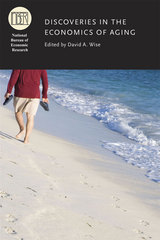 Discoveries in the Economics of Aging
Edited by David A. Wise
University of Chicago Press, 2014 The oldest members of the Baby-Boomer generation are now crossing the threshold of eligibility for Social Security and Medicare with extensive and significant implications for these programs’ overall spending and fiscal sustainability. Yet the aging of the Baby Boomers is just one part of the rapidly changing landscape of aging in the United States and around the world.
The latest volume in the NBER’s Economics of Aging series, Discoveries in the Economics of Aging assembles incisive analyses of the most recent research in this expanding field of study. A substantive focus of the volume is the well-documented relationship between health and financial well-being, especially as people age. The contributors explore this issue from a variety of perspectives within the context of the changing demographic landscape. The first part of the volume explores recent trends in health measurement, including the use of alternative measurement indices. Later contributions explore, among other topics, alternate determinants of health, including retirement, marital status, and cohabitation with family, and the potential for innovations, interventions, and public policy to improve health and financial well-being.
 Discoveries in the Garden
James B. Nardi
University of Chicago Press, 2018 Every square inch of soil is rich with energy and life, and nowhere is this more evident than in the garden. At the tips of our trowels, a sun-driven world of microbes, insects, roots, and stems awaits—and it is a world no one knows better than James Nardi. A charming guide to all things green and growing, Nardi is as at home in prairies, forests, and wetlands as he is in the vegetable patch. And with Discoveries in the Garden, he shows us that these spaces aren’t as different as we might think, that nature flourishes in our backyards, schoolyards, and even indoors. To find it, we’ve only got to get down into the dirt.
Leading us through the garden gate, Nardi reveals the extraordinary daily lives and life cycles of a quick-growing, widely available, and very accommodating group of study subjects: garden plants. Through close observations and simple experiments we all can replicate at home, we learn the hidden stories behind how these plants grow, flower, set seeds, and produce fruits, as well as the vital role dead and decomposing plants play in nourishing the soil. From pollinators to parasites, plant calisthenics to the wisdom of weeds, Nardi’s tale also introduces us to our fellow animal and microbial gardeners, the community of creatures both macro- and microscopic with whom we share our raised beds. Featuring a copse of original, informative illustrations that are as lush as the garden plants themselves, Discoveries in the Garden is an enlightening romp through the natural history, science, beauty, and wonder of these essential green places.
Discovering
Robert Root-Bernstein
Harvard University Press, 1989
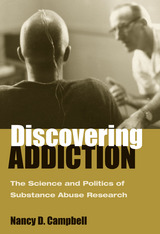 Discovering Addiction: The Science and Politics of Substance Abuse Research
Nancy D. Campbell
University of Michigan Press, 2007 Discovering Addiction brings the history of human and animal experimentation in addiction science into the present with a wealth of archival research and dozens of oral-history interviews with addiction researchers. Professor Campbell examines the birth of addiction science---the National Academy of Sciences's project to find a pharmacological fix for narcotics addiction in the late 1930s---and then explores the human and primate experimentation involved in the succeeding studies of the "opium problem," revealing how addiction science became "brain science" by the 1990s. Psychoactive drugs have always had multiple personalities---some cause social problems; others solve them---and the study of these drugs involves similar contradictions. Discovering Addiction enriches discussions of bioethics by exploring controversial topics, including the federal prison research that took place in the 1970s---a still unresolved debate that continues to divide the research community---and the effect of new rules regarding informed consent and the calculus of risk and benefit. This fascinating volume is both an informative history and a thought-provoking guide that asks whether it is possible to differentiate between ethical and unethical research by looking closely at how science is made.
 Discovering Albanian I Textbook
Linda Mëniku and Héctor Campos
University of Wisconsin Press, 2011 Approximately five million people worldwide speak Albanian. The opening of Albania in the 1990s to broader trading and diplomatic relations with other nations has created a need for better knowledge of the language and culture of this country. This book teaches the student to communicate in everyday situations in the language, with each chapter introducing a new situational context. Students learn to discuss work, vacations, health, and entertainment. Students also learn to practice basic skills such as shopping, ordering tickets, and renting an apartment. Upon completing this textbook, students will be at the A2/B1 level of proficiency on the scale provided by the Common European Framework of Reference for Languages (CEFR).
The textbook includes:
• eighteen lessons based on real-life situations, including three review lessons
• dialogues to help introduce vocabulary and grammatical structures
• comprehension questions and exercises
• related readings at the end of each chapter
• full translations for all examples discussed in grammar sections
• a series of appendixes with numerous charts summarizing main classes of nouns, adjectives, and verbs
• an appendix with the solutions to most of the exercises in the book
• a glossary with all the words in the dialogs and readings.
Discovering Albanian I Workbook
Linda Mëniku and Héctor Campos
University of Wisconsin Press, 2011 A companion workbook offers a rich variety of graded practice exercises in grammar and vocabulary. A key to all the exercises is included at the end of the workbook.
 Discovering Alvarez: Selected Works of Luis W. Alvarez with Commentary by His Students and Colleagues
Edited by Peter Trower
University of Chicago Press, 1987 Luis W. Alvarez has had a breathtakingly varied and important career of discovery, adventure, and invention. The winner of the 1968 Nobel Prize in physics for his work on subatomic particles, Alvarez participated as a scientific observer of the Hiroshima bombing mission, formulated the asteroid theory of dinosaur extinctions, discovered the radioactivity of tritium, took x-rays of the Second Pyramid at Giza, designed the Berkeley proton linear accelerator, first observed fundamental particle resonances, created the variable-focus thin lens, analyzed the Kennedy assassination film, and invented the Ground Control Approach radar system for airplane landings, to name but a few of his experiences and accomplishments.
Discovering Alvarez collects articles by this innovative physicist, documenting his outstanding contributions. The articles, which span his career, are accompanied by a remarkable collection of commentary by the colleagues and students who worked closely with Alvarez on each project or discovery.
 Discovering Big Cat Country: On the trail of tigers and snow leopards
Eric Dinerstein
Island Press, 2013 With their elusive and solitary nature, tigers and snow leopards are a challenge for even the most seasoned field biologists to track and study. Yet scientist and conservation leader Eric Dinerstein began his career in the heart of Nepal’s tiger country and the perilous Himalayan slopes of the snow leopard, where he discovered the joys—and frustrations—of studying wildlife in some of the most unpredictable and remote places on Earth. In Discovering Big Cat Country, Dinerstein tells the story of two formative journeys from his early days as a biologist: two and a half years as a young Peace Corps Volunteer in the jungles of Nepal and later, as a newly-minted Ph.D., an arduous trek to search for snow leopards in the Kashmir region of India. In these chapters, excerpted from Tigerland and other Unintended Destinations, Dinerstein paints an evocative picture of the homelands and habits of two fascinating predators, and recalls local partners and fellow conservationists who inspired him with their passion for wild places.
Discovering Bridget Manningham’s Rivall Friendship: A Seventeenth-Century Manuscript Romance
Jean Brink
Amsterdam University Press, 2025 This collection of essays represents the very first effort to assess the importance of Bridget Manningham’s Rivall Friendship, a seventeenth-century manuscript that concerns the English Civil War, surviving in only one copy at the Newberry Library, Chicago, IL.
Bridget Manningham is introduced as the granddaughter of the sixteenth-century diarist John Manningham and as the older sister of Thomas Manningham who was Bishop of Chichester in the early eighteenth century.
These essays offer definitive analyses of such early modern issues as the intersection of gender and class, linguistic features of early modern syntax, rhetorical defenses of the royalist position, theories of early modern friendship, plot construction and narrative strategies, and the transition from the romance to the novel.
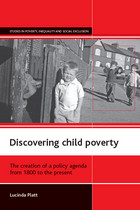 Discovering child poverty: The creation of a policy agenda from 1800 to the present
Lucinda Platt
Bristol University Press, 2005 Child poverty is currently regarded by many as the 'number one' issue in Britain. Yet it has not always been so high on the policy agenda. What were attitudes to poor children 200 years ago? How did child poverty emerge as both a quantifiable and urgent issue? And how did policy makers respond? These are the questions that this book tackles. The book:·[vbTab]presents a broad but sophisticated overview of 200 years of investigation into and responses to the plight of poor children;·[vbTab]identifies key moments and figures of the period;·[vbTab]includes chapters on children and work, education and child poverty research to provide the essential context for the story of the 'discovery' of child poverty.Clearly and accessibly written, this book provides a concise but richly detailed account of the subject. It will appeal to policy makers, practitioners, researchers and all those with an interest in child poverty wishing to understand the antecedents of current research and policy.Studies in poverty, inequality and social exclusion seriesSeries Editor: David Gordon, Director, Townsend Centre for International Poverty Research.Poverty, inequality and social exclusion remain the most fundamental problems that humanity faces in the 21st century. This exciting series, published in association with the Townsend Centre for International Poverty Research at the University of Bristol, aims to make cutting-edge poverty related research more widely available.For other titles in this series, please follow the series link from the main catalogue page.
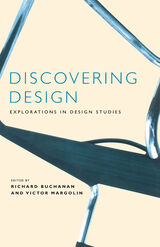 Discovering Design: Explorations in Design Studies
Edited by Richard Buchanan and Victor Margolin
University of Chicago Press, 1995 Discovering Design reflects the growing recognition that the design of the everyday world deserves attention not only as a professional practice but as a subject of social, cultural, and philosophic investigation. Victor Margolin, cofounder and an editor of the journal Design Issues, and Richard Buchanan, also an editor of the journal, bring together eleven essays by scholars in fields ranging from psychology, sociology, and political theory to technology studies, rhetoric, and philosophy. The essayists share the editors' concern, first made clear in Margolin's Design Discourse: History, Theory, Criticism, with the the development of design studies as a field of interdisciplinary research.
The contributors (Gianfranco Zaccai, Albert Borgmann, Richard Buchanan, Augusto Morello, Tufan Orel, Nigel Cross, Victor Margolin, Langdon Winner, Carl Mitcham, Tony Fry, and Ezio Manzini) focus on three broad themes that form a sequence of fundamental issues: how to shape design as a subject matter, how to distinguish the activity of designing in the complex world of action, and how to address the basic questions of value and responsibility that persistently arise in the discussion and practice of design. The editors' introduction provides a useful overview of these questions and offers a multidisciplinary framework for design studies. The essays discuss such topics as the relation of aesthetics to technology, the place of design in social action, the role of the consumer in design decisions, and the need for ethical practice in contemporary design. Manzini's concluding essay shows how the issue of ethics should connect responsible behavior to decisions made every day in the manufacture of objects.
Discovering Existence with Husserl
Emmanuel Levinas
Northwestern University Press, 1997 Contemporary philosophers are increasingly turning to the work of Emmanuel Levinas to bring a consideration of ethics into their own thinking. As an exponent of the phenomenological tradition, Levinas ranks with Heidegger and Sartre; as a disciple of Husserl, he was one of the most independent and original interpreters, testifying to the fruitfulness of Husserl's phenomenology.
In collecting almost all of Levinas's articles on Husserlian phenomenology, this volume gathers together a wealth of thoughtful exposition and interpretation by one of the most important European philosophers of the twentieth century. Levinas's thought is relevant to a broad variety of disciplines and concerns. This volume serves as a reliable introduction for the beginning student, as well as satisfying the expert's more demanding and critical desire for insight into the complexities of Levinas's thought.
Discovering Fiction
Yan Lianke
Duke University Press, 2022 Over the past twenty years, Chinese novelist Yan Lianke has emerged as one of the most important writers in the world. In Discovering Fiction, Yan offers insights into his views on literature and realism, the major works that inspired him, and his theories of writing. He juxtaposes discussions of the high realism of Leo Tolstoy and Lu Xun against Franz Kafka’s modernism and Gabriel García Márquez’s magical realism, charting the relationship between causality, truth, and modes of realism. He also discusses his approach to realism, which he terms “mythorealism”—a way of capturing the world’s underlying truth by relying on the allegories, myths, legends, and dreamscapes that emerge from daily life. Revealing and instructive, Discovering Fiction gives readers an unprecedented look into the mind and art of a literary giant.
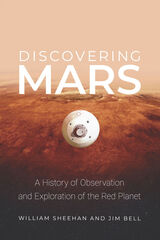 Discovering Mars: A History of Observation and Exploration of the Red Planet
William Sheehan and Jim Bell
University of Arizona Press, 2021 For millenia humans have considered Mars the most fascinating planet in our solar system. We’ve watched this Earth-like world first with the naked eye, then using telescopes, and, most recently, through robotic orbiters and landers and rovers on the surface.
Historian William Sheehan and astronomer and planetary scientist Jim Bell combine their talents to tell a unique story of what we’ve learned by studying Mars through evolving technologies. What the eye sees as a mysterious red dot wandering through the sky becomes a blurry mirage of apparent seas, continents, and canals as viewed through Earth-based telescopes. Beginning with the Mariner and Viking missions of the 1960s and 1970s, space-based instruments and monitoring systems have flooded scientists with data on Mars’s meteorology and geology, and have even sought evidence of possible existence of life-forms on or beneath the surface. This knowledge has transformed our perception of the Red Planet and has provided clues for better understanding our own blue world.
Discovering Mars vividly conveys the way our understanding of this other planet has grown from earliest times to the present. The story is epic in scope—an Iliad or Odyssey for our time, at least so far largely without the folly, greed, lust, and tragedy of those ancient stories. Instead, the narrative of our quest for the Red Planet has showcased some of our species’ most hopeful attributes: curiosity, cooperation, exploration, and the restless drive to understand our place in the larger universe. Sheehan and Bell have written an ambitious first draft of that narrative even as the latest chapters continue to be added both by researchers on Earth and our robotic emissaries on and around Mars, including the latest: the Perseverance rover and its Ingenuity helicopter drone, which set down in Mars’s Jezero Crater in February 2021.
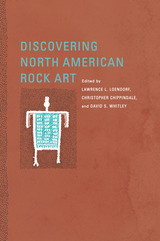 Discovering North American Rock Art
Edited by Lawrence L. Loendorf, Christopher Chippindale, and David S. Whitley
University of Arizona Press, 2005 From the high plains of Canada to caves in the southeastern United States, images etched into and painted on stone by ancient Native Americans have aroused in observers the desire to understand their origins and meanings. Rock paintings and engravings can be found in nearly every state and province, and each region has its own distinctive story of discovery and evolving investigation of the rock art record. Rock art in the twenty-first century enjoys a large and growing popularity fueled by scholarly research and public interest alike. This book explores the history of rock art research in North America and is the only volume in the past twenty-five years to provide coverage of the subject on a continental scale. Written by contributors active in rock art research, it examines sites that provide a cross-section of regions and topics and complements existing books on rock art by offering new information, insights, and approaches to research. The first part of the volume explores different regional approaches to the study of rock art, including a set of varied responses to a single site as well as an overview of broader regional research investigations. It tells how Writing-on-Stone in southern Alberta, Canada, reflects changing thought about rock art from the 1870s to today; it describes the role of avocational archaeologists in the Mississippi Valley, where rock art styles differ on each side of the river; it explores discoveries in southwestern mountains and southeastern caves; and it integrates the investigation of cupules along Georgia’s Yellow River into a full study of a site and its context. The book also compares the differences between rock art research in the United States and France: from the outset, rock art was of only marginal interest to most U.S. archaeologists, while French prehistorians considered cave art an integral part of archaeological research. The book’s second part is concerned with working with the images today and includes coverage of gender interests, government sponsorship, the role of amateurs in research, and chronometric studies. Much has changed in our understanding of rock art since Cotton Mather first wrote in 1714 of a strange inscription on a Massachusetts boulder, and the cutting-edge contributions in this volume tell us much about both the ancient place of these enduring images and their modern meanings. Discovering North American Rock Art distills today’s most authoritative knowledge of the field and is an essential volume for both specialists and hobbyists.
Discovering Organizational Identity: Dynamics of Relational Attachment
Michael A. Diamond
University of Missouri Press, 2016 This book focuses on the theory and practice of understanding and transforming organizations with the goal to discover common ground between groups and individuals. Diamond presents a framework of reflective practice for organizational researchers, scholar-practitioner consultants, executives, managers, and workers in order to promote a more satisfying and humane work-life.
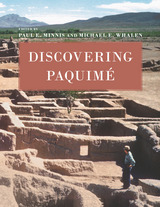 Discovering Paquimé
Edited by Paul E. Minnis and Michael E. Whalen
University of Arizona Press, 2016 In the mid-1560s Spanish explorers marched northward through Mexico to the farthest northern reaches of the Spanish empire in Latin America. They beheld an impressive site known as Casas Grandes in the Mexican state of Chihuahua. Row upon row of walls featured houses and plazas of what was once a large population center, now deserted. Called Casas Grandes (Spanish for “large houses”) but also known as Paquimé, the prehistoric archaeological site may have been one of the first that Spanish explorers encountered. The Ibarra expedition, occurring perhaps no more than a hundred years after the site was abandoned, contained a chronicler named Baltasar de Obregón, who gave to posterity the first description of Paquimé:
". . . many houses of great size, strength, and height . . . six and seven stories, with towers and walls like fortresses for protection and defense against the enemies who undoubtedly used to make war on its inhabitants . . . large and magnificent patios paved with enormous and beautiful stones resembling jasper . . ."
Casas Grandes, now a UNESCO World Heritage Site, is under the purview of the Instituto Nacional de Antropología e Historia, which oversees a world-class museum near the ruins. Paquimé visitors can learn about the site’s history and its excavations, which were conducted under the pioneering research of Charles Di Peso and Eduardo Contreras Sánchez and their colleagues from INAH and the Amerind Foundation.
Based on a half century of modern research since the Joint Casas Grandes Project, this book explores the recent discoveries about important site and its neighbors. Drawing the expertise of fourteen scholars from the United States, Mexico, and Canada, who have long worked in the region, the chapters revel new insights about Paquimé and its influence, bringing this fascinating place and its story to light.
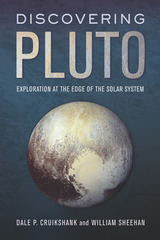 Discovering Pluto: Exploration at the Edge of the Solar System
Dale P. Cruikshank and William Sheehan
University of Arizona Press, 2018 Discovering Pluto is an authoritative account of the exploration of Pluto and its moons, from the first inklings of tentative knowledge through the exciting discoveries made during the flyby of the NASA New Horizons research spacecraft in July 2015. Co-author Dale P. Cruikshank was a co-investigator on the New Horizons mission, while co-author William Sheehan is a noted historian of the Solar System.
Telling the tale of Pluto’s discovery, the authors recount the grand story of our unfolding knowledge of the outer Solar System, from William Herschel’s serendipitous discovery of Uranus in 1781, to the mathematical prediction of Neptune’s existence, to Percival Lowell’s studies of the wayward motions of those giant planets leading to his prediction of another world farther out. Lowell’s efforts led to Clyde Tombaugh’s heroic search and discovery of Pluto—then a mere speck in the telescope—at Lowell Observatory in 1930.
Pluto was finally recognized as the premier body in the Kuiper Belt, the so-called third zone of our Solar System. The first zone contains the terrestrial planets (Mercury through Mars) and the asteroid belt; the second, the gas-giant planets Jupiter through Neptune. The third zone, holding Pluto and the rest of the Kuiper Belt, is the largest and most populous region of the solar system.
Now well beyond Pluto, New Horizons will continue to wend its lonely way through the galaxy, but it is still transmitting data, even today. Its ultimate legacy may be to inspire future generations to uncover more secrets of Pluto, the Solar System, and the Universe.
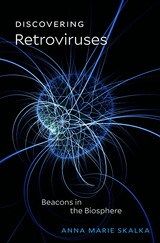 Discovering Retroviruses: Beacons in the Biosphere
Anna Marie Skalka
Harvard University Press, 2018 Approximately eight percent of our DNA contains retroviral sequences that are millions of years old. Through engaging stories of scientific discovery, Anna Marie Skalka explains our evolving knowledge of these ancient denizens of the biosphere and how this understanding has significantly advanced research in genetic engineering, gene delivery systems, and precision medicine.
Discovering Retroviruses begins with the pioneer scientists who first encountered these RNA-containing viruses and solved the mystery of their reproduction. Like other viruses, retroviruses invade the cells of a host organism to reproduce. What makes them “retro” is a unique process of genetic information transfer. Instead of transcribing DNA into RNA as all living cells do, they transcribe their RNA into DNA. This viral DNA is then spliced into the host’s genome, where the cell’s synthetic machinery is co-opted to make new virus particles. The 100,000 pieces of retroviral DNA in the human genome are remnants from multiple invasions of our ancestors’ “germline” cells—the cells that allow a host organism to reproduce. Most of these bits of retroviral DNA are degenerated fossils, but some have been exploited during evolution, with profound effects on our physiology.
Some present-day circulating retroviruses cause cancers in humans and other animals. Others, like HIV, cause severe immunodeficiencies. But retroviruses also hold clues to innovative approaches that can prevent and treat these diseases. In laboratories around the world, retroviruses continue to shed light on future possibilities that are anything but “retro.”
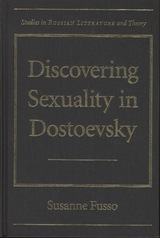 Discovering Sexuality in Dostoevsky
Susanne Fusso
Northwestern University Press, 2008 Most discussions of sexuality in the work of Dostoevsky have been framed in Freudian terms. But Dostoevsky himself wrote about sexuality from a decidedly pre-Freudian perspective. By looking at the views of human sexual development that were available in Dostoevsky's time and that he, an avid reader and observer of his own social context, absorbed and reacted to, Susanne Fusso gives us a new way of understanding a critical element in the writing of one of Russia's literary masters. Beyond discovering Dostoevsky's own views and representations of sexuality as a reflection of his culture and his time, Fusso also explores his artistic treatment of how children and adolescents discover sexuality as part of their growth.
Some of the topics Fusso considers are Dostoevsky's search for an appropriate artistic language for sexuality, a young narrator's experimentation with homoerotic desire and unconventional narrative in A Raw Youth; and Dostoevsky's approach to a young man's sexual development in A Raw Youth and The Brothers Karamazov. She also explores his complex treatment of a child's secret sexuality in his account of the Kroneberg child abuse case in A Writer's Diary; and his conception of the ideal family, a type of family that appears in his works mainly by negative example. Focusing mainly on sexual practices considered "deviant" in Dostoevsky's time--both because these are the practices that his young characters confront and because they offer the most intriguing interpretive problems--Fusso decodes the author's texts and their social contexts. In doing so, she highlights one thread in the intricate thematic weave of Dostoevsky's novels and newly illuminates his artistic process.
Discovering Sign Language
Laura Greene
Gallaudet University Press, 1981 Children learn about different kinds of hearing loss, different sign systems, and the evolution of sign language in other countries, sign language games, and "How the Seasons Came to Be," a story in sign.
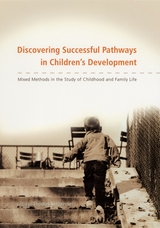 Discovering Successful Pathways in Children's Development: Mixed Methods in the Study of Childhood and Family Life
Edited by Thomas S. Weisner
University of Chicago Press, 2005 Discovering Successful Pathways in Children's Development provides a new perspective on the study of childhood and family life. Successful development is enhanced when communities provide meaningful life pathways that children can seek out and engage. Successful pathways include both a culturally valued direction for development and competence in skills that matter for a child's subsequent success as a person as well as a student, parent, worker, or citizen. To understand successful pathways requires a mix of qualitative, quantitative, and ethnographic methods—the state of the art for research practice among developmentalists, educators, and policymakers alike.
This volume includes new studies of minority and immigrant families, school achievement, culture, race and gender, poverty, identity, and experiments and interventions meant to improve family and child contexts. Discovering Successful Pathways in Children's Development will be of enormous value to everyone interested in the issues of human development, education, and social welfare, and among professionals charged with the task of improving the lives of children in our communities.
Discovering the Desert: The Legacy of the Carnegie Desert Botanical Laboratory
William G. McGinnies
University of Arizona Press, 1981 Now you can share the experiences of the first U.S. scientists who set about discovering the nature of North American deserts. "This is a fascinating account of how these pioneer ecologists laid the foundations for our modern knowledge of plant adaptation to desert environments. . . . It is well done." (American Scientist)
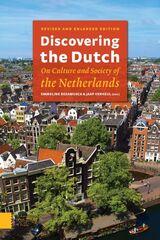 Discovering the Dutch: On Culture and Society of the Netherlands
Edited by Emmeline Besamusca and Jaap Verheul
Amsterdam University Press, 2014 What are the most salient and sparking facts about the Netherlands? This updated edition of 'Discovering the Dutch' tackles the heart of the question of Dutch identity through a number of essential themes that span the culture, history and society of the Netherlands. Running the gamut from the Randstad to the Dutch Golden Age, from William of Orange to Anne Frank, this volume uses a series of vignettes written by academic experts in their fields to address historical and contemporary topics such as immigration, tolerance, and the struggle against water, as well as issues of culture - painting, literature, architecture, and design among them.
All chapters are written by academic experts in their fields who have extensive experience in explaining the many features of "Dutchness" to a foreign audience. Each chapter comes to life in vignettes that illustrate characteristic historical figures or essential aspects in Dutch culture and society from William of Orange and Anne Frank to Dutch cheese and the inevitable coffeeshop.
 Discovering the Dutch: On Culture and Society of the Netherlands. Third, revised edition
Emmeline Besamusca
Amsterdam University Press, 2025 What do you need to know about the Netherlands? The third edition of Discovering the Dutch explores the urgent question of Dutch identity through a rich tapestry of themes that span culture, history, geography, and society. From the legendary William of Orange to today’s populist movements, from sea power to innovative water management, from pillarization to postcolonial diversity, and from the timeless paintings of Rembrandt to the vibrant pulse of contemporary literature, this volume unveils the dynamic, modern, and cosmopolitan society behind the iconic dikes and windmills.
All chapters are accessibly written by academic scholars explaining the many facets of “Dutchness” to an international audience from an inside perspective. Vivid vignettes highlight characteristic historical figures, objects, and events featuring in the collective memory of the Dutch. How to understand the orange enthusiasm on King’s Day? How did The Hague become the legal capital of the world? How is Anne Frank remembered? And how has the bicycle become a Dutch way of life?
Painting a lively and insightful portrait of the Netherlands, this wellbalanced textbook is an indispensable guide for anyone eager to discover Dutch culture and society.
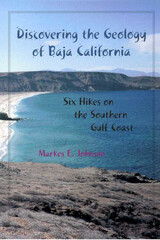 Discovering the Geology of Baja California: Six Hikes on the Southern Gulf Coast
Markes E. Johnson
University of Arizona Press, 2009 Baja California: wild, desolate, and a treasure-house of geological wonders. Along its ancient shorelines, careful observers can learn much about how the Gulf of California came into existence and what the future of the Baja California peninsula might be.
For those who wish to unlock the mysteries of Baja California, geologist Markes Johnson offers the key. He has taken a body of technical research on the geology and paleontology of the region and made it accessible in plain language for anyone who visits the peninsula, whether for study or recreation. His book teaches general concepts in coastal geomorphology and tectonics, as well as the basic geological and natural history of the Gulf of California, in a conversive, intellectually stimulating fashion.
Johnson's guide takes the form of six day-long hikes in the area of Punta Chivato on the east coast of the southern Baja California peninsula. Punta Chivato is presented as a microcosm of the entire region; it can enable visitors to better understand major themes in the natural history of the Gulf of California and its geological past. All of the hikes begin at the southeast corner of the Punta Chivato promontory and loop out in different directions. Each circuit is designed to minimize overlap with adjacent hikes and to maximize the visitor's exposure to instructive variations in the landscape. Each chapter features additional reflections on a geologist of another time and place who has advanced the field in a way that elucidates the material covered in that chapter. Through these asides, readers will learn the basic lessons about how geologists read the secrets hidden in landscapes.
Discovering the Geology of Baja California invites visitors to these shores to explore not only rocks and fossils but also the continuum of past ecosystems with the ecology of the present. It offers both an unparalleled guide to a remote area and a new understanding of life caught in an endless cycle of change.
Discovering the Laws of Life
Sir John Templeton
Templeton Press, 2009 “Truly a legend in our time, John Templeton understands that the real measure of a person's success in life is not a financial accomplishment but moral integrity and inner character.” —Billy Graham “This book belongs to the list of seminal publications of the twentieth century. How grateful the world will be that John Templeton has shared his secret openly, forthrightly, packed with integrity and healing powers.” —Robert Schuller
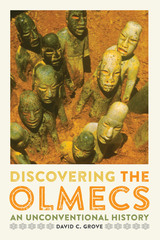 Discovering the Olmecs: An Unconventional History
By David C. Grove
University of Texas Press, 2014 The Olmecs are renowned for their massive carved stone heads and other sculptures, the first stone monuments produced in Mesoamerica. Seven decades of archaeological research have given us many insights into the lifeways of the Olmecs, who inhabited parts of the modern Mexican states of Veracruz and Tabasco from around 1150 to 400 BC, and there are several good books that summarize the current interpretations of Olmec prehistory. But these formal studies don’t describe the field experiences of the archaeologists who made the discoveries. What was it like to endure the Olmec region’s heat, humidity, mosquitoes, and ticks to bring that ancient society to light? How did unforeseen events and luck alter carefully planned research programs and the conclusions drawn from them? And, importantly, how did local communities and individuals react to the research projects and discoveries in their territories? In this engaging book, a leading expert on the Olmecs tells those stories from his own experiences and those of his predecessors, colleagues, and students. Beginning with the first modern explorations in the 1920s, David Grove recounts how generations of archaeologists and local residents have uncovered the Olmec past and pieced together a portrait of this ancient civilization that left no written records. The stories are full of fortuitous discoveries and frustrating disappointments, helpful collaborations and deceitful shenanigans. What emerges is an unconventional history of Olmec archaeology, a lively introduction to archaeological fieldwork, and an exceptional overview of all that we currently know about the Olmecs.
Discovering the Qur'an: A Contemporary Approach to a Veiled Text, Second Edition
Neal Robinson
Georgetown University Press, 2003 This latest edition of Discovering the Qur'an includes a new preface by the author. Used by students around the world as a reliable guide to reading a translation of the Qur'an, it shows how the Qur'an is experienced by Muslims, describing the rhythmic and rhyme scheme structures, the context in which it is heard, the part played by learning by heart, and the importance of calligraphy. It is also about the Qur'an and its relationship to Muhammed, as well as helping to divine the ordering of the surahs or chapters. In an English-speaking world newly sensitized to Islam and its believers, Discovering the Qur'an will be an invaluable tool to greater understanding.
 Discovering the Scottish Revolution 1692-1746
Neil Davidson
Pluto Press, 2003 This major new work of historical scholarship offers a groundbreaking reassessment of Scottish politics and society in the late seventeenth and early eighteenth century that is set to become a standard work on the subject. Neil Davidson argues that Scotland experienced a revolution during this period that has rarely been recognised in the existing historiography.
Davidson explores the political and economic changes of these years, revealing how social and economic power was transferred from one class to another. He describes how Scotland was transformed from a backward and feudal economy to a new centre of emergent capitalism. He traces the economic and social crisis that led to Scotland's incorporation into the Union in 1707, but argues that the Union did not lead to the transformation of Scottish society. The decisive period was instead the aftermath of the last Jacobite revolt in 1746, whose failure was integral to the survival and consolidation of British, and ultimately global capitalism.
'His opinions are bound to cause controversy and discussion ... a good thing as Scottish history desperately needs the airing and voicing of new approaches.'
John R Young, Albion.
‘What is so good about Neil Davidson’s brave study is that he brings a Marxist perspective to bear on Scottish history in very clear and readable prose. Quotations and statistics drawn from uncannily wide reading will make this book of great value even to those who disagree with it.’
Angus Calder, author of Revolutionary Empire and Revolving Culture: Notes from the Scottish Republic
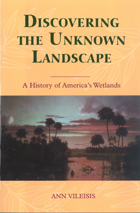 Discovering the Unknown Landscape: A History Of America's Wetlands
Ann Vileisis
Island Press, 1997 The rapidly disappearing wetlands that once spread so abundantly across the American continent serve an essential and irreplaceable ecological function. Yet for centuries, Americans have viewed them with disdain. Beginning with the first European settlers, we have thought of them as sinkholes of disease and death, as landscapes that were worse than useless unless they could be drained, filled, paved or otherwise "improved." As neither dry land, which can be owned and controlled by individuals, nor bodies of water, which are considered a public resource, wetlands have in recent years been at the center of controversy over issues of environmental protection and property rights. The confusion and contention that surround wetland issues today are the products of a long and convoluted history. In Discovering the Unknown Landscape, Anne Vileisis presents a fascinating look at that history, exploring how Americans have thought about and used wetlands from Colonial times through the present day. She discusses the many factors that influence patterns of land use -- ideology, economics, law, perception, art -- and examines the complicated interactions among those factors that have resulted in our contemporary landscape. As well as chronicling the march of destruction, she considers our seemingly contradictory tradition of appreciating wetlands: artistic and literary representations, conservation during the Progressive Era, and recent legislation aimed at slowing or stopping losses. Discovering the Unknown Landscape is an intriguing synthesis of social and environmental history, and a valuable examination of how cultural attitudes shape the physical world that surrounds us. It provides important context to current debates, and clearly illustrates the stark contrast between centuries of beliefs and policies and recent attempts to turn those longstanding beliefs and policies around. Vileisis's clear and engaging prose provides a new and compelling understanding of modern-day environmental conflicts.
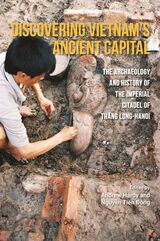 Discovering Vietnam’s Ancient Capital: The Archaeology and History of the Imperial Citadel of Thang Long-Hanoi
Edited by Andrew Hardy and Tien Ðông Nguyen
National University of Singapore Press, 2023 The first book in English on this important archaeological excavation in the heart of Vietnam's capital, now a World Heritage site.
As Vietnam entered the twenty-first century it began to prepare for the 1000th anniversary of the founding of its capital Thang Long, now Hanoi. In the heart of the city, a rescue excavation was launched on land earmarked for the construction of a new National Assembly building. Archaeologists unearthed thirteen centuries of vestiges of the ancient city of Thang Long, yielding a richer record than anyone had dared to hope for. Construction plans were shelved, excavations widened, and at the city's millennial celebrations in 2010, UNESCO announced its inscription of the Imperial Citadel of Thang Long on its World Heritage List.
This archaeological discovery has two histories. The first, told here by the archaeologists involved, is the story of the dig, which brought to light the bricks, tiles, pillars, sculptures, and ceramics of countless ancient temples and palaces. The second is the history of the citadel itself, in its early years as an outpost of the Chinese empire, in its heyday as the Forbidden City of Vietnam’s emperors, and in its downgrading and eventual destruction at the hands of the Nguyen dynasty and French colonial rulers. Bringing together history, urban history, and a fascinating story of the interplay of influences from China and Southeast Asia, this is also a fascinating case of an Asian capital city coming to understand its history and deciding how to preserve its archaeological remains.
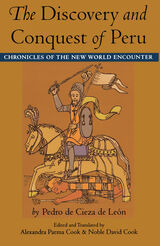 The Discovery and Conquest of Peru
Pedro de Cieza de León
Duke University Press, 1998 Dazzled by the sight of the vast treasure of gold and silver being unloaded at Seville’s docks in 1537, a teenaged Pedro de Cieza de León vowed to join the Spanish effort in the New World, become an explorer, and write what would become the earliest historical account of the conquest of Peru. Available for the first time in English, this history of Peru is based largely on interviews with Cieza’s conquistador compatriates, as well as with Indian informants knowledgeable of the Incan past. Alexandra Parma Cook and Noble David Cook present this recently discovered third book of a four-part chronicle that provides the most thorough and definitive record of the birth of modern Andean America. It describes with unparalleled detail the exploration of the Pacific coast of South America led by Francisco Pizarro and Diego de Almagro, the imprisonment and death of the Inca Atahualpa, the Indian resistance, and the ultimate Spanish domination. Students and scholars of Latin American history and conquest narratives will welcome the publication of this volume.
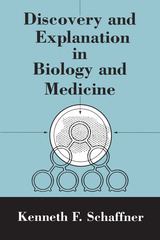 Discovery and Explanation in Biology and Medicine
Kenneth F. Schaffner
University of Chicago Press, 1993 Kenneth F. Schaffner compares the practice of biological and medical research and shows how traditional topics in philosophy of science—such as the nature of theories and of explanation—can illuminate the life sciences. While Schaffner pays some attention to the conceptual questions of evolutionary biology, his chief focus is on the examples that immunology, human genetics, neuroscience, and internal medicine provide for examinations of the way scientists develop, examine, test, and apply theories.
Although traditional philosophy of science has regarded scientific discovery—the questions of creativity in science—as a subject for psychological rather than philosophical study, Schaffner argues that recent work in cognitive science and artificial intelligence enables researchers to rationally analyze the nature of discovery. As a philosopher of science who holds an M.D., he has examined biomedical work from the inside and uses detailed examples from the entire range of the life sciences to support the semantic approach to scientific theories, addressing whether there are "laws" in the life sciences as there are in the physical sciences. Schaffner's novel use of philosophical tools to deal with scientific research in all of its complexity provides a distinctive angle on basic questions of scientific evaluation and explanation.
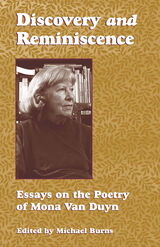 Discovery and Reminiscence: Essays on the Poetry of Mona Van Duyn
Michael Burns
University of Arkansas Press, 1999 A former United States Poet Laureate, winner of a Pulitzer Prize, and recipient of numerous grants and awards, Mona Van Duyn has been hailed as one of our greatest living American poets. To help broaden and uniquely inform our understanding of Van Duyn’s work, editor Michael Burns has gathered ten essays, a poem, a succinct biographical sketch, and Van Duyn’s own laureate address to the Library of Congress. In the first section of this collection, poets Maxine Kumin and Carolyn Kizer provide tributes that elucidate the special effect Van Duyn’s poetry has had on their work and thought. Pulitzer Prize–winner Richard Howard contributes a poem that both extols the qualities of Van Duyn’s poems and lyrically places those qualities within her contemporary scene. The second section contains eight essays exploring aspects as varied as Van Duyn’s penchant for particularity, her remarkable ability to rediscover for us the strangeness of everyday living, and her elegant style, fluid in both free verse and form. Included are contributions from Stephen Yenser, Rachel Hadas, Emily Grosholz, Sidney Burris, Ann Townsend, Michael Bugeja, Wyatt Prunty, and Jane Hoogestraat. The final section opens with Van Duyn’s witty and incisive overview of the state of poetry in America at the close of the twentieth century. Also included is a short narrative history of Van Duyn’s literary career. Filled with keen prose by distinguished poets and critics, this collection is not only a resounding tribute to one poet’s body of work, but also a timely pulse-taking of the literary scene surrounding Van Duyn’s poetry.
 The Discovery of a New World (Mundus Alter Et Idem): Written Originally in Latin by Joseph Hall, Ca. 1605
Joseph Hall
Harvard University Press The Antarctic Continent was inhabited, it seems, in the days of Queen Elizabeth by four main peoples, the crapulous folk of Tenter-belly, the vira-goes of Shee-landt, the morons of Fooliana, and the pirates and highwaymen of Theevingen. The author of this voyage pretends to have visited all these places, and records his impressions with the circumstantial pen of a journalist, and with an energy and relish barely surpassed by Rabelais himself. The result is unique, for it is the only authentic legend of the Antarctic, and yet it is also a fantasy, a burlesque, a satire, and an encyclopedia of learning, all in one salvo. The editor’s devoted but unobtrusive labors have made this first modern edition of an excessively rare text definitive, and it goes forth with the enthusiastic endorsement of the great explorer to whose achievement it is dedicated as a fitting token of homage.
The Discovery of America
Cesare Pascarella
University of Arkansas Press, 1991 The scene is a Roman bar, where the narrator tells—in outrageous sonnets—of Columbus’s battle with the Spanish bureaucracy for supplies and ships, of the endless storms that pound the ocean, of the voyagers’ inevitable swindling of the natives, and of Columbus’s final fall from royal favor. After several interruptions and promptings by a skeptical and impatient audience, the narrator comes to the point of his yarn—that genius will sometimes exact a heavy price.
Winner of the Harold Morton Landon Translation Award from the Academy of American Poets
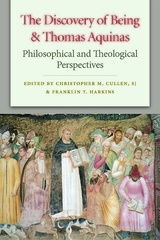 The Discovery of Being and Thomas Aquinas
Christopher M. Cullen, SJ
Catholic University of America Press, 2019 While there has been agreement among followers of Aquinas that being insofar as it is being (being qua being) is the subject of metaphysics, there is not agreement on how this being qua being is to be understood, nor on how we come to know the being that is the object of metaphysical investigation. The topic of what being is, as the object of the science of metaphysics, and how to account for the “discovery” of the being of metaphysics have emerged as central problems for the contemporary retrieval of Aquinas and for the larger project of post-Leonine Thomism in general. This lack of agreement has hampered the retrieval of Aquinas’s metaphysics.
The collection of essays within The Discovery of Being and Thomas Aquinas is divided into three major parts: the first set of essays concerns the foundation of metaphysics within Thomism; the second set exemplifies the use of metaphysics in fundamental philosophical issues within Thomism; and the third set employs metaphysics in central theological issues.
The Discovery of Being and Thomas Aquinas allows major scholars of the different types of Thomism to engage in a full-scale defense of their position, as well as expanding Thomistic metaphysics to the discipline of theology in important ways.
 The Discovery of Chance: The Life and Thought of Alexander Herzen
Aileen M. Kelly
Harvard University Press, 2016 Alexander Herzen—philosopher, novelist, essayist, political agitator, and one of the leading Russian intellectuals of the nineteenth century—was as famous in his day as Tolstoy and Dostoevsky. While he is remembered for his masterpiece My Past and Thoughts and as the father of Russian socialism, his contributions to the history of ideas defy easy categorization because they are so numerous. Aileen Kelly presents the first fully rounded study of the farsighted genius whom Isaiah Berlin called “the forerunner of much twentieth-century thought.”
In an era dominated by ideologies of human progress, Herzen resisted them because they conflicted with his sense of reality, a sense honed by his unusually comprehensive understanding of history, philosophy, and the natural sciences. Following his unconventional decision to study science at university, he came to recognize the implications of early evolutionary theory, not just for the natural world but for human history. In this respect, he was a Darwinian even before Darwin.
Socialism for Russia, as Herzen conceived it, was not an ideology—least of all Marxian “scientific socialism”—but a concrete means of grappling with unique historical circumstances, a way for Russians to combine the best of Western achievements with the possibilities of their own cultural milieu in order to move forward. In the same year that Marx declared communism to be the “solution to the riddle of history,” Herzen denied that any such solution could exist. History, like nature, was contingent—an improvisation both constrained and encouraged by chance.
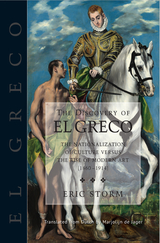 The Discovery of El Greco: The Nationalization of Culture Versus the Rise of Modern Art (1860-1914)
Eric Storm
Sussex Academic Press, 2022 Now in English, this book, originally published in Dutch and translated to Spanish for the fourth centenary celebration of the death of El Greco in 2014, is a comprehensive study of the rediscovery of El Greco -- seen as one of the most important events of its kind in art history. The Nationalization of Culture versus the Rise of Modern Art analyses how changes in artistic taste in the second half of the nineteenth century caused a profound revision of the place of El Greco in the artistic canon. As a result, El Greco was transformed from an extravagant outsider and a secondary painter into the founder of the Spanish School and one of the principle predecessors of modern art, increasingly related to that of the Impressionists -- due primarily to the German critic Julius Meier-Graefe's influential History of Modern Art (1914). This shift in artistic preference has been attributed to the rise of modern art but Eric Storm, a cultural historian, shows that in the case of El Greco nationalist motives were even more important. This study examines the work of painters, art critics, writers, scholars and philosophers from France, Germany and Spain, and the role of exhibitions, auctions, monuments and commemorations. Paintings and associated anecdotes are discussed, and historical debates such as El Greco's supposed astigmatism are addressed in a highly readable and engaging style. This book will be of interest to both specialists and the interested art public.
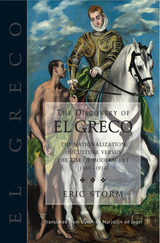 The Discovery of El Greco: The Nationalization of Culture Versus the Rise of Modern Art (1860-1914)
Eric Storm
Sussex Academic Press, 2022 Now in English, this book, originally published in Dutch and translated to Spanish for the fourth centenary celebration of the death of El Greco in 2014, is a comprehensive study of the rediscovery of El Greco -- seen as one of the most important events of its kind in art history. The Nationalization of Culture versus the Rise of Modern Art analyses how changes in artistic taste in the second half of the nineteenth century caused a profound revision of the place of El Greco in the artistic canon. As a result, El Greco was transformed from an extravagant outsider and a secondary painter into the founder of the Spanish School and one of the principle predecessors of modern art, increasingly related to that of the Impressionists -- due primarily to the German critic Julius Meier-Graefe's influential History of Modern Art (1914). This shift in artistic preference has been attributed to the rise of modern art but Eric Storm, a cultural historian, shows that in the case of El Greco nationalist motives were even more important. This study examines the work of painters, art critics, writers, scholars and philosophers from France, Germany and Spain, and the role of exhibitions, auctions, monuments and commemorations. Paintings and associated anecdotes are discussed, and historical debates such as El Greco's supposed astigmatism are addressed in a highly readable and engaging style. This book will be of interest to both specialists and the interested art public.
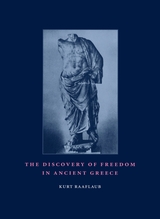 The Discovery of Freedom in Ancient Greece: Revised and Updated Edition
Kurt Raaflaub
University of Chicago Press, 2003 Although there is constant conflict over its meanings and limits, political freedom itself is considered a fundamental and universal value throughout the modern world. For most of human history, however, this was not the case. In this book, Kurt Raaflaub asks the essential question: when, why, and under what circumstances did the concept of freedom originate?
To find out, Raaflaub analyses ancient Greek texts from Homer to Thucydides in their social and political contexts. Archaic Greece, he concludes, had little use for the idea of political freedom; the concept arose instead during the great confrontation between Greeks and Persians in the early fifth century BCE. Raaflaub then examines the relationship of freedom with other concepts, such as equality, citizenship, and law, and pursues subsequent uses of the idea—often, paradoxically, as a tool of domination, propaganda, and ideology.
Raaflaub's book thus illuminates both the history of ancient Greek society and the evolution of one of humankind's most important values, and will be of great interest to anyone who wants to understand the conceptual fabric that still shapes our world views.
 The Discovery of Global Warming
Spencer R. Weart
Harvard University Press, 2003 THIS EDITION HAS BEEN REPLACED BY A NEWER EDITION..
In 2001 a panel representing virtually all the world's governments and climate scientists announced that they had reached a consensus: the world was warming at a rate without precedent during at least the last ten millennia, and that warming was caused by the buildup of greenhouse gases from human activity. The consensus itself was at least a century in the making. The story of how scientists reached their conclusion--by way of unexpected twists and turns and in the face of formidable intellectual, financial, and political obstacles--is told for the first time in The Discovery of Global Warming. Spencer R. Weart lucidly explains the emerging science, introduces us to the major players, and shows us how the Earth's irreducibly complicated climate system was mirrored by the global scientific community that studied it.
Unlike familiar tales of Science Triumphant, this book portrays scientists working on bits and pieces of a topic so complex that they could never achieve full certainty--yet so important to human survival that provisional answers were essential. Weart unsparingly depicts the conflicts and mistakes, and how they sometimes led to fruitful results. His book reminds us that scientists do not work in isolation, but interact in crucial ways with the political system and with the general public. The book not only reveals the history of global warming, but also analyzes the nature of modern scientific work as it confronts the most difficult questions about the Earth's future.
The Discovery of Global Warming: Revised and Expanded Edition
Spencer R. Weart
Harvard University Press, 2008 The award-winning book is now revised and expanded.
In 2001 an international panel of distinguished climate scientists announced that the world was warming at a rate without precedent during at least the last ten millennia, and that warming was caused by the buildup of greenhouse gases from human activity. The story of how scientists reached that conclusion—by way of unexpected twists and turns—was the story Spencer Weart told in The Discovery of Global Warming. Now he brings his award-winning account up to date, revised throughout to reflect the latest science and with a new conclusion that shows how the scientific consensus caught fire among the general world public, and how a new understanding of the human meaning of climate change spurred individuals and governments to action.
The Discovery of Insulin
Michael Bliss
University of Chicago Press, 1982 In a brilliant, definitive history of one of the most significant and controversial medical events of modern times, award-winning historian Michael Bliss brings to light a bizarre clash of scientific personalities. When F. G. Banting and J. J. R. Macleod won the 1923 Nobel Prize for discovering and isolating insulin, Banting immediately announced that he was dividing his share of the prize with his young associate, C. H. Best. Macleod divided his share with a fourth member of the team, J. B. Collip. For the next sixty years medical opinion was intensely divided over the allotment of credit for the discovery of insulin. In resolving this controversy, Bliss also offers a wealth of new detail on such subjects as the treatment of diabetes before insulin and the life-and-death struggle to manufacture insulin.
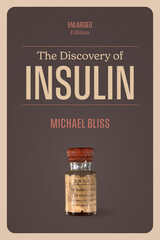 The Discovery of Insulin: Enlarged Edition
Michael Bliss
University of Chicago Press, 2021 This edition of a landmark work of scholarship includes both a new preface by the author and a new foreword that places the book in its historical context.
When insulin was discovered in the early 1920s, even jaded professionals marveled at how it brought starved, sometimes comatose patients with diabetes back to life. Defying the average timeline, the 1923 Nobel Prize in Physiology or Medicine was awarded for its discovery. To recount the fascinating story behind the discovery of insulin, in this classic work Michael Bliss draws on archival records and personal interviews with witnesses to the events. He unearths scientists’ memoirs and confidential appraisals of insulin by members of the Nobel Committee, bringing science to life and resolving a longstanding controversy about scientific collaboration at its most fractious and fascinating: who among the Canadian team of Frederick Banting, Charles Best, James Collip, and John Macleod ultimately deserves credit for the discovery of insulin? Or is credit due farther afield—to Georg Zuelzer in Berlin, E.L. Scott in Chicago, Israel Kleiner in New York, Nicolas Paulescu in Bucharest, John Murlin in Rochester?
Bliss’s life-and-death saga illuminates one of the most important breakthroughs in the history of medicine. With a new preface by the author and a foreword by historian Alison Li, this enlarged edition celebrates the lasting impact of insulin’s discovery and ongoing importance.
The Discovery of Insulin: Twenty-fifth Anniversary Edition
Michael Bliss
University of Chicago Press, 2007 When insulin was discovered in the early 1920s, even jaded professionals marveled at how it brought starved, sometimes comatose diabetics back to life. In the twenty-fifth-anniversary edition of a classic, Michael Bliss unearths scientists' memoirs and confidential appraisals of insulin by members of the Nobel Committee. he also resolves a longstanding controversy about scientific collaboration at its most fractious and fascinating: who ultimately deserves credit for the discovery? Bliss's life-and-death saga illuminates one of the most important breakthroughs in the history of medicine.
The Discovery of New Mexico by the Franciscan Monk Friar Marcos de Niza in 1539
Adolph F. Bandelier; Translated and Edited by Madeleine Turrell Rodack
University of Arizona Press, 1980 The story of Fray Marcos and the Seven Cities of Cíbola was a favorite of Adolph Bandelier (1840–1914). Bandelier’s combination of methodological sophistication and control of the archival data makes the Marcos de Niza paper important, not only as a landmark in Southwestern ethnohistory, but as a work of scholarship in its own rights, with insights on Cabeza de Vaca, Marcos, and early Southwestern exploration that are still valid today.
 The Discovery of Ottoman Greece: Knowledge, Encounter, and Belief in the Mediterranean World of Martin Crusius
Richard Calis
Harvard University Press, 2025 The surprising story of the sixteenth-century Lutheran scholar who became Europe’s foremost authority on Ottoman Greece, shedding new light on the place of Greek culture and religion in the Western imagination.
In the late sixteenth century, a German Lutheran scholar named Martin Crusius compiled an exceptionally rich record of Greek life under Ottoman rule. Although he never left his home in the university town of Tübingen, Crusius spent decades annotating books and manuscripts, corresponding with the Greek Orthodox Patriarch, and interviewing Greek Orthodox alms-seekers. Ultimately, he gathered his research into a seminal work called the Turcograecia, which served for centuries as Europe’s foremost source on Ottoman Greece. Yet as Richard Calis reveals, Crusius’s massive—and largely untapped—archive has much more to tell us about how early modern Europeans negotiated cultural and religious difference.
In particular, Crusius’s work illuminates Western European views of the religious “other” within Christianity: the Greek Orthodox Christians living under Ottoman rule, a group both familiar and foreign. Many Western Europeans, including Crusius, developed narratives of Greek cultural and religious decline under Ottoman rule. Crusius’s records, however, reveal in exceptional detail how such stories developed. His interactions with his Greek Orthodox visitors, and with a vast network of correspondents, show that Greeks’ own narratives of hardship entwined in complex ways with Western Europeans’ orientalist views of the Ottoman world. They also reflect the religious tensions that undergirded these exchanges, fueled by Crusius’s fervent desire to spread Lutheran belief across Ottoman Greece and the wider world.
A lively intellectual history drawn from a forgotten archive, The Discovery of Ottoman Greece is also a perceptive character study, in which Crusius takes his place in the history of ethnography, Lutheran reform, and European philhellenism.
 The Discovery of Talent
Dael Wolfle
Harvard University Press Finding the talented, encouraging their advancement, making known their potentialities"--to these aims many of the twentieth century's most distinguished psychologists have turned their attention. In this book, Terman, Paterson, Burt, Strong, Guilford, Wolfie, Stalnaker, MacKinnon, Ghiselli, Mackworth, and Vernon, each with his own particular emphasis, discuss these issues as lecturers in a series set up by their colleague, Walter Van Dyke Bingham. In sum, they present a cross section of psychological thought at mid-century, each man writing about the set of problems on which his interest has centered.
Assuming that the concept of intelligence is essential to the study of talent, they give their attention to other variables--health, physical energy and work habits, maturation, education, parental advantage, and the like. Terman, for example, discusses the personality traits that make for success, while Strong describes his and others' efforts to measure vocational interests. Burt looks at the inheritance of emotional and temperamental qualities that affect the way one works and the amount one achieves. MacKinnon, Chiselli, and Mackworth concentrate on important kinds of ability that are not well measured by any of the available tests of "intelligence."
Today, these pioneering scholars stand high on the list of those who have advanced the discovery and development of talent. Many of these articles are already classics, and their publication in one volume will provide a ready reference and an important impetus to further work in their area of interest. These eleven lectures, provided for by the late Walter Van Dyke Bingham and presented at a different university each year, were delivered between 1956 and 1965.
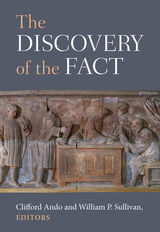 The Discovery of the Fact
Clifford Ando and William P. Sullivan, Editors
University of Michigan Press, 2020 The Discovery of the Fact draws on expertise from lawyers, historians of philosophy, and scholars of classical studies and ancient history, to take a very modern perspective on an underexplored but essential domain of ancient legal history. Everyone is familiar with courts as adjudicators of facts. But legal institutions also played an essential role in the emergence of the notion of the fact, and contributed in a vital way to commonplace understandings of what is knowable and what is not. These issues have a particular importance in ancient Greece and Rome, the first western societies in which state law and state institutions of dispute resolution visibly play a decisive role in ordinary social and economic relations. The Discovery of the Fact investigates, historically and comparatively, the relationships among the law, legal institutions, and the boundaries of knowledge in classical Greece and Rome. Societies wanted citizens to conform to the law, but how could this be insured? On what foundation did ancient courts and institutions base their decisions, and how did they represent the reasoning behind their decisions when announcing them? Slaves were owned like things, and yet they had minds that ancients conceded were essentially unknowable. What was to be done? And where has the boundary been drawn between questions of law and questions of fact when designing processes of dispute resolution?
 The Discovery of the Greek Bronze Age
J. Lesley Fitton
Harvard University Press, 1996 J. Lesley Fitton traces this exciting tale of scholarly discovery and weaves it into an engaging, in-depth portrait of Greek Bronze Age civilizations, from their dawning on the Cycladic Isles in the third millennium B.C. to their later flowering in Minoan Crete and then in the Mycenaean centers and finally to their mysterious disappearance in the twelfth century B.C. The result is an elegant assimilation of vast historical detail and a well-illustrated tour of the art and artifacts, the grand palaces and tombs, the mythical heroes and Trojan treasures that form at least one cradle of our own civilization.
Fitton begins with the early finds of travelers, advances in geology, and research into Homer's identity. She vividly recreates the heroic age of the first archaeological excavations, particularly Heinrich Schliemann's fascinating work at Troy and Mycenae, and Arthur Evans's pioneering excavation and restoration of the Palace of Minos on Crete. The persistent search for signs of writing among Bronze Age Greeks culminates in Fitton's description of the 1952 deciphering of the earliest script used to write Greek. And as her account extends into the present, it encompasses the important contributions of the archaeologists Alan Wace and Carl Blegen, the War's impact on research, and a concise summation of current scholarly trends.
The Discovery of Time
Stephen Toulmin and June Goodfield
University of Chicago Press, 1982 "A discussion of the historical development of our ideas of time as they relate to nature, human nature and society. . . . The excellence of The Discovery of Time is unquestionable."—Martin Lebowitz, The Kenyon Review
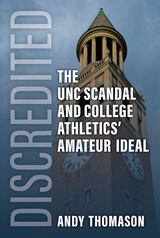 Discredited: The UNC Scandal and College Athletics' Amateur Ideal
Andy Thomason
University of Michigan Press, 2021 In 2009, the University of North Carolina at Chapel Hill was on top of the world. Consistently named one of the top universities in the country, it had welcomed a new phenom of a chancellor who promised to lead the public Ivy into the future. In the all-important athletic realm, the Tar Heels were the Coca-Cola of athletic brands. Resting upon the legacy of legendary basketball coach Dean Smith, UNC had carved out a reputation of excellence paired with squeaky-clean adherence to the rules. Supporters had a name for that irresistible ethos: the Carolina Way. The Tar Heels were climbing even higher. That year, they won their fifth national championship in men's basketball and looked poised to climb the ranks in football under a new, high-powered coach. But within just a few years, it all came crashing down. The Tar Heels' success, it turned out, was based on a foundation of deceit. Athletes were flocking to a slate of fake classes that advisers deftly used to keep them eligible to play. That revelation and others metastasized into one of the most damaging scandals ever to visit an American college. In Discredited, journalist Andy Thomason provides a gripping and authoritative retelling of the scandal through the eyes of four of its key participants: the secretary who presided over the fake classes, the professor who directed players toward them, the literacy specialist turned whistleblower who sought to expose the system, and the chancellor who found his career suddenly on the line. The heart-stopping narrative reveals the toll of a college's investment in major sports, and the amateurism myth upon which it is based. Based on dozens of original interviews and thousands of pages of documents, Discredited demonstrates just how far a university will go to preserve the athletic status quo: tolerating tarnished careers, ruined reputations, and years of scathing media criticism—all for a shot at competitive glory.
Discreet Partners: Argentina and the USSR Since 1917
Aldo Cesar Vacs
University of Pittsburgh Press, 1984 Beginning with a review of the Argintine-USSR relationship up to 1970, Aldo Vacs describes and analyzes economic, diplomatic, and military developments, as well as their impact on Argentine society and politics, since the early 1970s. Vacs views each country’s objectives, and the extent and limits of their shared interests.
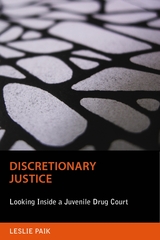 Discretionary Justice: Looking Inside a Juvenile Drug Court
Paik, Leslie
Rutgers University Press, 2011 Juvenile drug courts are on the rise in the United States, as a result of a favorable political climate and justice officials' endorsement of the therapeutic jurisprudence movement--the concept of combining therapeutic care with correctional discipline. The goal is to divert nonviolent youth drug offenders into addiction treatment instead of long-term incarceration. Discretionary Justice overviews the system, taking readers behind the scenes of the juvenile drug court. Based on fifteen months of ethnographic fieldwork and interviews at a California court, Leslie Paik explores the staff's decision-making practices in assessing the youths' cases, concentrating on the way accountability and noncompliance are assessed. Using the concept of "workability," Paik demonstrates how compliance, and what is seen by staff as "noncompliance," are the constructed results of staff decisions, fluctuating budgets, and sometimes questionable drug test results. While these courts largely focus on holding youths responsible for their actions, this book underscores the social factors that shape how staff members view progress in the court. Paik also emphasizes the perspectives of children and parents. Given the growing emphasis on individual responsibility in other settings, such as schools and public welfare agencies, Paik's findings are relevant outside the juvenile justice system.
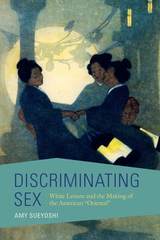 Discriminating Sex: White Leisure and the Making of the American "Oriental"
Amy Sueyoshi
University of Illinois Press, 2018 Freewheeling sexuality and gender experimentation defined the social and moral landscape of 1890s San Francisco. Middle class whites crafting titillating narratives on topics such as high divorce rates, mannish women, and extramarital sex centered Chinese and Japanese immigrants in particular. Amy Sueyoshi draws on everything from newspapers to felony case files to oral histories in order to examine how whites' pursuit of gender and sexual fulfillment gave rise to racial caricatures. As she reveals, white reporters, writers, artists, and others conflated Chinese and Japanese, previously seen as two races, into one. There emerged the Oriental—a single pan-Asian American stereotype weighted with sexual and gender meaning. Sueyoshi bridges feminist, queer, and ethnic studies to show how the white quest to forge new frontiers in gender and sexual freedom reinforced—and spawned—racial inequality through the ever evolving Oriental. Informed and fascinating, Discriminating Sex reconsiders the origins and expression of racial stereotyping in an American city.
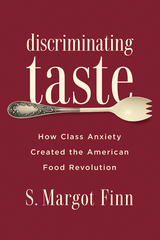 Discriminating Taste: How Class Anxiety Created the American Food Revolution
Finn, S. Margot
Rutgers University Press, 2017 Winner of the 2018 First Book Prize from the Association for the Study of Food and Society
For the past four decades, increasing numbers of Americans have started paying greater attention to the food they eat, buying organic vegetables, drinking fine wines, and seeking out exotic cuisines. Yet they are often equally passionate about the items they refuse to eat: processed foods, generic brands, high-carb meals. While they may care deeply about issues like nutrition and sustainable agriculture, these discriminating diners also seek to differentiate themselves from the unrefined eater, the common person who lives on junk food.
Discriminating Taste argues that the rise of gourmet, ethnic, diet, and organic foods must be understood in tandem with the ever-widening income inequality gap. Offering an illuminating historical perspective on our current food trends, S. Margot Finn draws numerous parallels with the Gilded Age of the late nineteenth century, an era infamous for its class divisions, when gourmet dinners, international cuisines, slimming diets, and pure foods first became fads.
Examining a diverse set of cultural touchstones ranging from Ratatouille to The Biggest Loser, Finn identifies the key ways that “good food” has become conflated with high status. She also considers how these taste hierarchies serve as a distraction, leading middle-class professionals to focus on small acts of glamorous and virtuous consumption while ignoring their class’s larger economic stagnation. A provocative look at the ideology of contemporary food culture, Discriminating Taste teaches us to question the maxim that you are what you eat.
Discrimination by Design: A Feminist Critique of the Man-Made Environment
Leslie Kanes Weisman
University of Illinois Press, 1992 "A fast-moving, insightful, politically astute and upfront feminist examination of the power struggles involved in building and controlling space."
-- Women's Review of Books
"A readable account of the force of male dominance in the built environment. . . . Those looking to this book for a clearer vision of the changes that need to be made in the organization and design of housing, work, and public space to foster gender equality will not be disappointed."
-- Journal of Planning Education and Research
"A pioneering work that will pave new territory not only for feminists but all those who are prepared to rethink environmental and societal issues."
-- Choice
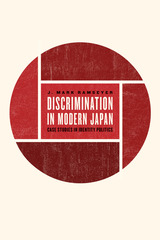 Discrimination in Modern Japan: Case Studies in Identity Politics
J. Mark Ramseyer
University of Chicago Press, 2023 An informative rethinking of how Japanese society discriminates against its Korean, Okinawan, and Burakumin populations.
In this book, J. Mark Ramseyer, a noted authority on Japan looks at discrimination against groups in Japanese society, focusing on the Korean, Okinawan, and Burakumin groups. Ramseyer asks why they experience discrimination in Japan, an unusually homogeneous society. Is it because of some prejudice on the part of the majority that prevents their integration into mainstream Japanese society? Or is it because some of the dynamics within the group create incentives for the group to stay together and to be on the fringes of society?
Ramseyer argues that the real explanation is the latter, and each of these three groups has been victimized by its own leadership. Precisely because the groups are dysfunctional, members of the group cannot control members who would appoint themselves group leaders. The result has been the capture of leadership positions by people who manipulate the group to their own private advantage and to the detriment of the group as a whole.
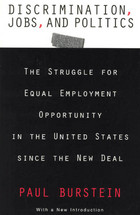 Discrimination, Jobs, and Politics: The Struggle for Equal Employment Opportunity in the United States since the New Deal
Paul Burstein
University of Chicago Press, 1985 Throughout this impressive and controversial account of the fight against job discrimination in the United States, Paul Burstein poses searching questions. Why did Congress adopt EEO legislation in the sixties and seventies? Has that legislation made a difference to the people it was intended to help? And what can the struggle for equal employment opportunity tell us about democracy in the United States?
"This is an important, well-researched book. . . . Burstein has had the courage to break through narrow specializations within sociology . . . and even to address the types of acceptable questions usually associated with three different disciplines (political science, sociology, and economics). . . . This book should be read by all professionals interested in political sociology and social movements."—Donald Tomaskovic-Devey, Social Forces
"Discrimination, Jobs and Politics [is] satisfying because it tells a more complete story . . . than does most sociological research. . . . I find myself returning to it when I'm studying the U.S. women's movement and recommending it to students struggling to do coherent research."—Rachel Rosenfeld, Contemporary Sociology
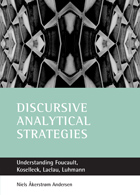 Discursive analytical strategies: Understanding Foucault, Koselleck, Laclau, Luhmann
Niels Akerstrom Andersen
Bristol University Press, 2003 This exciting and innovative book fills a gap in the growing area of discourse analysis within the social sciences. It provides the analytical tools with which students and their teachers can understand the complex and often conflicting discourses across a range of social science disciplines.Examining the theories of Foucault, Koselleck, Laclau and Luhmann, the book:·[vbTab]focuses on the political and social aspects of their writing;·[vbTab]discusses and combines their theories to suggest new analytical strategies for understanding society;·[vbTab]combines theory with practical illustrations.A best seller in Denmark, this English edition is vital reading for anyone with an interest in discourse analysis. It will also be invaluable to anyone looking at the analytical works of Foucault, Koselleck, Laclau and Luhmann. Students will find the clear exposition of the theories and strategies supported by an easy-to-digest, easy-to-read layout, which includes summaries and boxed examples highlighting the relevance of analytical strategies to social and policy research.
The Discursive Construction of Southeast Asia in 19th Century Colonial-Capitalist Discourse
Farish A. Noor
Amsterdam University Press, 2016 The nations of Southeast Asia today are rapidly integrating economically and politically, but that integration is also counterbalanced by forces ranging from hyper-nationalism to disputes over cultural ownership throughout the region. Those forces, Farish A. Noor argues in this book, have their roots in the region's failure to come to a critical understanding of how current national and cultural identities in the region came about. To remedy that, Noor offers a close account of the construction of Southeast Asia in the nineteenth century by the forces of capitalism and imperialism, and shows how that construct remains a potent aspect of political, economic, and cultural disputes today.
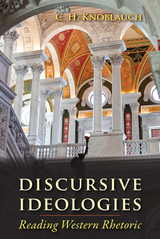 Discursive Ideologies: Reading Western Rhetoric
C. H. Knoblauch
Utah State University Press, 2014 In Discursive Ideologies, C. H. Knoblauch argues that European rhetorical theory comprises several distinct and fundamentally opposed traditions of discourse. Writing accessibly for the upper division student, Knoblauch resists the conventional narrative of a unified Western rhetorical tradition. He identifies deep ideological and epistemological differences that exist among strands of Western thought and that are based in divergent "grounds of meaningfulness.” These conflicts underlie and influence current discourse about vital public issues. Knoblauch considers six "stories” about the meaning of meaning in an attempt to answer the question, what encourages us to believe that language acts are meaningful? Six distinctive ideologies of Western rhetoric emerge: magical rhetoric, ontological rhetoric, objectivist rhetoric, expressivist rhetoric, sociological rhetoric, and deconstructive rhetoric. He explores the nature of language and the important role these rhetorics play in the discourses that matter most to people, such as religion, education, public policy, science, law, and history.
Discussing Hitler: Advisers of U.S. Diplomacy in Central Europe, 1934-41
Tibor Frank
Central European University Press, 2003 This book promises to illuminate the foreign policy of the Roosevelt administration during the rise of Hitler's Germany. It is based on the heretofore unpublished notes of J. F. Montgomery (1878-1954), U.S. ambassador ("Minister") to Hungary before World War II. In Budapest, Montgomery quickly made friends with nearly everyone who mattered in the critical years of Hitler's takeover and preparation for World War II. His circle included Admiral Horthy, the Regent of Hungary, subsequent prime ministers, foreign ministers, members of both houses of parliament, as well as fellow diplomats from all over Europe. In addition, as an avid player of golf and bridge, he had an active social life that was interconnected with a large circle of influential friends in the United States.
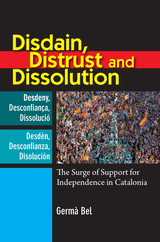 Disdain, Distrust and Dissolution: The Surge of Support for Independence in Catalonia
Germa Bel
Sussex Academic Press, 2022 Support for independence in Catalonia has increased rapidly over the past decade. This dynamic is the result of Catalans in political, economic and academic fields who no longer believe that the necessary reform of Spanish government is a viable option in terms of achieving an acceptable arrangement for Catalonia to stay within the Spanish state. Rejecting assimilation on the basis that a uni-national state is unworkable for a host of structural reasons, not least the lack of reform progress to date, secession is viewed as the preferred choice for the betterment of the region's people. This book dissects the problems of the relationship between Catalonia and Spain. The author investigates the dynamics of conflict between opposing groups, the resulting effects on inter-territorial distrust, and the impact on the functioning of the Spanish state as a whole. These conflictual issues are projected onto areas of public policy that reflect basic motivations of rising public support for independence: national identity and sense of community (language and education policy); economic viability (fiscal relations with the state); and future opportunities in a global world (issues of infrastructure, especially transport). The overwhelming conclusion is that the accumulation of mutual distrust between the opposing parties is a major obstacle to the functioning of the Spanish state. Mutual perception of unfairness and lack of trust is an impediment to the design and functioning of future shared projects -- and without agreement and engagement there is no benefit to either party, to the detriment of Spain and its peoples. Published in association with the Canada Blanch Centre for Contemporary Spanish Studies/Catalan Observatory.
 Disease and Class: Tuberculosis and the Shaping of Modern North American Society
Georgina D. Feldberg
Rutgers University Press, 1995 Until a decade ago, the conquest of tuberculosis seemed one of the great triumphs of modern medicine. The resurgence of TB in the wake of AIDS has to be understood, Georgina Feldberg argues, in the context of decisions the U.S. Public Health Service made, beginning in the 1930s, to prevent TB through improved hygiene and long-term treatment with medications, rather than program of BCG vaccination that Canada and many other countries adopted. Feldberg's aim is not to judge which was the right choice, but to explain why the U.S. rejected the vaccine and the consequences of that choice. To American physicians, TB, the conditions that fostered it, and the kind of people who got it were a direct threat to their own middle-class values, institutions, and prosperity. They prescribed vigorous social reform, and by the 1960s, they were convinced the strategy had worked. But, as the country's commitment to strong social welfare programs waned, the bacteriological reality of TB reasserted itself. Feldberg challenges us to recognize that the interplay of disease, class, and the practice of medicine can have unexpected consequences for the health of nations. The book is essential reading for students and professionals in public health, medicine, and the history and sociology of medicine. Georgina D. Feldberg is director of the York University Centre for Health Studies in North York, Ontario. She is coauthor of Take Care: Warning Signals for Canada's Health System.
Disease And Medical Care In The Mountain West: Essays On Region, History, And Practice
Martha L. Hildreth
University of Nevada Press, 1998 This collection of eight essays examines the health, disease, and medical care of the American West—an area flanked by the Rocky Mountains, Sierra Nevada, and Cascade Mountains. Topics include Mormons and the Thomsonian Movement in the nineteenth century, the silicosis epidemic in hardrock mining, Native American health, frontier nursing, and Chinese medicine.
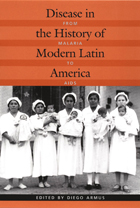 Disease in the History of Modern Latin America: From Malaria to AIDS
Diego Armus, ed.
Duke University Press, 2003 Challenging traditional approaches to medical history, Disease in the History of Modern Latin America advances understandings of disease as a social and cultural construction in Latin America. This innovative collection provides a vivid look at the latest research in the cultural history of medicine through insightful essays about how disease—whether it be cholera or aids, leprosy or mental illness—was experienced and managed in different Latin American countries and regions, at different times from the late nineteenth century to the present. Based on the idea that the meanings of sickness—and health—are contestable and subject to controversy, Disease in the History of Modern Latin America displays the richness of an interdisciplinary approach to social and cultural history. Examining diseases in Mexico, Brazil, Argentina, Colombia, Peru, and Bolivia, the contributors explore the production of scientific knowledge, literary metaphors for illness, domestic public health efforts, and initiatives shaped by the agendas of international agencies. They also analyze the connections between ideas of sexuality, disease, nation, and modernity; the instrumental role of certain illnesses in state-building processes; welfare efforts sponsored by the state and led by the medical professions; and the boundaries between individual and state responsibilities regarding sickness and health. Diego Armus’s introduction contextualizes the essays within the history of medicine, the history of public health, and the sociocultural history of disease.
Contributors. Diego Armus, Anne-Emanuelle Birn, Kathleen Elaine Bliss, Ann S. Blum, Marilia Coutinho, Marcus Cueto, Patrick Larvie, Gabriela Nouzeilles, Diana Obregón, Nancy Lays Stepan, Ann Zulawski
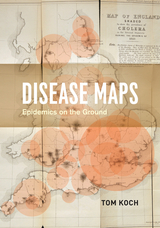 Disease Maps: Epidemics on the Ground
Tom Koch
University of Chicago Press, 2011 In the seventeenth century, a map of the plague suggested a radical idea—that the disease was carried and spread by humans. In the nineteenth century, maps of cholera cases were used to prove its waterborne nature. More recently, maps charting the swine flu pandemic caused worldwide panic and sent shockwaves through the medical community. In Disease Maps, Tom Koch contends that to understand epidemics and their history we need to think about maps of varying scale, from the individual body to shared symptoms evidenced across cities, nations, and the world.
Disease Maps begins with a brief review of epidemic mapping today and a detailed example of its power. Koch then traces the early history of medical cartography, including pandemics such as European plague and yellow fever, and the advancements in anatomy, printing, and world atlases that paved the way for their mapping. Moving on to the scourge of the nineteenth century—cholera—Koch considers the many choleras argued into existence by the maps of the day, including a new perspective on John Snow’s science and legacy. Finally, Koch addresses contemporary outbreaks such as AIDS, cancer, and H1N1, and reaches into the future, toward the coming epidemics. Ultimately, Disease Maps redefines conventional medical history with new surgical precision, revealing that only in maps do patterns emerge that allow disease theories to be proposed, hypotheses tested, and treatments advanced.
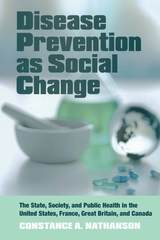 Disease Prevention as Social Change: The State, Society, and Public Health in the United States, France, Great Britain, and Canada
Constance A. Nathanson
Russell Sage Foundation, 2007 From mad-cow disease and E. coli-tainted spinach in the food supply to anthrax scares and fears of a bird flu pandemic, national health threats are a perennial fact of American life. Yet not all crises receive the level of attention they seem to merit. The marked contrast between the U.S. government's rapid response to the anthrax outbreak of 2001 and years of federal inaction on the spread of AIDS among gay men and intravenous drug users underscores the influence of politics and public attitudes in shaping the nation's response to health threats. In Disease Prevention as Social Change, sociologist Constance Nathanson argues that public health is inherently political, and explores the social struggles behind public health interventions by the governments of four industrialized democracies. Nathanson shows how public health policies emerge out of battles over power and ideology, in which social reformers clash with powerful interests, from dairy farmers to tobacco lobbyists to the Catholic Church. Comparing the history of four public health dilemmas—tuberculosis and infant mortality at the turn of the last century, and more recently smoking and AIDS—in the United States, France, Britain, and Canada, Nathanson examines the cultural and institutional factors that shaped reform movements and led each government to respond differently to the same health challenges. She finds that concentrated political power is no guarantee of government intervention in the public health domain. France, an archetypical strong state, has consistently been decades behind other industrialized countries in implementing public health measures, in part because political centralization has afforded little opportunity for the development of grassroots health reform movements. In contrast, less government centralization in America has led to unusually active citizen-based social movements that campaigned effectively to reduce infant mortality and restrict smoking. Public perceptions of health risks are also shaped by politics, not just science. Infant mortality crusades took off in the late nineteenth century not because of any sudden rise in infant mortality rates, but because of elite anxieties about the quantity and quality of working-class populations. Disease Prevention as Social Change also documents how culture and hierarchies of race, class, and gender have affected governmental action—and inaction—against particular diseases. Informed by extensive historical research and contemporary fieldwork, Disease Prevention as Social Change weaves compelling narratives of the political and social movements behind modern public health policies. By comparing the vastly different outcomes of these movements in different historical and cultural contexts, this path-breaking book advances our knowledge of the conditions in which social activists can succeed in battles over public health.
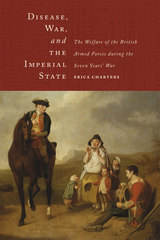 Disease, War, and the Imperial State: The Welfare of the British Armed Forces during the Seven Years' War
Erica Charters
University of Chicago Press, 2014 The Seven Years’ War, often called the first global war, spanned North America, the West Indies, Europe, and India. In these locations diseases such as scurvy, smallpox, and yellow fever killed far more than combat did, stretching the resources of European states.
In Disease, War, and the Imperial State, Erica Charters demonstrates how disease played a vital role in shaping strategy and campaigning, British state policy, and imperial relations during the Seven Years’ War. Military medicine was a crucial component of the British war effort; it was central to both eighteenth-century scientific innovation and the moral authority of the British state. Looking beyond the traditional focus of the British state as a fiscal war-making machine, Charters uncovers an imperial state conspicuously attending to the welfare of its armed forces, investing in medical research, and responding to local public opinion. Charters shows military medicine to be a credible scientific endeavor that was similarly responsive to local conditions and demands.
Disease, War, and the Imperial State is an engaging study of early modern warfare and statecraft, one focused on the endless and laborious task of managing manpower in the face of virulent disease in the field, political opposition at home, and the clamor of public opinion in both Britain and its colonies.
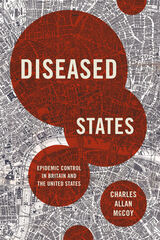 Diseased States: Epidemic Control in Britain and the United States
Charles Allan McCoy
University of Massachusetts Press, 2020 Outbreaks of Ebola, SARS, MERS, coronavirus, and pandemic influenza are brutal reminders of the dangers of infectious disease. Comparing the development of disease control in Britain and the United States, from the 1793 yellow fever outbreak in Philadelphia to the H1N1 panics of more recent times, Diseased States provides a blueprint for managing pandemics in the twenty-first century.
To understand why these two nations have handled contemporary disease threats in such different ways, Charles Allan McCoy examines when and how disease control measures were adopted in each country from the nineteenth century onward, which medical theory of disease was dominant at the time, and where disease control was located within the state apparatus. Particular starting conditions put Britain and the United States on distinct trajectories of institutionalization that led to their respective systems of disease control. As McCoy shows, even the seemingly objective matter of contagion is deeply enmeshed in social and political realities, and by developing unique systems of biopower to control the spread of disease, Britain and the United States have established different approaches of exerting political control over citizens' lives and bodies.
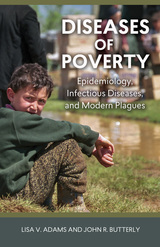 Diseases of Poverty: Epidemiology, Infectious Diseases, and Modern Plagues
Lisa V. Adams and John R. Butterly
Dartmouth College Press, 2015 Only a few decades ago, we were ready to declare victory over infectious diseases. Today, infectious diseases are responsible for significant morbidity and mortality throughout the world. This book examines the epidemiology and social impact of past and present infectious disease epidemics in the developing and developed world. In the introduction, the authors define global health as a discipline, justify its critical importance in the modern era, and introduce the Millennium Development Goals, which have become critical targets for most of the developing world. The first half of the volume provides an epidemiological overview, exploring early and contemporary perspectives on disease and disease control. An analysis of nutrition, water, and sanitation anchors the discussion of basic human needs. Specific diseases representing both “loud” and “silent” emergencies are investigated within broader structures of ecological and biological health such as economics, education, state infrastructure, culture, and personal liberty. The authors also examine antibiotic resistance, AIDS, malaria, tuberculosis, and pandemic influenza, and offer an epilogue on diseases of affluence, which now threaten citizens of countries both rich and poor. A readable guide to specific diseases, richly contextualized in environment and geography, this book will be used by health professionals in all disciplines interested in global health and its history and as a textbook in university courses on global health.
 Disembodied Souls: The Nefesh in Israel and Kindred Spirits in the Ancient Near East, with an
Richard C. Steiner
SBL Press, 2015 A reevaluation of the concept of the soul based on the latest evidence
Biblical scholars have long claimed that the Israelites “could not conceive of a disembodied nefesh [soul].” Steiner rejects that claim based on a broad spectrum of textual, linguistic, archaeological, and anthropological evidence spanning the millennia from prehistoric times to the present. The biblical evidence includes a prophecy of Ezekiel condemning women who pretend to trap the wandering souls of sleeping people. The extrabiblical evidence suggests that a belief in the existence of disembodied souls was part of the common religious heritage of the peoples of the ancient Near East.
Features
- A re-examination of the evidence for and against disembodied souls in the Hebrew Bible
- A new look at the nature and behavior of disembodied souls in the Hebrew Bible
- A new study of the meaning and sociolinguistic background of the Katumuwa inscription
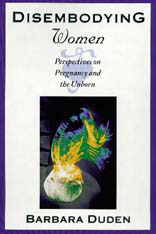 Disembodying Women: Perspectives on Pregnancy and the Unborn
Barbara Duden
Harvard University Press, 1993 In earlier times, a woman knew she was pregnant when she experienced “quickening”—she felt movement within her. Today a woman relies on what she sees in a test result or a digital sonogram image to confirm her pregnancy. A private experience once mediated by women themselves has become a public experience interpreted and controlled by medical professionals. In Disembodying Women, Barbara Duden takes a closer look at this contemporary transformation of women’s experience of pregnancy. She suggests that advances in technology and parallel changes in public discourse have refrained pregnancy as a managed process, the mother as an ecosystem, and the fetus as an endangered species.
Drawing on extensive historical research, Duden traces the graphic techniques-from anatomists’ drawings to woodcuts to X-rays and ultrasound-used to “flay” the female body and turn it inside out. Emphasizing the iconic power of the visual within twentieth-century culture, Duden follows the process by which the pregnant woman’s flesh has been peeled away to uncover scientific data. Lennart Nilsson’s now-famous photographs of the embryo published in Life magazine in the mid-1960s stand in stark contrast to representations of the invisible unborn in medieval iconography or sixteenth-century painting. Illumination has given way to illustration, ideogram to facsimile, the contemplative intuition of the body to a scientific analysis of its component parts.
New ways of seeing the body produce new ways of experiencing the body. Because technology allows us to penetrate that once secret enclosure of the womb, the image of the fetus, exposed to public gaze, has eclipsed that of woman in the public mind. Society, anxious about the health of the global environment, has focused on protecting “life” in the maternal ecosystem, in effect, pitting fetus against mother.
Duden’s reading of the body lends a unique historical and philosophical perspective to contemporary debate over fetal rights, reproductive technologies, abortion, and the right to privacy. This provocative work should reinvigorate that debate by calling into question contemporary certainties and the policies and programs they serve to justify.
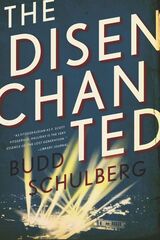 The Disenchanted
Budd Schulberg
University of Minnesota Press, 2012 Considered by some to be Budd Schulberg’s masterpiece, The Disenchanted tells the tragic story of Manley Halliday, a fabulously successful writer during the 1920s—a golden figure in a golden age—who by the late 1930s is forgotten by the literary establishment, living in Hollywood and writing for the film industry. Halliday is hired to work on a screenplay with a young writer in his twenties named Shep, who is desperate for success and idolizes Halliday. The two are sent to New York City, where a few drinks on the plane begin an epic disintegration on the part of Halliday due to the forces of alcoholism he is heroically fighting against and the powerful draw of memory and happier times. Based in part on a real-life and ill-fated writing assignment between the author and F. Scott Fitzgerald in 1939, Schulberg’s novel is at its heart a masterful depiction of Manley Halliday—at times bitter, at others sympathetic and utterly sorrowful—and The Disenchanted stands as one of the most compelling and emotional evocations of generational disillusionment and fallen American stardom.
Disenchanted Lives: Apostasy and Ex-Mormonism among the Latter-day Saints
Brooks, E. Marshall
Rutgers University Press, 2018 The Church of Jesus Christ of Latter-day Saints (LDS or Mormons), often heralded as the fastest growing religion in American history, is facing a crisis of apostasy. Rather than strengthening their faith, the study of church history and scriptures by many members pushes them away from Mormonism and into a growing community of secular ex-Mormons. In Disenchanted Lives, E. Marshall Brooks provides an intimate, in-depth ethnography of religious disenchantment among ex-Mormons in Utah. Showing that former church members were once deeply embedded in their religious life, Brooks argues that disenchantment unfolds as a struggle to overcome the spiritual, social, and ideological devotion ex-Mormons had to the religious community and not out of a lack of dedication as prominently portrayed in religious and scholarly writing on apostasy.
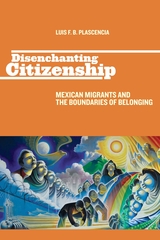 Disenchanting Citizenship: Mexican Migrants and the Boundaries of Belonging
Luis F. B. Plascencia
Rutgers University Press, 2012 Central to contemporary debates in the United States on migration and migrant policy is the idea of citizenship, and—as apparent in the continued debate over Arizona’s immigration law SB 1070—this issue remains a focal point of contention, with a key concern being whether there should be a path to citizenship for “undocumented” migrants. In Disenchanting Citizenship, Luis F. B. Plascencia examines two interrelated issues: U.S. citizenship and the Mexican migrants’ position in the United States. The book explores the meaning of U.S. citizenship through the experience of a unique group of Mexican migrants who were granted Temporary Status under the “legalization” provisions of the 1986 IRCA, attained Lawful Permanent Residency, and later became U.S. citizens. Plascencia integrates an extensive and multifaceted collection of interviews, ethnographic fieldwork, ethno-historical research, and public policy analysis in examining efforts that promote the acquisition of citizenship, the teaching of citizenship classes, and naturalization ceremonies. Ultimately, he unearths citizenship’s root as a Janus-faced construct that encompasses a simultaneous process of inclusion and exclusion. This notion of citizenship is mapped on to the migrant experience, arguing that the acquisition of citizenship can lead to disenchantment with the very status desired. In the end, Plascencia expands our understanding of the dynamics of U.S. citizenship as a form of membership and belonging.
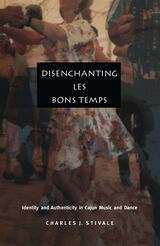 Disenchanting Les Bons Temps: Identity and Authenticity in Cajun Music and Dance
Charles J. Stivale
Duke University Press, 2003 The expression laissez les bons temps rouler—"let the good times roll"—conveys the sense of exuberance and good times associated with southern Louisiana’s vibrant cultural milieu. Yet, for Cajuns, descendants of French settlers exiled from New Brunswick and Nova Scotia in the mid-eighteenth century, this sense of celebration has always been mixed with sorrow. By focusing on Cajun music and dance and the ways they convey the dual experiences of joy and pain, Disenchanting Les Bons Temps illuminates the complexities of Cajun culture. Charles J. Stivale shows how vexed issues of cultural identity and authenticity are negotiated through the rich expressions of emotion, sensation, sound, and movement in Cajun music and dance. Stivale combines his personal knowledge and love of Cajun music and dance with the theoretical insights of Gilles Deleuze and Félix Guattari to consider representations of things Cajun. He examines the themes expressed within the lyrics of the Cajun musical repertoire and reflects on the ways Cajun cultural practices are portrayed in different genres including feature films, documentaries, and instructional dance videos. He analyzes the dynamic exchanges between musicians, dancers, and spectators at such venues as bars and music festivals. He also considers a number of thorny socio-political issues underlying Cajun culture, including racial tensions and linguistic isolation. At the same time, he describes various efforts by contemporary musicians and their fans to transcend the limitations of cultural stereotypes and social exclusion. Disenchanting Les Bons Temps will appeal to those interested in Cajun culture, issues of race and ethnicity, music and dance, and the intersection of French and Francophone studies with Anglo and American cultural studies.
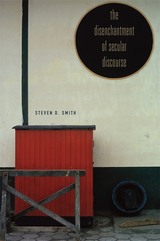 The Disenchantment of Secular Discourse
Steven D. Smith
Harvard University Press, 2010 Prominent observers complain that public discourse in America is shallow and unedifying. This debased condition is often attributed to, among other things, the resurgence of religion in public life. Steven Smith argues that this diagnosis has the matter backwards: it is not primarily religion but rather the strictures of secular rationalism that have drained our modern discourse of force and authenticity.
Thus, Rawlsian “public reason” filters appeals to religion or other “comprehensive doctrines” out of public deliberation. But these restrictions have the effect of excluding our deepest normative commitments, virtually assuring that the discourse will be shallow. Furthermore, because we cannot defend our normative positions without resorting to convictions that secular discourse deems inadmissible, we are frequently forced to smuggle in those convictions under the guise of benign notions such as freedom or equality.
Smith suggests that this sort of smuggling is pervasive in modern secular discourse. He shows this by considering a series of controversial, contemporary issues, including the Supreme Court’s assisted-suicide decisions, the “harm principle,” separation of church and state, and freedom of conscience. He concludes by suggesting that it is possible and desirable to free public discourse of the constraints associated with secularism and “public reason.”
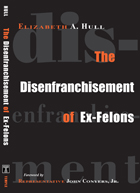 The Disenfranchisement of Ex-Felons
Elizabeth A. Hull, foreword by Representative John Conyers, Jr.
Temple University Press, 2006 In the 2004 presidential election, 4,686,539 Americans—a population greater than the city of Los Angeles—were barred from the polls. In a country that has extended suffrage to virtually every other class of citizen, ex-felons are the sole segment of our population deemed unworthy to exercise what the Supreme Court has called "the right preservative of all other rights," the right to vote.
The Disenfranchisement of Ex-Felons provides a comprehensive overview of the history, nature, and far-reaching sociological and political consequences of denying ex-felons the right to vote. Readers learn state practices in Florida and Ohio during the 2000 and 2004 presidential elections; arguments that have been used in court houses, legislatures, and the press to justify such practices; and attempts to reverse legislation through state and federal governments. In a timely appendix to the 2004 election, Elizabeth Hull makes her case that the battle for civil rights will not be won unless ex-felons, who have fulfilled their obligations to society, are restored the same rights afforded all other American citizens.
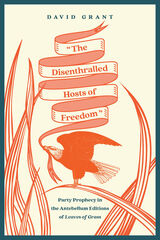 "The Disenthralled Hosts of Freedom": Party Prophecy in the Antebellum Editions of Leaves of Grass
David Grant
University of Iowa Press, 2021 Walt Whitman wrote three distinct editions of Leaves of Grass before the Civil War. During those years he was passionately committed to party anti-slavery, and his unpublished tract The Eighteenth Presidency shows that he was fully attuned to the kind of rhetoric coming out of the new Republican party. This study explores how the prophecies of the pre–war Leaves of Grass relate to the prophecy of this new party. It seeks not only to ground Whitman’s work in this context but also to bring out features of party discourse that make it relevant to literary and cultural studies.
Anti-slavery party discourse set itself the task of curing an ailing people who had grown compliant, inert, and numb; it fashioned a complete fictional world where the people could be reactivated into assuming their true role in the republic. Both as a cause and a result of this rejuvenation, they would come into their own and spread their energies over the land and over the body politic, thereby rescuing their country at the last minute from what would otherwise be the permanent dominion of slavery. Party discourse had long hinged its success on such magical transformations of the people individually and collectively, and Whitman’s celebrations of his nation’s potential need to be seen in this context: like his party, Whitman calls on the people to reject their own subordination and take command of the future, and redeem themselves as they also redeem the nation.
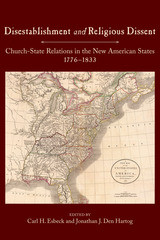 Disestablishment and Religious Dissent: Church-State Relations in the New American States, 1776-1833
Edited by Carl H. Esbeck and Jonathan J. Den Hartog
University of Missouri Press, 2026 On May 10, 1776, the Second Continental Congress sitting in Philadelphia adopted a Resolution which set in motion a round of constitution making in the colonies, several of which soon declared themselves sovereign states and severed all remaining ties to the British Crown. In forming these written constitutions, the delegates to the state conventions were forced to address the issue of church-state relations. Each colony had unique and differing
traditions of church-state relations rooted in the colony’s peoples, their country of origin, and religion.
This definitive volume, comprising twenty-one original essays by eminent historians and political scientists, is a comprehensive state-by-state account of disestablishment in the original thirteen states, as well as a look at similar events in the soon-to-be-admitted states of Vermont, Tennessee, and Kentucky. Also considered are disestablishment in Ohio (the first state admitted from the Northwest Territory), Louisiana and Missouri (the first states admitted from the Louisiana Purchase), and Florida (wrestled from Spain under U.S. pressure). The volume makes a unique scholarly contribution by recounting in detail the process of disestablishment in each of the colonies, as well as religion’s constitutional and legal place in the new states of the federal republic.
Disfiguring: Art, Architecture, Religion
Mark C. Taylor
University of Chicago Press, 1992 Disfiguring is the first sustained interpretation of the deep but often hidden links among twentieth-century art, architecture, and religion. While many of the greatest modern painters and architects have insisted on the spiritual significance of their work, historians of modern art and architecture have largely avoided questions of religion. Likewise, contemporary philosophers and theologians have, for the most part, ignored visual arts. Taylor presents a carefully structured and subtly nuanced analysis of the religious presuppositions that inform recent artistic theory and practice—and, in doing so, recasts the cultural landscape of our era.
 Disgustatory!: A Gothic Rhetoric of Consumption
Jeremy Tirrell and Kate Maddalena
University of Alabama Press, 2026 A critical exploration of how Gothic tropes infiltrate wellness discourse, revealing the rhetorical forces behind our cultural obsession with food, health, and bodily control. Disgustatory! A Gothic Rhetoric of Consumption unearths the darkness behind modern obsessions with food, health, and bodily optimization. In this provocative and richly interdisciplinary work, Jeremy Tirrell and Kate Maddalena argue that contemporary discourses around food, medicine, and the body are steeped in Gothic rhetoric—where the promise of purity and control is shadowed by monstrosity, abjection, and the uncanny. From Soylent and nootropics to probiotics and lab-grown meat, Tirrell and Maddalena show how wellness discourse is haunted by Gothic tropes: body horror, hybridity, and existential dread. Wellness culture, they argue, is not merely pseudoscience or fraud but a complex, persuasive rhetoric that blurs science and myth, purity and decay, medicine and mysticism. Disgustatory! offers a fresh framework: a “Gothic rhetoric of consumption” that explains why we are drawn to weird diets, digital detoxes, and miracle cures. Through case studies of strange substances and stranger practices—Reddit fasting rituals, magic dirt supplements, fecal transplants— Tirrell and Maddalena reveal how fear, fascination, and the fantasy of bodily control animate our health choices. Each chapter explores a rhetorical element—quantification, hybridity, abjection, optimization, and regulation—to show how food becomes a site of cultural anxiety and existential longing. This book will appeal to rhetoricians, scholars of science and technology studies, cultural theorists, and anyone interested in the strange intersections of health, horror, and persuasion.
 Dishes and Beverages of the Old South
Martha Mcculloch-Williams
University of Tennessee Press, 2017 Until its reissue in 1988 with the help of renowned southern culture scholar John Egerton, Dishes and Beverages of the Old South lingered as a rare text on southern foodways. Now, in its third edition, and with a new foreword by Sheri Castle, this pathfinding cookbook—one of the first to be written in a narrative style—is available to a new generation of southern foodies and amateur chefs. McCulloch-Williams not only provides recipes for the modern cook, but she expounds upon the importance of quality ingredients, muses on memories brought back by a good meal, and deftly recognizes that comfort goes hand in hand with southern eats. Castle navigates the third edition of Dishes and Beverages of the Old South with a clear vision of McCulloch-Williams and her southern opus, and readers and cooks alike will be invigorated by the republication of this classic work.
Martha McCulloch-Williams was born near Clarksville, Tennessee, in Montgomery County. After moving to New York, she wrote regularly for magazine assignments and published short stories, serials, poetry, and essays in various outlets, including Harper's Monthly, Harper's Bazaar, and McClure's. In 1892 she published her first book, Field Farings: A Vagrant Chronicle of Earth and Sky. The same year she also published The Tenant of Woodfell: A Story of Fate, which was followed by Two of a Trade (1894), Milre (1894), A Man and His Knife: Passages from the Life of James Bowie (1898) and Next to the Ground, Chronicles of a Countryside (1901). Her domestic books earned her the reputation as an authority on household topics; in 1895 she published The Capital Cook Book, and in 1913, at the age of sixty-five, she published Harper's Household Handbook and Dishes & Beverages of the Old South.
John Egerton (1935–2013) was a journalist well-known for his writing on civil rights, southern culture, and food. He authored or edited more than twenty books during his storied journalism career, and his Speak Now Against the Day: The Generation Before the Civil Rights Movement in the South won the Robert F. Kennedy Book Award.
Sheri Castleis a food writer and author of three cookbooks on southern food, including The Southern Living Community Cookbook, which was a finalist for the IACP Cookbook Award.
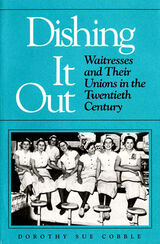 Dishing It Out: Waitresses and Their Unions in the Twentieth Century
Dorothy Sue Cobble
University of Illinois Press, 1991 Back when SOS or Adam and Eve on a raft were things to order if you were hungry but a little short on time and money, nearly one-fourth of all waitresses belonged to unions. By the time their movement peaked in the 1940s and 1950s, the women had developed a distinctive form of working-class feminism, simultaneously pushing for equal rights and pay and affirming their need for special protections. Dorothy Sue Cobble shows how sexual and racial segregation persisted in wait work, but she rejects the idea that this was caused by employers' actions or the exclusionary policies of male trade unionists. Dishing It Out contends that the success of waitress unionism was due to several factors: waitresses, for the most part, had nontraditional family backgrounds, and most were primary wage-earners. Their close-knit occupational community and sex-separate union encouraged female assertiveness and a decidedly unromantic view of men and marriage. Cobble skillfully combines oral interviews and extensive archival records to show how waitresses adopted the basic tenets of male-dominated craft unions but rejected other aspects of male union culture. The result is a book that will expand our understanding of feminism and unionism by including the gender conscious perspectives of working women.
Disinflation in Transition Economies
Marek Dabrowski
Central European University Press, 2003 The authors of this outstanding scholarly work analyze the dynamics of disinflation in transition economies in Central and Eastern Europe. The volume covers all the key factors of this process: changes in money supply and money demand; exchange rate policy; currency crisis; fiscal policy; legal status of central banks; monetary policy strategy; changes in relative prices and changes in nominal and real wages. The book contains 13 chapters related to various aspects of disinflation and covering different sets of transition countries depending on their relevance to the analyzed topic and data availability.
The Disinherited: A Novel of the 1930s by Jack Conroy
Jack Conroy & Intro by Douglas Wixson
University of Missouri Press, 1991 Douglas Wixson's introduction to this new edition of Conroy's classic provides biographical information on the aspects of Conroy's life that influenced his writings, explores the socialist movement of the 1930s, and examines the critical reaction to the novel, showing why The Disinherited has endured both as historical document and as fiction.
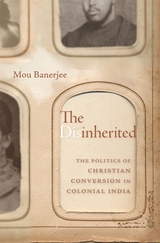 The Disinherited: The Politics of Christian Conversion in Colonial India
Mou Banerjee
Harvard University Press, 2025 An illuminating history of religious and political controversy in nineteenth-century Bengal, where Protestant missionary activity spurred a Christian conversion “panic” that indelibly shaped the trajectory of Hindu and Muslim politics.
In 1813, the British Crown adopted a policy officially permitting Protestant missionaries to evangelize among the empire’s Indian subjects. The ramifications proved enormous and long-lasting. While the number of conversions was small—Christian converts never represented more than 1.5 percent of India’s population during the nineteenth century—Bengal’s majority faith communities responded in ways that sharply politicized religious identity, leading to the permanent ejection of religious minorities from Indian ideals of nationhood.
Mou Banerjee details what happened as Hindus and Muslims grew increasingly suspicious of converts, missionaries, and evangelically minded British authorities. Fearing that converts would subvert resistance to British imperialism, Hindu and Muslim critics used their influence to define the new Christians as a threatening “other” outside the bounds of authentic Indian selfhood. The meaning of conversion was passionately debated in the burgeoning sphere of print media, and individual converts were accused of betrayal and ostracized by their neighbors. Yet, Banerjee argues, the effects of the panic extended far beyond the lives of those who suffered directly. As Christian converts were erased from the Indian political community, that community itself was reconfigured as one consecrated in faith. While India’s emerging nationalist narratives would have been impossible in the absence of secular Enlightenment thought, the evolution of cohesive communal identity was also deeply entwined with suspicion toward religious minorities.
Recovering the perspectives of Indian Christian converts as well as their detractors, The Disinherited is an eloquent account of religious marginalization that helps to explain the shape of Indian nationalist politics in today’s era of Hindu majoritarianism.
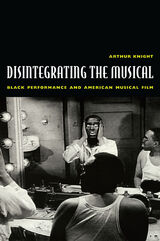 Disintegrating the Musical: Black Performance and American Musical Film
Arthur Knight
Duke University Press, 2002 From the earliest sound films to the present, American cinema has represented African Americans as decidedly musical. Disintegrating the Musical tracks and analyzes this history of musical representations of African Americans, from blacks and whites in blackface to black-cast musicals to jazz shorts, from sorrow songs to show tunes to bebop and beyond. Arthur Knight focuses on American film’s classic sound era, when Hollywood studios made eight all-black-cast musicals—a focus on Afro-America unparalleled in any other genre. It was during this same period that the first black film stars—Paul Robeson, Louis Armstrong, Lena Horne, Harry Belafonte, Dorothy Dandridge—emerged, not coincidentally, from the ranks of musical performers. That these films made so much of the connection between African Americans and musicality was somewhat ironic, Knight points out, because they did so in a form (song) and a genre (the musical) celebrating American social integration, community, and the marriage of opposites—even as the films themselves were segregated and played before even more strictly segregated audiences. Disintegrating the Musical covers territory both familiar—Show Boat, Stormy Weather, Porgy and Bess—and obscure—musical films by pioneer black director Oscar Micheaux, Lena Horne’s first film The Duke Is Tops, specialty numbers tucked into better-known features, and lost classics like the short Jammin’ the Blues. It considers the social and cultural contexts from which these films arose and how African American critics and audiences responded to them. Finally, Disintegrating the Musical shows how this history connects with the present practices of contemporary musical films like O Brother, Where Art Thou? and Bamboozled.
The Disintegrations: A Novel
Alistair McCartney
University of Wisconsin Press, 2019 "I know nothing about death, absolutely nothing," asserts the narrator of this inventive autobiographical novel. Yet he can't stop thinking about it. Detached from life in Los Angeles and his past in Australia, uncomfortable around other humans, he researches death on the Internet; mulls over distant and intimate stories of suicides, serial killers, and "natural deaths"; and wanders about LA's Holy Cross Cemetery. He's looking for answers, all the while formulating his own disquieting philosophies.
Within this dizzying investigation into the mystery of death is another mystery: who is the companion igniting these memories? This enigmatic novel blurs the line between fiction and nonfiction, story and eulogy, poetry and obituary. Wry yet somber, astringent yet tender, The Disintegrations confronts both the impossibility of understanding death and the timeless longing for immortality.
The Disinterested Witness: A Fragment of Advaita Vedanta Phenomenology
Bina Gupta
Northwestern University Press, 1998 The Disinterested Witness is a detailed, contextual, and interpretive study of the concept of saksin (or that which directly or immediately perceives) in Advaita Vedanta, and a fascinating and significant comparison of the philosophies of the East and West. Addressing a wide range of epistemological dilemmas, as well as perceived commonalities and differences between Eastern and Western philosophy, it is a major contribution to comparative philosophy and forms a vantage point for cross-cultural comparison.
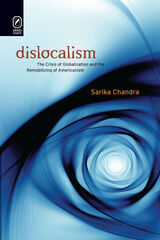 Dislocalism: The Crisis of Globalization and the Remobilizing of Americanism
Sarika Chandra
Ohio State University Press, 2011 Notwithstanding its now extensive, trans-disciplinary bibliography, the full reality of globalization remains less well understood than commonly thought. As an objective, secular phenomenon, globalization has continued to be obscured by ideological and rhetorical strategies that travel under the same name but posit it as simply the abstract-universal other of the local. Dislocalism: The Crisis of Globalization and the Remobilizing of Americanism makes such strategies and the global/local binary they reinforce into objects of critical analysis. Taking her title from a new theoretical concept at the heart of this critique, Sarika Chandra argues that the historically dominant position of the United States in the global order takes on a uniquely urgent and problematic form: globalization is experienced not only as external to the American “nation of nations” but also as something internal to it. Through close study of four discrete intellectual/cultural arenas from the 1980s to the present—management theory, the literature of immigration, travel writing, and narratives of the culinary exotic—Chandra further argues that an Americanized imperative to globalize results in a repositioning of the local to maintain national and institutional boundaries. To “dislocalize” becomes, simultaneously, to “dislocalize.” By mapping out the deeper, often hidden discursive ambiguities and historical specificities of an Americanized globalization, Dislocalism effectively redefines and re-orients the fields of American literary and cultural studies.
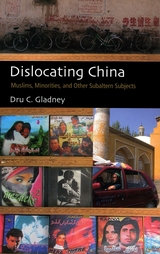 Dislocating China: Muslims, Minorities, and Other Subaltern Subjects
Dru C. Gladney
University of Chicago Press, 2004 Until quite recently, Western scholars have tended to accept the Chinese representation of non-Han groups as marginalized minorities. Dru C. Gladney challenges this simplistic view, arguing instead that the very oppositions of majority and minority, primitive and modern, are historically constructed and are belied by examination of such disenfranchised groups as Muslims, minorities, or gendered others.
Gladney locates China and Chinese culture not in some unchanging, essential "Chinese-ness," but in the context of historical and contemporary multicultural complexity. He investigates how this complexity plays out among a variety of places and groups, examining representations of minorities and majorities in art, movies, and theme parks; the invention of folklore and creation myths; the role of pilgrimages in constructing local identities; and the impact of globalization and economic reforms on non-Han groups such as the Muslim Hui. In the end, Gladney argues that just as peoples in the West have defined themselves against ethnic others, so too have the Chinese defined themselves against marginalized groups in their own society.
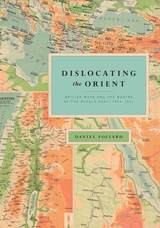 Dislocating the Orient: British Maps and the Making of the Middle East, 1854-1921
Daniel Foliard
University of Chicago Press, 2017 While the twentieth century’s conflicting visions and exploitation of the Middle East are well documented, the origins of the concept of the Middle East itself have been largely ignored. With Dislocating the Orient, Daniel Foliard tells the story of how the land was brought into being, exploring how maps, knowledge, and blind ignorance all participated in the construction of this imagined region. Foliard vividly illustrates how the British first defined the Middle East as a geopolitical and cartographic region in the nineteenth and early twentieth centuries through their imperial maps. Until then, the region had never been clearly distinguished from “the East” or “the Orient.” In the course of their colonial activities, however, the British began to conceive of the Middle East as a separate and distinct part of the world, with consequences that continue to be felt today. As they reimagined boundaries, the British produced, disputed, and finally dramatically transformed the geography of the area—both culturally and physically—over the course of their colonial era.
Using a wide variety of primary texts and historical maps to show how the idea of the Middle East came into being, Dislocating the Orient will interest historians of the Middle East, the British empire, cultural geography, and cartography.
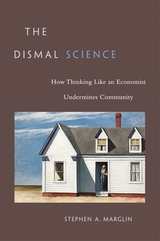 The Dismal Science: How Thinking Like an Economist Undermines Community
Stephen A. Marglin
Harvard University Press, 2008 Economists celebrate the market as a device for regulating human interaction without acknowledging that their enthusiasm depends on a set of half-truths: that individuals are autonomous, self-interested, and rational calculators with unlimited wants and that the only community that matters is the nation-state. However, as Stephen A. Marglin argues, market relationships erode community. In the past, for example, when a farm family experienced a setback—say the barn burned down—neighbors pitched in. Now a farmer whose barn burns down turns, not to his neighbors, but to his insurance company. Insurance may be a more efficient way to organize resources than a community barn raising, but the deep social and human ties that are constitutive of community are weakened by the shift from reciprocity to market relations.
Marglin dissects the ways in which the foundational assumptions of economics justify a world in which individuals are isolated from one another and social connections are impoverished as people define themselves in terms of how much they can afford to consume. Over the last four centuries, this economic ideology has become the dominant ideology in much of the world. Marglin presents an account of how this happened and an argument for righting the imbalance in our lives that this ideology has fostered.
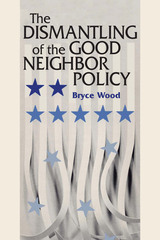 The Dismantling of the Good Neighbor Policy
By Bryce Wood
University of Texas Press, 1985 The Good Neighbor Policy was unique: a great power obligated itself not to use force in its dealings with twenty smaller powers and not to interfere in their domestic politics. It was a policy that lasted, with some perturbations, for twenty years: instituted by President Roosevelt in 1933 and carried out effectively from 1933 to 1943 by word and action, maintained during the Second World War largely as a result of British concern for continuance of Argentine beef exports, codified in the Charter of the Organization of American States in 1948, and reasserted by Truman and Acheson in 1950–51, it was covertly repudiated in Guatemala in 1954 by Eisenhower and the Dulles brothers, and not so secretly by Kennedy in the disastrous Bay of Pigs invasion of 1961. Openly shattered in the Dominican Republic by Johnson in 1965, it has since been completely abandoned in favor of the usual relationships between large and small powers. Working with documents from the Public Records Office in London and the National Archives, with recently released materials from the U.S. Department of State, and with secondary sources, Bryce Wood describes the temptations laid before the leaders of one powerful state by its occasionally recalcitrant neighbors, and the ways of reacting that were found. Having told half the story in his The Making of the Good Neighbor Policy, Wood now concludes it in the present volume. One of the chief casualties is shown to be the Organization of American States, which since 1954 has found itself badly crippled in its work to promote harmony and continued cooperation among the member states.
 Dismantling Slavery: Frederick Douglass, William Lloyd Garrison, and Formation of the Abolitionist Discourse, 1841–1851
Nilgun Anadolu-Okur
University of Tennessee Press, 2016 "In her perceptive and instructive study of abolitionist discourse, Anadolu-Okur revisits the formative ten years of the Frederick Douglass–William Lloyd Garrison collaboration and friendship that did much to shape their abolitionist witness and to encourage a more direct abolitionist rhetorical style among an ever-widening compass of men and women activists and writers in America and England. In Anadolu-Okur’s telling, the rhetorical relationships translated into radical thinking that transcended personal rivalries and reform priorities and transformed abolitionism. Anyone wanting to know the symbiosis of abolitionist style and substance will learn much from Anadolu-Okur’s insights. She shows why words mattered, and still do."
—Randall M. Miller, Saint Joseph’s University
In 1841, William Lloyd Garrison and Frederick Douglass formed a partnership that would last a decade and forever change the abolitionist movement. Throughout the stages of their extraordinary alliance, anti-slavery mobilization was accelerated, reaching its height between 1841 and 1851. Centering their arguments on emancipation, women’s equality, and suffrage, the two men worked tirelessly to publicize and recruit for their cause. Their work initiated a new discourse of social reform and critique, positioning the abolition of slavery at the center of progressive social concerns throughout the first half of the nineteenth century.
Dismantling Slavery is the first book to address these two giants of abolition—Douglass and Garrison—simultaneously. While underscoring the evolution of abolitionist discourse, Dismantling Slavery unveils the true nature of the friendship between Douglass and Garrison, a key ingredient often overlooked by scholars. Drawing on the writings, speeches, and experiences that shaped the two as abolitionists, Nilgün Anadolu-Okur’s groundbreaking study is one account of the ways in which abolitionist discourse was shaped and put to the purposes of moral and democratic reforms. In addition to turning a close eye on the relationship between Douglass and Garrison, Anadolu-Okur also details significant developments that occurred in tandem among other abolitionists and activists of the era, making for a compelling account of this pivotal decade in American history, up until the dissolution of Garrison and Douglass’s partnership.
Dismantling Slavery represents a significant interdisciplinary contribution to the study of abolitionist discourse and will appeal to a wide range of nineteenth-century scholars.
NILGÜN ANADOLU-OKUR is an associate professor of African American Studies at Temple University in Philadelphia, where she specializes in African American literature, theater and the history of Underground Railroad. She is the author of Contemporary African American Theater: Afrocentricity in the Works of Amiri Baraka, Larry Neal, and Charles Fuller, and the editor of Essays Interpreting Writings of Novelist Orhan Pamuk and Women, Islam, and Globalization in the Twenty-First Century.
Dismantling the Hills
Michael McGriff
University of Pittsburgh Press, 2008
WINNER OF THE 2007 AGNES LYNCH STARRETT POETRY PRIZE
Dismantling the Hills is a testament to working-class, rural American life. In a world of machinists, loggers, mill workers, and hairdressers, the poems collected here bear witness to a landscape, an industry, and a people teetering on the edge of ruin. From tightly constructed narratives to expansive and surreal meditations, the various styles in this book not only reflect the poet's range, but his willingness to delve into his obsessions from countless angles Full of despair yet never self-loathing, full of praise yet never nostalgic, Dismantling the Hills is both ode and elegy. McGriff's vision of blue-collar life is one of complication and contradiction, and the poems he makes are authentic, unwavering, and unapologetically American.
Dismantling the Nation: Contemporary Art in Chile
Edited by Florencia San Martín, Carla Macchiavello Cornejo, and Paula Solimano
Amherst College Press, 2023 The first volume to theorize and historicize contemporary artistic practices from Chile in the English language, Dismantling the Nation begins from a position of radical criticism against the nation-state of Chile and its capitalist, heteronormative, and extractivist rule. At a truly pivotal moment in the country’s history, when it is redefining what it wants to be, the works here propose a way of forging a feminist and decolonial future for Chile. The authors attend to practices from distinct locations in Chile, reconceptualizing geographical borders from a transnational and transdisciplinary perspective while engaging with ecocriticism and Indigenous epistemologies. This is an essential volume for anyone looking to understand the current social, political, and artistic movements in Chile.
Dismantling the NHS?: Evaluating the Impact of Health Reforms
Edited by Mark Exworthy, Russell Mannion, and Martin Powell
Bristol University Press, 2016 The 2012 Health and Social Care Act, a major initiative of the Coalition Government, set in motion what are arguably the most extensive reforms undertaken since the founding of the UK National Health Service. This book brings together contributors from the United States, the United Kingdom, and New Zealand to examine those reforms in the contexts of national health policy, service provision, governance, and more. Collectively, the contributions present a broader assessment of the trajectory of health reforms in the context of market-oriented reform and the rise of health consumerism.
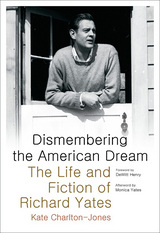 Dismembering the American Dream: The Life and Fiction of Richard Yates
Kate Charlton-Jones
University of Alabama Press, 2014 Winner of the Elizabeth Agee Prize in American Literature
Since his death in Alabama in 1992, the work of American writer Richard Yates has enjoyed a renaissance, culminating in director Sam Mendes’s adaption of the novel Revolutionary Road (starring Leonardo DiCaprio and Kate Winslet). Dismembering the American Dream is the first book-length critical study of Yates’s fiction.
Kate Charlton-Jones argues that to read Yates’s tales of disordered lives is to uncover not misery, though the lives he describes are sad ones, but a profound, enriching, and humorous understanding of human weakness and vulnerability. Yates’s narratives absorb his readers so entirely, mirroring their own emotional highs and lows with such skill, that reading becomes recognition. Yates demonstrates his ability to tease powerful human drama out of the most ordinary, quotidian moments. At the same time, Yates’s fiction displays an object lesson in the art of fine prose writing, so it is no surprise that many early fans of Yates were also established writers.
Charlton-Jones explores how Yates extends the realist form and investigates three main recurring themes of his fiction: observations about performative behavior, which are at the heart of all his fictions; his conception of the writer’s role in society; and how he envisages the development of social and sexual relationships. Furthermore, Charlton-Jones illustrates how Yates incorporates some of the concerns and methods of postmodernist writers but how, nevertheless, he resists their ontological challenges.
Drawing on the author’s personal papers and with a foreword by DeWitt Henry and an afterword by Richard Yates’s daughter Monica, Dismembering the American Dream provides an extended critical examination of the often neglected but important work of this gifted and accomplished author.
 Dismembering the Male: Men's Bodies, Britain, and the Great War
Joanna Bourke
University of Chicago Press, 1996 Some historians contend that femininity was "disrupted, constructed and reconstructed" during World War I, but what happened to masculinity? Using the evidence of letters, diaries, and oral histories of members of the military and of civilians, as well as contemporary photographs and government propoganda, Dismembering the Male explores the impact of the First World War on the male body.
Each chapter explores a different facet of the war and masculinity in depth. Joanna Bourke discovers that those who were dismembered and disabled by the war were not viewed as passive or weak, like their civilian counterparts, but were the focus of much government and public sentiment. Those suffering from disease were viewed differently, often finding themselves accused of malingering.
Joanna Bourke argues convincingly that military experiences led to a greater sharing of gender identities between men of different classes and ages. Dismembering the Male concludes that ultimately, attempts to reconstruct a new type of masculinity failed as the threat of another war, and with it the sacrifice of a new generation of men, intensified.
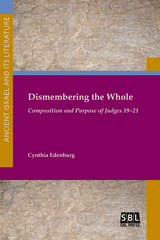 Dismembering the Whole: Composition and Purpose of Judges 19-21
Cynthia Edenburg
SBL Press, 2016 A fresh literary analysis of political polemic in the Bible
The Book of Judges ends with a bizarre narrative of sex and violence that starts with a domestic tiff and ends with the decimation of a tribe that is restored by means of abduction and rape. Cynthia Edenburg applies a fresh literary analysis, recent understandings of historical linguistics, and historical geography in her exploration of the origin of the anti-Benjamin polemic found in Judges 19–21, the growth and provenance of the book of Judges, and the shape of the Deuteronomistic History. Her study exposes how Judges 19–21 function as political polemic reflecting not the pre-monarchic period but instead the historical realities of the settlement of Benjamin during the Babylonian and Persian period.
Features:
- Methodological discussions that open each chapter
- Charts and tables
- Engagement with current research produced by scholars from around the world
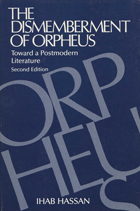 The Dismemberment of Orpheus: Toward a Postmodern Literature
Ihab Hassan
University of Wisconsin Press, 1982 In this book, the first edition of which was published in 1971 by Oxford University Press, Ihab Hassan takes Orphic dismemberment and regeneration as his metaphor for a radical crisis in art and language, culture and consciousness, which prefigures postmodern literature. The modern Orpheus, he writes, “sings on a lyre without strings.” Thus, his sensitive critique traces a hypothetical line from Sade through four modern authors—Hemingway, Kafka, Genet, and Beckett—to a literature still to come. But the line also breaks into two Interludes, one concerning ’Pataphysics, Dada, and Surrealism, and the other concerning Existentialism and Aliterature.
Combining literary history, brief biography, and critical analysis, Hassan surrounds these authors with a complement of avant-garde writers whose works also foreshadow the postmodern temper. These include Jarry, Apollinaire, Tzara, Breton, Sartre, Camus, Nathalie Sarraute, Robbe-Grillet, and in America, Cage, Salinger, Ginsberg, Barth, and Burroughs. Hassan takes account also of related contemporary developments in art, music, and philosophy, and of many works of literary theory and criticism.
For this new edition, Hassan has added a new preface and postface on the developing character of postmodernism, a concept which has gained currency since the first edition of this work, and which he himself has done much to theorize.
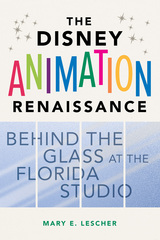 The Disney Animation Renaissance: Behind the Glass at the Florida Studio
Mary E. Lescher
University of Illinois Press, 2023 Walt Disney Feature Animation Florida opened in Orlando at the dawn of the Disney Renaissance. As a member of the crew, Mary E. Lescher witnessed the small studio’s rise and fall during a transformative era in company and movie history. Her in-depth interviews with fellow artists, administrators, and support personnel reveal the human dimension of a technological revolution: the dramatic shift from hand-drawn cel animation to the digital format that eclipsed it in less than a decade. She also traces the Florida Studio’s parallel existence as a part of The Magic of Disney Animation, a living theme park attraction where Lescher and her colleagues worked in full view of Walt Disney World guests eager to experience the magic of the company’s legendary animation process. A ground-level look at the entertainment giant, The Disney Animation Renaissance profiles the people and purpose behind a little-known studio during a historic era.
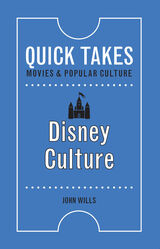 Disney Culture
Wills, John
Rutgers University Press, 2017 Over the past century, Disney has grown from a small American animation studio into a multipronged global media giant. Today, the company’s annual revenue exceeds the GDP of over 100 countries, and its portfolio has grown to include Pixar, Marvel, Lucasfilm, ABC, and ESPN. With a company so diversified, is it still possible to identify a coherent Disney vision or message?
Disney Culture proposes that there is still a unifying Disney ethos, one that can be traced back to the corporate philosophy that Walt Disney himself developed back in the 1920s. Yet, as cultural historian John Wills demonstrates, Disney’s values have also adapted to changing social climates. At the same time, the world of Disney has profoundly shaped how Americans view the world.
Wills offers a nuanced take on the corporate ideologies running through animated and live-action Disney movies from Frozen to Fantasia, from Mary Poppins to Star Wars: The Force Awakens. But Disney Culture encompasses much more than just movies as it explores the intersections between Disney’s business practices and its cultural mythmaking. Welcome to “the Disney Way.”
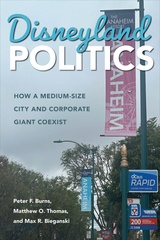 Disneyland Politics: How a Medium-Size City and Corporate Giant Coexist
Peter F. Burns, Matthew O. Thomas, and Max R. Bieganski
Temple University Press, 2026 When Walt Disney decided to build Disneyland in Anaheim, CA in the 1950s, the move presented a puzzle for Anaheim’s government: How would the city balance the interests of private investors against those of the citizenry when the two came into conflict?
Disneyland Politics is a cogent examination of this urban power struggle, which has been playing out for 70 years. The authors show how the city was initially bound to the Disneyland Imperative, which placed the theme park above everything else in the city, including other economic development projects. However, starting in the 1990s, citizens pushed back against the corporation and its supporters, wanting a more balanced public policy agenda and ultimately loosening the stranglehold Disneyland had over the city’s political order.
Recounting the history of Disney’s power in action and the tension between democratic governance and reliance on private investment, Disneyland Politics illustrates how those who pursue alternative agendas attempt to get their way, and how the fight for a more balanced public policy agenda has changed local power dynamics to be less favorable to Disneyland over time.
In the series Urban Life, Landscape, and Policy
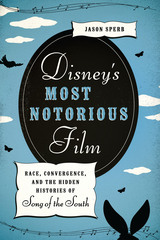 Disney's Most Notorious Film: Race, Convergence, and the Hidden Histories of Song of the South
By Jason Sperb
University of Texas Press, 2012 The Walt Disney Company offers a vast universe of movies, television shows, theme parks, and merchandise, all carefully crafted to present an image of wholesome family entertainment. Yet Disney also produced one of the most infamous Hollywood films, Song of the South. Using cartoon characters and live actors to retell the stories of Joel Chandler Harris, SotS portrays a kindly black Uncle Remus who tells tales of Brer Rabbit, Brer Fox, and the “Tar Baby” to adoring white children. Audiences and critics alike found its depiction of African Americans condescending and outdated when the film opened in 1946, but it grew in popularity—and controversy—with subsequent releases. Although Disney has withheld the film from American audiences since the late 1980s, SotS has an enthusiastic fan following, and pieces of the film—such as the Oscar-winning “Zip-a-Dee-Doo-Dah”—remain throughout Disney’s media universe. Disney’s Most Notorious Film examines the racial and convergence histories of Song of the South to offer new insights into how audiences and Disney have negotiated the film’s controversies over the last seven decades. Jason Sperb skillfully traces the film’s reception history, showing how audience perceptions of SotS have reflected debates over race in the larger society. He also explores why and how Disney, while embargoing the film as a whole, has repurposed and repackaged elements of SotS so extensively that they linger throughout American culture, serving as everything from cultural metaphors to consumer products.
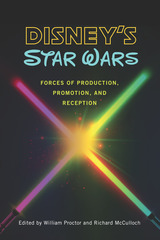 Disney's Star Wars: Forces of Production, Promotion, and Reception
William Proctor and Richard McCulloch
University of Iowa Press, 2019 In 2012, Disney purchased Lucasfilm, which meant it also inherited the beloved Star Wars franchise. This corporate marriage sent media critics and fans into a frenzy of speculation about what would happen next with the hugely popular series. Disney’s Star Wars gathers twenty-one noted fan and media studies scholars from around the world to examine Disney’s revival of the franchise.
Covering the period from Disney’s purchase through the release of The Force Awakens, the book reveals how fans anticipated, interpreted, and responded to the steady stream of production stories, gossip, marketing materials, merchandise, and other sources in the build-up to the movie’s release. From fears that Princess Leia would be turned into a “Disney princess” to collaborative brand management, the authors explore the shifting relationship between fans, texts, and media industries in the context of a crucial rebranding campaign. The result is a fascinating examination of a critical moment in the iconic series’ history.
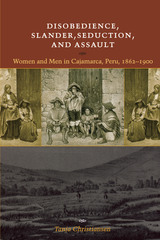 Disobedience, Slander, Seduction, and Assault: Women and Men in Cajamarca, Peru, 1862-1900
By Tanja Christiansen
University of Texas Press, 2004 Though the law and courts of nineteenth-century Peru were institutions created by and for the ruling elite, women of all classes used the system to negotiate the complexities of property rights, childrearing, and marriage, and often to defend their very definitions of honor. Drawing on the trial transcripts of Cajamarca, a northern Peruvian province, from more than a century ago, this book shares eye-opening details about life among this community, in which reputation could determine a woman's chances of survival. Exploring the processes of courtship, seduction, and familial duties revealed in these court records, historian Tanja Christiansen has unearthed a compelling panorama that includes marital strife, slander, disobedience, street brawls, and spousal abuse alongside documents that give evidence of affection and devotion. Her research also yields much new information about the protocols for conflict and cooperation among nineteenth-century Peruvian women from all social strata, and the prevalence of informal unions in an economy driven in large part by migratory male labor. Reviving a little-known aspect of Latin American history, Christiansen's book simultaneously brings to light an important microcosm of women's history during the nineteenth century.
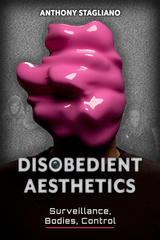 Disobedient Aesthetics: Surveillance, Bodies, Control
Anthony Stagliano
University of Alabama Press, 2024 Examines emergent forms of creative civil disobedience that have arisen in response to digital tools of bodily surveillance and control The contemporary world bristles with tools of observation and manipulation. Security cameras, social media, data mining, biometric scans, and other instruments ensnare the individual in a web of surveillance. In Disobedient Aesthetics, Anthony Stagliano exposes the use of human lives as sites of data exploitation and outlines paths of resistance. From the thermal-vision systems used on military drones, which use human body heat itself as a media object, to facial recognition platforms that use human faces as data mines, and from law enforcement tools of DNA analysis to data-driven urban governance, the realm of algorithmic surveillance and control is wide and subtle. Disobedient Aesthetics outlines interventions into the technical systems subtending data-driven surveillance and control. Stagliano maps not only the surveillant regimes afforded by recent networked technologies, but also the inventive, artistic research into ways of undermining, upending, or redirecting such technologies. The concluding chapter examines creative, critical, and collective efforts to democratize access to the technology that undergirds such scrutiny and enables ways to detect and contest its power. In a fascinating epilogue, Stagliano revisits current theories of control and offers an alternative reading of Gilles Deleuze’s oft-cited thesis on control societies: namely that it is not a matter of “finding new weapons” to undermine control but developing new techniques, new designs, new prototypes, and new modes of creative escape.
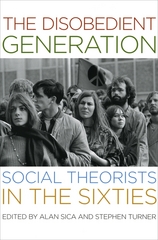 The Disobedient Generation: Social Theorists in the Sixties
Edited by Alan Sica and Stephen Turner
University of Chicago Press, 2005 The late 1960s are remembered today as the last time wholesale social upheaval shook Europe and the United States. College students during that tumultuous period—epitomized by the events of May 1968—were as permanently marked in their worldviews as their parents had been by the Depression and World War II. Sociology was at the center of these events, and it changed decisively because of them.
The Disobedient Generation collects newly written autobiographies by an international cross-section of well-known sociologists, all of them "children of the '60s." It illuminates the human experience of living through that decade as apprentice scholars and activists, encountering the issues of class, race, the Establishment, the decline of traditional religion, feminism, war, and the sexual revolution. In each case the interlinked crises of young adulthood, rapid change, and nascent professional careers shaped this generation's private and public selves. This is an intensely personal collective portrait of a generation in a time of struggle.
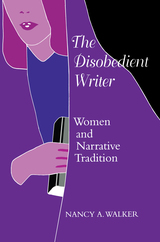 The Disobedient Writer: Women and Narrative Tradition
By Nancy A. Walker
University of Texas Press, 1995 For centuries, women who aspired to write had to enter a largely male literary tradition that offered few, if any, literary forms in which to express their perspectives on lived experience. Since the nineteenth century, however, women writers and readers have been producing "disobedient" counter-narratives that, while clearly making reference to the original texts, overturn their basic assumptions. This book looks at both canonical and non-canonical works, over a variety of fiction and nonfiction genres, that offer counter-readings of familiar Western narratives. Nancy Walker begins by probing women's revisions of two narrative traditions pervasive in Western culture: the biblical story of Adam and Eve, and the traditional fairy tales that have served as paradigms of women's behavior and expectations. She goes on to examine the works of a wide range of writers, from contemporaries Marilynne Robinson, Ursula Le Guin, Anne Sexton, Fay Weldon, Angela Carter, and Margaret Atwood to precursors Caroline Kirkland, Fanny Fern, Mary De Morgan, Mary Louisa Molesworth, Edith Nesbit, and Evelyn Sharp.
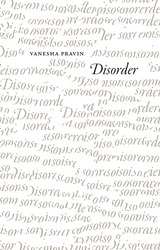 Disorder
Vanesha Pravin
University of Chicago Press, 2015 Midsummer
Cambridge, MA, 2008
Midsummer. Finally, you are used to disappointment.
A baby touches phlox. Many failures, many botched attempts,
A little success in unexpected forms. This is how the rest will go:
The gravel raked, bricks ashen, bees fattened–honey not for babes.
All at once, a rustling, whole trees in shudder, clouds pulled
Westward. You are neither here nor there, neither right nor
Wrong. The world is indifferent, tired of your insistence.
Garter snakes swallow frogs. The earthworms coil.
On your fingers, the residue of red pistils. What have you made?
What have you kept alive? Green, a secret, occult,
Grass veining the hands. Someone’s baby toddling.
And the phlox white. For now. Midsummer.
A remarkable first book, Disorder tells the story, by turns poignant and outrageous, of a family’s dislocation over four continents during the course of a hundred years. In short lyrics and longer narrative poems, Vanesha Pravin takes readers on a kaleidoscopic trek, from Bombay to Uganda, from England to Massachusetts and North Carolina, tracing the path of familial love, obsession, and the passage of time as filtered through the perceptions of family members and a host of supporting characters, including ubiquitous paparazzi, amorous vicars, and a dubious polygamist. We experience throughout a speaker forged by a deep awareness of intergenerational, multicontinental consciousness. At once global and personal, crossing ethnic, linguistic, and national boundaries in ways that few books of poetry do, Disorder bristles with quiet authority backed by a skeptical intelligence.
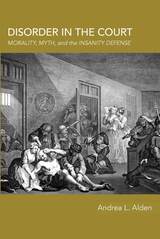 Disorder in the Court: Morality, Myth, and the Insanity Defense
Andrea L. Alden
University of Alabama Press, 2018 The first book-length rhetorical history and analysis of the insanity defense
The insanity defense is considered one of the most controversial, most misunderstood, and least straightforward subjects in the American legal system. Disorder in the Court: Morality, Myth, and the Insanity Defense traces the US legal standards for the insanity defense as they have evolved from 1843, when they were first codified in England, to 1984, when the US government attempted to revise them through the Insanity Defense Reform Act. Throughout this period “insanity” existed primarily as a legal term rather than a medical one; yet the testimony of psychiatric experts is required in cases in which an insanity defense is raised.
The adjudication of such cases by courtroom practice is caught between two different but overlapping discourses, the legal and the medical, both of which have historically sought to assert and maintain firm disciplinary boundaries. Both expert and lay audiences have struggled to understand and apply commonplace definitions of sanity, and the portrayal of the insanity defense in popular culture has only served to further frustrate such understandings.
Andrea L. Alden argues that the problems with understanding the insanity defense are, at their foundation, rhetorical. The legal concept of what constitutes insanity and, therefore, an abdication of responsibility for one’s actions does not map neatly onto the mental health professions’ understandings of mental illness and how that affects an individual’s ability to understand or control his or her actions. Additionally, there are multiple layers of persuasion involved in any effort to convince a judge, jury—or a public, for that matter—that a defendant is or is not responsible for his or her actions at a particular moment in time.
Alden examines landmark court cases such as the trial of Daniel McNaughtan, Durham v. United States, and the trial of John Hinckley Jr. that signal the major shifts in the legal definitions of the insanity defense. Combining archival, textual, and rhetorical analysis, Alden offers a close reading of texts including trial transcripts, appellate court opinions, and relevant medical literature from the time period. She contextualizes these analyses through popular texts—for example, newspaper articles and editorials—showing that while all societies have maintained some version of mental illness as a mitigating factor in their penal systems, the insanity defense has always been fraught with controversy.
 The Disorder of Political Inquiry
Keith Topper
Harvard University Press, 2005 In the past several years two academic controversies have migrated from the classrooms and courtyards of college and university campuses to the front pages of national and international newspapers: Alan Sokal’s hoax, published in the journal Social Text, and the self-named movement, “Perestroika,” that recently emerged within the discipline of political science. Representing radically different analytical perspectives, these two incidents provoked wide controversy precisely because they brought into sharp relief a public crisis in the social sciences today, one that raises troubling questions about the relationship between science and political knowledge, and about the nature of objectivity, truth, and meaningful inquiry in the social sciences. In this provocative and timely book, Keith Topper investigates the key questions raised by these and other interventions in the “social science wars” and offers unique solutions to them.
Engaging the work of thinkers such as Richard Rorty, Charles Taylor, Pierre Bourdieu, Roy Bhaskar, and Hannah Arendt, as well as recent literature in political science and the history and philosophy of science, Topper proposes a pluralist, normative, and broadly pragmatist conception of political inquiry, one that is analytically rigorous yet alive to the notorious vagaries, idiosyncrasies, and messy uncertainties of political life.
The Disorder of Things: Metaphysical Foundations of the Disunity of Science
John Dupré
Harvard University Press The great dream of philosophers and scientists for millennia has been to give us a complete account of the order of things. A powerful articulation of such a dream in this century has been found in the idea of a unity of science. With this manifesto, John Dupré systematically attacks the ideal of scientific unity by showing how its underlying assumptions are at odds with the central conclusions of science itself. In its stead, the author gives us a metaphysics much more in keeping with what science tells us about the world. Elegantly written and compellingly argued, this provocative book will be important reading for all philosophers and scholars of science.
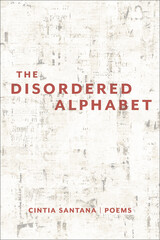 The Disordered Alphabet
Cintia Santana
Four Way Books Cintia Santana’s virtuoso debut collection, The Disordered Alphabet, reckons with the emotional anarchy of our lives, baring the difficulty of wrestling experience into language. She surveys a cosmic crossroads, “the sluices of heaven wording as we [stand] in that great rushing wind within, yet without name, turning.” These poems pay homage to inherited forms while fashioning their own shapes — Santana writes in alliterative verse, in footnotes, in epistles to consonants and vowels, in ekphrasis, in thrall. Ranging from A to Z in style, subject, and mood, Santana’s poetic encyclopedia chronicles life’s ubiquitous elegies alongside the world’s innumerable wonders — true to jumbled experience, they arrive in no particular order, or in the particular order of all the time and all at once. If “let there be” enabled light, it released every other sublime liquid, for then also “there was lie. // Lapse. And lake. Luck and leap. Little by little. Letter by letter. And it was late. / And there was bloom.”
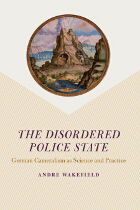 The Disordered Police State: German Cameralism as Science and Practice
Andre Wakefield
University of Chicago Press, 2009 Probing the relationship between German political economy and everyday fiscal administration, The Disordered Police State focuses on the cameral sciences—a peculiarly German body of knowledge designed to train state officials—and in so doing offers a new vision of science and practice during the seventeenth and eighteenth-centuries. Andre Wakefield shows that the cameral sciences were at once natural, technological, and economic disciplines, but, more important, they also were strategic sciences, designed to procure patronage for their authors and good publicity for the German principalities in which they lived and worked. Cameralism, then, was the public face of the prince's most secret affairs; as such, it was an essentially dishonest enterprise.
In an entertaining series of case studies on mining, textiles, forestry, and universities, Wakefield portrays cameralists in their own gritty terms. The result is a revolutionary new understanding about how the sciences created and maintained an image of the well-ordered police state in early modern Germany. In raising doubts about the status of these German sciences of the state, Wakefield ultimately questions many of our accepted narratives about science, culture, and society in early modern Europe.
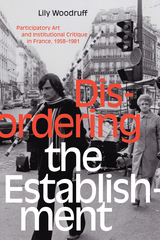 Disordering the Establishment: Participatory Art and Institutional Critique in France, 1958–1981
Lily Woodruff
Duke University Press, 2020 In the decades following World War II, France experienced both a period of affluence and a wave of political, artistic, and philosophical discontent that culminated in the countrywide protests of 1968. In Disordering the Establishment Lily Woodruff examines the development of artistic strategies of political resistance in France in this era. Drawing on interviews with artists, curators, and cultural figures of the time, Woodruff analyzes the formal and rhetorical methods that artists used to counter establishment ideology, appeal to direct political engagement, and grapple with French intellectuals' modeling of society. Artists and collectives such as Daniel Buren, André Cadere, the Groupe de Recherche d’Art Visuel, and the Collectif d’Art Sociologique shared an opposition to institutional hegemony by adapting their works to unconventional spaces and audiences, asserting artistic autonomy from art institutions, and embracing interdisciplinarity. In showing how these artists used art to question what art should be and where it should be seen, Woodruff demonstrates how artists challenged and redefined the art establishment and their historical moment.
 Disorderly Families: Infamous Letters from the Bastille Archives
Arlette Farge
University of Minnesota Press, 2021 The first English translation of letters of arrest from eighteenth century France held in the archives of the Bastille
Drunken and debauched husbands; libertine wives; vagabonding children. These and many more are the subjects of requests for confinement written to the king of France in the eighteenth century. These letters of arrest (lettres de cachet) from France’s Ancien Régime were often associated with excessive royal power and seen as a way for the king to imprison political opponents. In Disorderly Families, first published in French in 1982, Arlette Farge and Michel Foucault collect ninety-four letters from ordinary families who, with the help of hired scribes, submitted complaints to the king to intervene and resolve their family disputes. Gathered together, these letters show something other than the exercise of arbitrary royal power, and offer unusual insight into the infamies of daily life. From these letters come stories of divorce and marital conflict, sexual waywardness, reckless extravagance, and abandonment. The letters evoke a fluid social space in which life in the home and on the street was regulated by the rhythms of relations between husbands and wives, or parents and children. Most impressively, these letters outline how ordinary people seized the mechanisms of power to address the king and make demands in the name of an emerging civil order. Arlette Farge and Michel Foucault were fascinated by the letters’ explosive qualities and by how they both illustrated and intervened in the workings of power and governmentality. Disorderly Families sheds light on Foucault’s conception of political agency and his commitment to theorizing how ordinary lives come to be touched by power. This first English translation is complete with an introduction from the book’s editor, Nancy Luxon, as well as notes that contextualize the original 1982 publication and eighteenth-century policing practices.
Disorders Of Desire
Janice Irvine
Temple University Press, 1991 Disorders of Desire is the only book to tell the story of the development and impact of sexology—the scientific study of sex—in the United States. In this era of sex scandals, culture wars, "Sex in the City," and new sexual enhancement technologies (like erectile dysfunction drugs), its critique of sexology is even more relevant than it was when the book was first published in 1990. This revised and expanded edition features new chapters addressing: - The diagnosis of "sex addiction"in the 1970s and its social and political implications.
- New developments within the field of sexology, including the "Viagra Revolution" that began in the 1990s.
- The pharmaceutical industry's role in the development of sexual enhancements and the search for the female equivalent of Viagra.
Disorders Of Desire Rev: Sexuality And Gender In Modern American Sexology
Janice Irvine
Temple University Press, 2005 Disorders of Desire is the only book to tell the story of the development and impact of sexology—the scientific study of sex—in the United States. In this era of sex scandals, culture wars, "Sex in the City," and new sexual enhancement technologies (like erectile dysfunction drugs), its critique of sexology is even more relevant than it was when the book was first published in 1990.
This revised and expanded edition features new chapters addressing:
•The diagnosis of "sex addiction"in the 1970s and its social and political implications.
•New developments within the field of sexology, including the "Viagra Revolution" that began in the 1990s.
•The pharmaceutical industry's role in the development of sexual enhancements and the search for the female equivalent of Viagra.
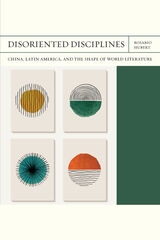 Disoriented Disciplines: China, Latin America, and the Shape of World Literature
Rosario Hubert
Northwestern University Press, 2024 An urgent call to think on the edges, surfaces, and turns of the literary artifact when it crosses cultural boundaries In the absence of specialized programs of study, abstract discussions of China in Latin America took shape in contingent critical infrastructures built at the crossroads of the literary market, cultural diplomacy, and commerce. As Rosario Hubert reveals, modernism flourishes comparatively, in contexts where cultural criticism is a creative and cosmopolitan practice. Disoriented Disciplines: China, Latin America, and the Shape of World Literature understands translation as a material act of transfer, decentering the authority of the text and connecting seemingly untranslatable cultural traditions. In this book, chinoiserie, “coolie” testimonies, Maoist prints, visual poetry, and Cold War memoirs compose a massive archive of primary sources that cannot be read or deciphered with the conventional tools of literary criticism. As Hubert demonstrates, even canonical Latin American authors, including Jorge Luis Borges, Octavio Paz, and Haroldo de Campos, write about China from the edges of philology, mediating the concrete as well as the sensorial. Advocating for indiscipline as a core method of comparative literary studies, Disoriented Disciplines challenges us to interrogate the traditional contours of the archives and approaches that define the geopolitics of knowledge.
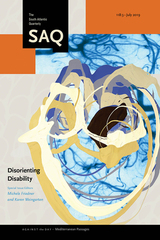 Disorienting Disability
Michele Friedner and Karen Weingarten, special issue editors
Duke University Press, 2020 This special issue examines the stakes of orienting toward or away from disability as a category and as a method. Building on Sara Ahmed's conceptualization of “orientation” as the situating of queer and raced bodies, the contributors ask how the category of disability might also change how we think of bodies orienting in space and time. Are all paths, desire lines, objects, and interpellations equally accessible? How do we conceptualize access in different spaces? What kind of theoretical and empirical turns might emerge in disorienting disability?
Drawing on feminist studies, critical race studies, and queer studies, the contributors probe the meanings of the term disability and consider disability in relation to other categories of difference such as race, gender, and class. Essays challenge the historicity of disability; push disability studies to consider questions of loss, pain, and trauma; question the notion of disability as another form of diversity; and expand arguments about the ethics of care to consider communities not conventionally defined as disabled.
Contributors. Christina Crosby, Lisa Diedrich, Arseli Dokumaci, Michele Friedner, Cassandra Hartblay, Talia Schaffer, Margrit Shildrick, Karen Weingarten
 Disorienting Politics: Chimerican Media and Transpacific Entanglements
Fan Yang
University of Michigan Press, 2024 Disorienting Politics mines 21st-century media artifacts—including films like The Martian and TV/streaming media shows such as Firefly and House of Cards—to make visible the economic, cultural, political, and ecological entanglements of China and the United States. Describing these transpacific entanglements as “Chimerica”—coined by economic historians to reference the symbiosis of China and America—Yang examines how Chimerican media, originating in the US but traversing national boundaries in their production, circulation, and consumption, co-create the figure of rising China and extend a political imagination beyond the conventional ground of the nation.
Examining how Chimerican media are shaped by and perpetuate uneven power relations, Disorienting Politics argues that the pervasive tendency among wide-ranging cultural producers to depict the Chinese state as a racialized Other in American media life diminishes the possibility of engaging transpacific entanglements as a basis for envisioning new political horizons. Such othering of China not only results in overt racism against people of Asian descent, Yang argues, but also impacts the wellbeing of people of color more generally. This interdisciplinary book demonstrates the ways in which race is embedded in geopolitics even when the subject of discussion is not the people, but the (Chinese) state. Bridging media and cultural studies, Asian and Asian American studies, geography, and globalization studies, Disorienting Politics calls for a relational politics that acknowledges the multifarious interconnectivity between people, places, media, and environment.
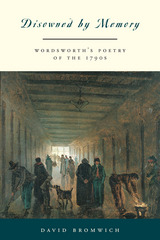 Disowned by Memory: Wordsworth's Poetry of the 1790s
David Bromwich
University of Chicago Press, 1998 Although we know him as one of the greatest English poets, William Wordsworth might not have become a poet at all without the experience of personal and historical catastrophe in his youth. In Disowned by Memory, David Bromwich connects the accidents of Wordsworth's life with the originality of his writing, showing how the poet's strong sympathy with the political idealism of the age and with the lives of the outcast and the dispossessed formed the deepest motive of his writings of the 1790s.
"This very Wordsworthian combination of apparently low subjects with extraordinary 'high argument' makes for very rewarding, though often challenging reading."—Kenneth R. Johnston, Washington Times
"Wordsworth emerges from this short and finely written book as even stranger than we had thought, and even more urgently our contemporary."—Grevel Lindop, Times Literary Supplement
"[Bromwich's] critical interpretations of the poetry itself offer readers unusual insights into Wordworth's life and work."—Library Journal
"An added benefit of this book is that it restores our faith that criticism can actually speak to our needs. Bromwich is a rigorous critic, but he is a general one whose insights are broadly applicable. It's an intellectual pleasure to rise to his complexities."—Vijay Seshadri, New York Times Book Review
 Dispatch from the Mountain State: Poems
Marc Harshman
West Virginia University Press, 2025 Dispatch from the Mountain State encompasses the trademark themes of a mature poet—death, despair, dread, and the seeming randomness with which all of these come into life. The dispatches provide, if sometimes obliquely, a keen awareness of the troubled times within which we live, whether the flashpoint be race, the recent pandemic, or the reckless onslaught of the Appalachian mining industry, which is masterfully addressed in the long poem, “The Breach.” Harshman’s distinctive vision remains both surreal and familiar, whether expressed in a sonnet or the more common free-verse characteristic of most of his work.
This collection of over forty poems sings with a fluid voice and dazzles with imagery that surprises and rings true, often underlain by and intertwined with the darker threads of our common living and dying as contemporary Appalachians. It is rare to find a poet like Harshman, who is deeply connected to the life of rural America and yet writes poetry untouched by any sentiment for the old ways found there.
 Dispatches and Dictators: Ralph Barnes for the Herald Tribune
Barbara S. Mahoney
Oregon State University Press, 2002 Oregon Book Award Winner for General Nonfiction
Dispatches and Dictators uncovers the fascinating story of Oregon native Ralph Barnes, the New York Herald Tribune’s European correspondent, who served in Paris, Rome, Moscow, Berlin, and London in the years between the two world wars. Barnes has been praised by colleagues and competitors alike as one of the best reporters of that pivotal era. But since his death in the 1940 crash of a British bomber in Yugoslavia, he has been largely forgotten.
With persistence and unusually keen insight, Ralph Barnes reported on Fascism, Communism, Nazism, and the events leading to World War II. Stalin confined Barnes to Moscow for disclosing that millions were dying during the Soviet collectivization of agriculture, and Hitler expelled Barnes from Germany for predicting the Nazi attack on the Soviet Union.
In Dispatches and Dictators, historian Barbara Mahoney chronicles the short life and brilliant career of Ralph Barnes. Her biography of this extraordinary reporter provides new insights into the tumultuous decade leading up to World War II.
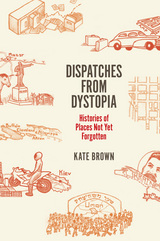 Dispatches from Dystopia: Histories of Places Not Yet Forgotten
Kate Brown
University of Chicago Press, 2015 “Why are Kazakhstan and Montana the same place?” asks one chapter of Kate Brown’s surprising and unusual journey into the histories of places on the margins, overlooked or erased. It turns out that a ruined mining town in Kazakhstan and Butte, Montana—America’s largest environmental Superfund site—have much more in common than one would think thanks to similarities in climate, hucksterism, and the perseverance of their few hardy inhabitants. Taking readers to these and other unlikely locales, Dispatches from Dystopia delves into the very human and sometimes very fraught ways we come to understand a particular place, its people, and its history.
In Dispatches from Dystopia, Brown wanders the Chernobyl Zone of Alienation, first on the Internet and then in person, to figure out which version—the real or the virtual—is the actual forgery. She also takes us to the basement of a hotel in Seattle to examine the personal possessions left in storage by Japanese-Americans on their way to internment camps in 1942. In Uman, Ukraine, we hide with Brown in a tree in order to witness the annual male-only Rosh Hashanah celebration of Hasidic Jews. In the Russian southern Urals, she speaks with the citizens of the small city of Kyshtym, where invisible radioactive pollutants have mysteriously blighted lives. Finally, Brown returns home to Elgin, Illinois, in the midwestern industrial rust belt to investigate the rise of “rustalgia” and the ways her formative experiences have inspired her obsession with modernist wastelands.
Dispatches from Dystopia powerfully and movingly narrates the histories of locales that have been silenced, broken, or contaminated. In telling these previously unknown stories, Brown examines the making and unmaking of place, and the lives of the people who remain in the fragile landscapes that are left behind.
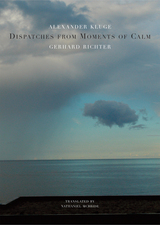 Dispatches from Moments of Calm
Alexander Kluge and Gerhard Richter
Seagull Books, 2019 On October 5, 2012, the German national newspaper Die Welt published its daily issue—but things looked . . . different. Quieter. The sensations of the day, forgotten as soon as they’re read, were missing, replaced with an unprecedented calm, extracted with care from the chaos of the contemporary.
That calm was the work of Gerhard Richter, who had been granted control over Die Welt for that single day, taking over and imprinting all thirty pages of the newspaper with his personal stamp: images from quiet moments amid unquiet times, the demotion of politics from its primary position, the privileging of the private and personal over the public, and, above all, artful, moving contrasts between sharpness and softness. He had created an unprecedented work of mass art.
Among the many people to praise the work was writer Alexander Kluge, who instantly began writing stories to accompany Richter’s images. This book, the second collaboration between Kluge and Richter, brings their stories and images together, along with new words and artworks created specifically for this volume. The result, Dispatches from Moments of Calm, is a beautiful, meditative interval in the otherwise unremitting press of everyday life, a masterpiece by two acclaimed artists working at the height of their powers.
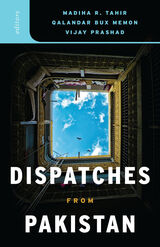 Dispatches from Pakistan
Madiha R. Tahir
University of Minnesota Press, 2014
Since 9/11, Pakistan has loomed large in the geopolitical imagination of the West. A key ally in the global war on terror, it is also the country in which Osama bin Laden was finally found and killed—and the one that has borne the brunt of much of the ongoing conflict’s collateral damage. Despite its prominence on the front lines and on the front pages, Pakistan has been depicted by Western observers simplistically in terms of its corruption, its fundamentalist Islamic beliefs, and its propensity for violence. Dispatches from Pakistan, in contrast, reveals the complexities, the challenges, and the joys of daily life in the country, from the poetry of Gilgit to the graffiti of Gwadar, from an army barrack in Punjab to the urban politics of Karachi.
This timely book brings together journalists, activists, academics, and artists to provide a rich, in-depth, and intriguing portrait of contemporary Pakistani society. Straddling a variety of boundaries—geographic, linguistic, and narrative—Dispatches from Pakistan is a vital attempt to speak for the multitude of Pakistanis who, in the face of seemingly unimaginable hardships, from drone strikes to crushing poverty, remain defiantly optimistic about their future. While engaging in conversations on issues that make the headlines in the West, the contributors also introduce less familiar dimensions of Pakistani life, highlighting the voices of urban poets, rural laborers, industrial workers, and religious-feminist activists—and recovering Pakistani society’s inquilabi (revolutionary) undercurrents and its hopeful overtones. Contributors: Mahvish Ahmad; Nosheen Ali, U of California, Berkeley; Shafqat Hussain, Trinity College; Humeira Iqtidar, King’s College London; Amina Jamal, Ryerson U; Hafeez Jamali, U of Texas at Austin; Iqbak Khattak; Zahra Malkani; Raza Mir; Hammad Nasar; Junaid Rana, U of Illinois at Urbana–Champaign; Maliha Safri, Drew U; Aasim Sajjad Akhtar, Lahore U of Management Sciences; Ayesha Siddiqa; Sultan-i-Rome, Government Jahanzeb Postgraduate College, Swat, Pakistan; Saadia Toor, Staten Island College.
Dispatches From Palestine: The Rise and Fall of the Oslo Peace Process
Graham Usher
Pluto Press, 1999 ‘Usher ... does the best foreign on-the-spot reporting from Palestine.’ Edward Said, London Review of Books
‘The reader vicariously experiences what will become great moments of popular oral history that official historians will forget in the great scheme of things.’ Middle East International
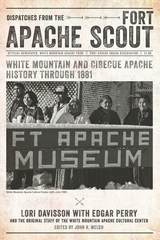 Dispatches from the Fort Apache Scout: White Mountain and Cibecue Apache History Through 1881
Lori Davisson with Edgar Perry and the Original Staff of the White Mountain Apache Cultural Center; Edited by John R. Welch
University of Arizona Press, 2016 In the 1970s, the White Mountain Apache Tribe and the Arizona Historical Society began working together on a series of innovative projects aimed at preserving, perpetuating, and sharing Apache history. Underneath it all was a group of people dedicated to this important goal. Dispatches from the Fort Apache Scout is the latest outcome of that ongoing commitment.
The book showcases and annotates dispatches published between June 1973 and October 1977, in the tribe’s Fort Apache Scout newspaper. This twenty-eight-part series of articles shared Western Apache culture and history through 1881 and the Battle of Cibecue, emphasizing early encounters with Spanish, Mexican, and American outsiders. Along the way, rich descriptions of Ndee ties to the land, subsistance, leadership, and values emerge. The articles were the result of the dogged work of journalist, librarian, and historian Lori Davisson along with Edgar Perry, a charismatic leader of White Mountain Apache culture and history programs, and his staff who prepared these summaries of historical information for the local readership of the Scout.
Davisson helped to pioneer a mutually beneficial partnership with the White Mountain Apache Tribe. Pursuing the same goal, Welch’s edited book of the dispatches stakes out common ground for understanding the earliest relations between the groups contesting Southwest lands, powerfully illustrating how, as elder Cline Griggs, Sr., writes in the prologue, “the past is present.”
Dispatches from the Fort Apache Scout is both a tribute to and continuation of Davisson’s and her colleagues’ work to share the broad outlines and unique details of the early history of Ndee and Ndee lands.
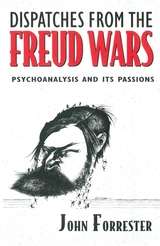 Dispatches from the Freud Wars: Psychoanalysis and Its Passions
John Forrester
Harvard University Press, 1997 In this challenging collection of essays, the noted historian and philosopher of science John Forrester delves into the disputes over Freud's dead body. With wit and erudition, he tackles questions central to our psychoanalytic century's ways of thinking and living, including the following: Can one speak of a morality of the psychoanalytic life? Are the lives of both analysts and patients doomed to repeat the incestuous patterns they uncover? What and why did Freud collect? Is a history of psychoanalysis possible?
By taking nothing for granted and leaving no cliché of psychobabble--theoretical or popular--unturned, Forrester gives us a sense of the ethical surprises and epistemological riddles that a century of tumultuous psychoanalytical debate has often obscured. In these pages, we explore dreams, history, ethics, political theory, and the motor of psychoanalysis as a scientific movement.
Forrester makes us feel that the Freud Wars are not merely a vicious quarrel or a fashionable journalistic talking point for the late twentieth century. This hundred years' war is an index of the cultural and scientific climate of modern times. Freud is indeed a barometer for understanding how we conduct our different lives.
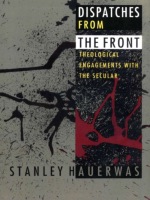 Dispatches from the Front: Theological Engagements with the Secular
Stanley Hauerwas
Duke University Press, 1994 God knows it is hard to make God boring, Stanley Hauerwas writes, but American Christians, aided and abetted by theologians, have accomplished that feat. Whatever might be said about Hauerwas—and there is plenty—no one has ever accused him of being boring, and in this book he delivers another jolt to all those who think that Christian theology is a matter of indifference to our secular society.
At once Christian theology and social criticism, this book aims to show that the two cannot be separated. In this spirit, Hauerwas mounts a forceful attack on current sentimentalities about the significance of democracy, the importance of the family, and compassion, which appears here as a literally fatal virtue. In this time of the decline of religious knowledge, when knowing a little about a religion tends to do more harm than good, Hauerwas offers direction to those who would make Christian discourse both useful and truthful. Animated by a deep commitment, his essays exhibit the difference that Christian theology can make in the shaping of lives and the world.
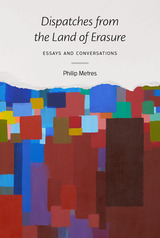 Dispatches from the Land of Erasure: Essays and Conversations
Philip Metres
University of Michigan Press, 2025 Drawn from a decade of writing and conversations by Arab American poet and writer Philip Metres, Dispatches from the Land of Erasure redefines the writer’s role as a catalyst for justice and a resister of empire. Gathering together a wide range of writing and writers, particularly from Arab and Black diaspora, Dispatches reports on what white imperial culture attempts to erase, while uplifting the voices and people who resist that erasure, offering a vision of a more just and peaceful world.
With keen insight into the lived experience of Arab Americans and other historically marginalized communities, the book explores the struggle for a just peace through reading Palestinian Arab and Israeli Jewish writers of conscience who contend with the wall of silence around the issue of Palestine. Further, Dispatches illuminates how to write a poetry of peace and justice, and how poetic activism and activist poets situate themselves in communities seeking change. Divided into four sections—Erasing the Erasures: Writing While Arab, The Poetics of Palestine, The Poetics of Justice, and The Poetics of Peacebuilding—Dispatches weaves personal essays, cultural criticism, group chats, interviews, literary analysis, reviews, and roundtables that include luminaries like Mosab Abu Toha, Hayan Charara, Sahar Khalifeh, Marwa Helal, Erika Meitner, Naomi Shihab Nye, Craig Santos Perez, and M. NourbeSe Philip. Together, the book models the crucial need for robust dialogue to overcome the echo chamber that limits the growth and reach of social movements and to dream of a future beyond the land of erasure.
 Dispatches from the Revolution: Russia 1916-1918
Morgan Philips Price
Duke University Press, 1998 A special correspondent for the Manchester Guardian, Morgan Philips Price was one of the few Englishmen in Russia during all phases of the Revolution. Although his Bolshevik sympathies accorded him an insider’s perspective on much of the turmoil, his reports were often heavily revised or suppressed. In Dispatches from the Revolution, Tania Rose collects for the first time Price’s correspondence from Russia—official and unofficial, published and unpublished—to reveal a side of Russian life and politics that fell largely unreported in the years before, during, and after the Revolution.
This collection includes Price’s pre-censored observations and comment, written for a range of British publications, as well as letters, postcards, and other writings. A foreword by Eric Hobsbawm and introductory material by Rose place Price’s observations in biographical and historical context. Dispatches from the Revolution offers an account of the Russian Revolution from an eyewitness whose political commitment, fluency in Russian, and extensive travel far beyond the cities permitted him to write, uniquely, not only of metropolitan news and politics, but also of the experiences and issues signficant to ordinary peasants, workers, and soldiers in remote areas of the Russian empire.
An important source to scholars of Russian history, this book will also appeal to general readers with interests in Russia, journalism, and world affairs.
 Dispelling Fantasies: Authors of Color Reimagine a Genre
Joy Sanchez-Taylor
Ohio State University Press, 2025 In Dispelling Fantasies, Joy Sanchez-Taylor examines how authors of color, such as R. F. Kuang, N. K. Jemisin, Nnedi Okorafor, Tomi Adeyemi, Tasha Suri, Aiden Thomas, Nghi Vo, and Marlon James, among others, offer critical counterpoints to the history of white-dominated, Eurocentric fantasy. The traditional fantasy that these authors are writing against reinforces Christian virtues and colonial, white supremacist structures; Sanchez-Taylor argues that its racial tropes are tied to a history of colonization and Christian missionary practices, with popular fantasy narratives often depicting Indigenous groups as primitive, deviant peoples in need of salvation. Such representations are based on a Western binary of rational versus magical and are influenced by tenets of Christianity, ultimately contributing to depictions of “the dark fantastic” or fantasy worlds where dark and othered characters are implicitly portrayed as evil and irredeemable. Organized around four Christian ideals that appear frequently in Western fantasy texts—virtue, envy, patriarchy, and salvation—Dispelling Fantasies demonstrates how non-Eurocentric fantasy worlds offer alternative versions of morality, race, gender, and sexuality and make space for authors to move away from hierarchical, binary systems of good and evil.
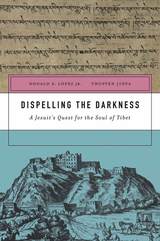 Dispelling the Darkness: A Jesuit’s Quest for the Soul of Tibet
Donald S. Lopez Jr. and Thupten Jinpa
Harvard University Press, 2017 In a remote Himalayan village in 1721, the Jesuit priest Ippolito Desideri awaited permission from Rome to continue his mission to convert the Tibetan people to Christianity. In the meantime, he forged ahead with an ambitious project: a treatise, written in classical Tibetan, that would refute key Buddhist doctrines. If he could convince the Buddhist monks that these doctrines were false, thought Desideri, he would dispel the darkness of idolatry from Tibet.
Offering a fascinating glimpse into the historical encounter between Christianity and Buddhism, Dispelling the Darkness brings Desideri’s Tibetan writings to readers of English for the first time. This authoritative study provides extended excerpts from Inquiry concerning the Doctrines of Previous Lives and Emptiness, Desideri’s unfinished masterpiece, as well as a full translation of Essence of the Christian Religion, a companion work that broadens his refutation of Buddhism. Desideri possessed an unusually sophisticated understanding of Buddhism and a masterful command of the classical Tibetan language. He believed that only careful argumentation could demolish the philosophical foundations of Buddhism, especially the doctrines of rebirth and emptiness that prevented belief in the existence of God. Donald Lopez and Thupten Jinpa’s detailed commentary reveals how Desideri deftly used Tibetan literary conventions and passages from Buddhist scriptures to make his case.
When the Vatican refused Desideri’s petition, he returned to Rome, his manuscripts in tow, where they languished unread in archives. Dispelling the Darkness brings these vital texts to light after centuries of neglect.
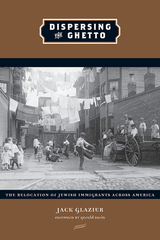 Dispersing the Ghetto: The Relocation of Jewish Immigrants Across America
Jack Glazier
Michigan State University Press, 2005 In the early 20th century, the population of New York City’s Lower East Side swelled with vast numbers of eastern European Jewish immigrants. The tenements, whose inhabitants faced poverty and frequent unemployment, provoked the hostile attention of immigration restrictionists, many of whom disdained Jews, racial minorities, and foreigners as inferior. Accordingly, they aimed to stifle the growth of dense ethnic settlements by curtailing immigration.
Dispersing the Ghetto is the first book to describe in detail an important but little-known chapter in American immigration history, that of the Industrial Removal Office (IRO), founded in 1901. Established American Jews—arrivals from the German states only a generation before—felt vulnerable. They feared their security was at risk owing to the rising tide of Russian Jews on the east coast. German American Jews believed they too might become the objects of anti-Semitic scorn, which would be disastrous for German and Russian Jews alike if it were allowed to shape public policy. As a defensive measure to undercut the immigration restrictionist movement, American Jews of German origin established the Industrial Removal Office to promote the relocation of the immigrants to the towns and cities of the nation’s interior. Until the onset of World War I, the IRO directed the resettlement of Jewish immigrants from New York and other port cities to hundreds of communities nationwide.
Drawing on a variety of sources, including the IRO archive, first-person accounts of resettlement, local records, and the Jewish press, Glazier recounts the operation of the IRO and the complex relationship between two sets of Jewish immigrants.
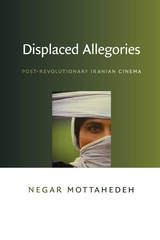 Displaced Allegories: Post-Revolutionary Iranian Cinema
Negar Mottahedeh
Duke University Press, 2008 Following the 1979 Iranian Revolution, Iran’s film industry, in conforming to the Islamic Republic’s system of modesty, had to ensure that women on-screen were veiled from the view of men. This prevented Iranian filmmakers from making use of the desiring gaze, a staple cinematic system of looking. In Displaced Allegories Negar Mottahedeh shows that post-Revolutionary Iranian filmmakers were forced to create a new visual language for conveying meaning to audiences. She argues that the Iranian film industry found creative ground not in the negation of government regulations but in the camera’s adoption of the modest, averted gaze. In the process, the filmic techniques and cinematic technologies were gendered as feminine and the national cinema was produced as a woman’s cinema. Mottahedeh asserts that, in response to the prohibitions against the desiring look, a new narrative cinema emerged as the displaced allegory of the constraints on the post-Revolutionary Iranian film industry. Allegorical commentary was not developed in the explicit content of cinematic narratives but through formal innovations. Offering close readings of the work of the nationally popular and internationally renowned Iranian auteurs Bahram Bayza’i, Abbas Kiarostami, and Mohsen Makhmalbaf, Mottahedeh illuminates the formal codes and conventions of post-Revolutionary Iranian films. She insists that such analyses of cinema’s visual codes and conventions are crucial to the study of international film. As Mottahedeh points out, the discipline of film studies has traditionally seen film as a medium that communicates globally because of its dependence on a (Hollywood) visual language assumed to be universal and legible across national boundaries. Displaced Allegories demonstrates that visual language is not necessarily universal; it is sometimes deeply informed by national culture and politics.
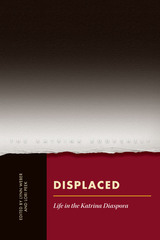 Displaced: Life in the Katrina Diaspora
Edited by Lynn Weber and Lori Peek
University of Texas Press, 2012 Hurricane Katrina forced the largest and most abrupt displacement in U.S. history. About 1.5 million people evacuated from the Gulf Coast preceding Katrina’s landfall. New Orleans, a city of 500,000, was nearly emptied of life after the hurricane and flooding. Katrina survivors eventually scattered across all fifty states, and tens of thousands still remain displaced. Some are desperate to return to the Gulf Coast but cannot find the means. Others have chosen to make their homes elsewhere. Still others found a way to return home but were unable to stay due to the limited availability of social services, educational opportunities, health care options, and affordable housing. The contributors to Displaced have been following the lives of Katrina evacuees since 2005. In this illuminating book, they offer the first comprehensive analysis of the experiences of the displaced. Drawing on research in thirteen communities in seven states across the country, the contributors describe the struggles that evacuees have faced in securing life-sustaining resources and rebuilding their lives. They also recount the impact that the displaced have had on communities that initially welcomed them and then later experienced “Katrina fatigue” as the ongoing needs of evacuees strained local resources. Displaced reveals that Katrina took a particularly heavy toll on households headed by low-income African American women who lost the support provided by local networks of family and friends. It also shows the resilience and resourcefulness of Katrina evacuees who have built new networks and partnered with community organizations and religious institutions to create new lives in the diaspora.
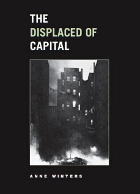 The Displaced of Capital
Anne Winters
University of Chicago Press, 2004 Winner of the 2005 Lenore Marshall Poetry Prize.
The long-awaited follow-up to The Key to the City—a finalist for the National Book Critics Circle Award in 1986—Anne Winters's The Displaced of Capital emanates a quiet and authoritative passion for social justice, embodying the voice of a subtle, sophisticated conscience.
The "displaced" in the book's title refers to the poor, the homeless, and the disenfranchised who populate New York, the city that serves at once as gritty backdrop, city of dreams, and urban nightmare. Winters also addresses the culturally, ethnically, and emotionally excluded and, in these politically sensitive poems, writes without sentimentality of a cityscape of tenements and immigrants, offering her poetry as a testament to the lives of have-nots. In the central poem, Winters witnesses the relationship between two women of disparate social classes whose friendship represents the poet's political convictions. With poems both powerful and musical, The Displaced of Capital marks Anne Winters's triumphant return and assures her standing as an essential New York poet.
A Displaced Person: The Later Life and Extraordinary Adventures of Private Ivan Chonkin
Vladimir Voinovich
Northwestern University Press, 2012 In A Displaced Person—the third book in a trilogy that began with the modern classic The Life and Extraordinary Adventures of Private Ivan Chonkin and continued with Pretender to the Throne—author Vladimir Voinovich turns his satirical eye to the difficult last days of the Soviet Communism he so lampooned. Often absurd, A Displaced Person follows a series of random events that brings Chonkin to the United States, where he becomes a farmer and, eventually, a member of a congressional delegation sent to the Soviet Union in 1989, during perestroika, to discuss agriculture with the Soviet leader Mikhail Gorbachev. A Displaced Person carries on the rich Russian tradition of an essentially comic response to the absurdities inherent in totalitarian regimes.
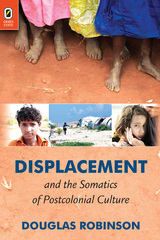 Displacement and the Somatics of Postcolonial Culture
Douglas Robinson
Ohio State University Press, 2013 Displacement and the Somatics of Postcolonial Culture is Douglas Robinson’s study of postcolonial affect—specifically, of the breakdown of the normative (regulatory) circulation of affect in the refugee experience and the colonial encounter, the restructuring of that regulatory circulation in colonization, and the persistence of that restructuring in decolonization and intergenerational trauma. Robinson defines “somatics” as a cultural construction of “reality” and “identity” through the regulatory circulation of evaluative affect. This book is divided into three essays covering the refugee experience, colonization and decolonization, and intergenerational trauma. Each essay contains a review of empirical studies of its main topic, a study of literary representations of that topic, and a study of postcolonial theoretical spins. The literary representations in the refugee essay are a novel and short story by the Haitian writer Edwidge Danticat; in the colonization essay a short film by Javier Fesser and a novella by Mahasweta Devi (translated by Gayatri Chakravorty Spivak); and in the intergenerational trauma essay novels by James Welch and Toni Morrison and a short story by Percival Everett. The first essay’s theoretical spins include Deleuze and Guattari on nomad thought and Iain Chambers on migrancy; the second’s, Nietzsche’s Genealogy of Morals and theories of postcolonial affect in Bhabha and Spivak; the third’s, work on historical trauma by Cathy Caruth and Dominic LaCapra.
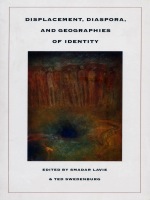 Displacement, Diaspora, and Geographies of Identity
Smadar Lavie and Ted Swedenburg, eds.
Duke University Press, 1996 Displacement, Diaspora, and Geographies of Identity challenges conventional understandings of identity based on notions of nation and culture as bounded or discrete. Through careful examinations of various transnational, hybrid, border, and diasporic forces and practices, these essays push at the edge of cultural studies, postmodernism, and postcolonial theory and raise crucial questions about ethnographic methodology. This volume exemplifies a cross-disciplinary cultural studies and a concept of culture rooted in lived experience as well as textual readings. Anthropologists and scholars from related fields deploy a range of methodologies and styles of writing to blur and complicate conventional dualisms between authors and subjects of research, home and away, center and periphery, and first and third world. Essays discuss topics such as Rai, a North African pop music viewed as westernized in Algeria and as Arab music in France; the place of Sephardic and Palestinian writers within Israel’s Ashkenazic-dominated arts community; and the use and misuse of the concept “postcolonial” as it is applied in various regional contexts. In exploring histories of displacement and geographies of identity, these essays call for the reconceptualization of theoretical binarisms such as modern and postmodern, colonial and postcolonial. It will be of interest to a broad spectrum of scholars and students concerned with postmodern and postcolonial theory, ethnography, anthropology, and cultural studies. Contributors. Norma Alarcón, Edward M. Bruner, Nahum D. Chandler, Ruth Frankenberg, Joan Gross, Dorinne Kondo, Kristin Koptiuch, Smadar Lavie, Lata Mani, David McMurray, Kirin Narayan, Greg Sarris, Ted Swedenburg
The Displacement of Borders among Russian Koreans in Northeast Asia
Hyun Gwi Park
Amsterdam University Press, 2018 Since the nineteenth century, ethnic Koreans have represented a small yet significant portion of the population of the Russian Far East, but until now, the phenomenon has been largely understudied. Based on extensive historical and ethnographic research, this is the first book in English to chart the contemporary social life of Koreans in the complex borderland region. Dispelling the commonly held notion that Koreans were completely removed from the region during the country's attempt to 'cleanse' its borders in 1937, Hyun Gwi Park reveals timely new insights into the historical and current experiences of Koreans living along the Eurasian frontier.
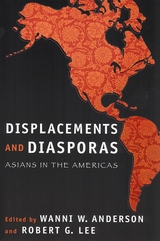 Displacements and Diasporas: Asians in the Americas
Anderson, Wanni W.
Rutgers University Press, 2005 Asians have settled in every country in the Western Hemisphere; some are recent arrivals, other descendents of immigrants who arrived centuries ago. Bringing together essays by thirteen scholars from the humanities and social sciences, Displacements and Diasporas explores this genuinely transnational Asian American experience-one that crosses the Pacific and traverses the Americas from Canada to Brazil, from New York to the Caribbean.
With an emphasis on anthropological and historical contexts, the essays show how the experiences of Asians across the Americas have been shaped by the social dynamics and politics of settlement locations as much as by transnational connections and the economic forces of globalization. Contributors bring new insights to the unique situations of Asian communities previously overlooked by scholars, such as Vietnamese Canadians and the Lao living in Rhode Island. Other topics include Chinese laborers and merchants in Latin America and the Caribbean, Japanese immigrants and their descendants in Brazil, Afro-Amerasians in America, and the politics of second-generation Indian American youth culture.
Together the essays provide a valuable comparative portrait of Asians across the Americas. Engaging issues of diaspora, transnational social practice and community building, gender, identity, institutionalized racism, and deterritoriality, this volume presents fresh perspectives on displacement, opening the topic up to a wider, more interdisciplinary terrain of inquiry and teaching.
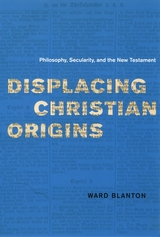 Displacing Christian Origins: Philosophy, Secularity, and the New Testament
Ward Blanton
University of Chicago Press, 2007 Recent critical theory is curiously preoccupied with the metaphors and ideas of early Christianity, especially the religion of Paul. The haunting of secular thought by the very religion it seeks to overcome may seem surprising at first, but Ward Blanton argues that this recent return by theorists to the resources of early Christianity has precedent in modern and ostensibly secularizing philosophy, from Kant to Heidegger.
Displacing Christian Origins traces the current critical engagement of Agamben, Derrida, and Žižek, among others, back into nineteenth- and early-twentieth-century philosophers of early Christianity. By comparing these crucial moments in the modern history of philosophy with exemplars of modern biblical scholarship—David Friedrich Strauss, Adolf Deissmann, and Albert Schweitzer—Blanton offers a new way for critical theory to construe the relationship between the modern past and the biblical traditions to which we seem to be drawn once again.
An innovative contribution to the intellectual history of biblical exegesis, Displacing Christian Origins will promote informed and fruitful debate between religion and philosophy.
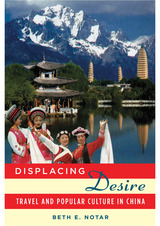 Displacing Desire: Travel and Popular Culture in China
Beth E. Notar
University of Hawaii Press, 2006 Why do millions of people from around the world flock to Dali, a small borderland town in the Himalayan foothills of southwest China? "Lonely planeteers"— American, European, and Israeli backpackers named for the guidebook they carry—trek halfway across the globe to "get off the beaten track," yet converge here to drink coffee, eat banana pancakes, and share music from home. Coastal Chinese who are prospering in the phenomenal economic growth of China’s reform era travel thousands of miles to sing songs and dress up as their favorite characters from a revolutionary-era movie musical. Overseas Chinese from Southeast Asia as well as a new generation of mainland youth follow in the footsteps of heroes and villains from Hong Kong martial arts novels, seeking an experience of a Buddhist "wild, wild, West" at a martial arts theme park dubbed "Hollywood East," or "Daliwood."
Inspired by representations in popular culture that engender fantasies of the exotic, these tourists, Western and Chinese, journey to Dali, Yunnan, in search of an imagined place where they can indulge their craving for authenticity, display their status in the present, and act out their nostalgia for the past. Based on more than a decade of ethnographic research, Beth Notar explores struggles over place as people in Dali attempt to represent their historical identity and define their future.
Displacing Desire takes representation into the realm of practice to consider the ways in which those who are represented must contend with their image in popular culture and the material after-effects of representations even decades after their original production. It contributes to an exploration of travel as performance of nostalgia, fantasy, and status. More specifically it contributes to an understanding of the growth of consumer culture in China, examining what China’s modernization process and market economy mean for different social actors in their struggles over power and place.
Displacing Homophobia
Ronald R. Butters, John M. Clum, and Michael Moon, eds.
Duke University Press, 1989 The editors have gathered essays that not only make a major contribution to the effort to replace homophobic discourse, but also speak persuasively to all readers interested in literature or literary history, contemporary theory, and popular culture.
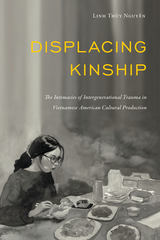 Displacing Kinship: The Intimacies of Intergenerational Trauma in Vietnamese American Cultural Production
Linh Thuy Nguyen
Temple University Press, 2024 Nearly fifty years after the end of the war in Vietnam, American children of Vietnamese refugees continue to process the meanings of the war and its consequences through creative work. Displacing Kinship examines how Vietnamese American cultural productions register lived experiences of racism in their depictions of family life and marginalization.
Second-generation texts illustrate how the children of refugees from Vietnam are haunted by trauma and a violent, ever-present, but mostly unarticulated past. Linh Thủy Nguyễn's analysis reveals that present experiences of economic insecurity and racism also shape these narratives of familial loss.
Developing a theory of intergenerational trauma, Nguyễn rethinks how U.S. imperialism, the discourse of communism, and assimilation impacted families across generations. Through ethnic studies and feminist and queer-of-color critique, Displacing Kinship offers a critical approach for reading family tensions and interpersonal conflict as affective investments informed by the material, structural conditions of white supremacy and racial capitalism.
|
|

